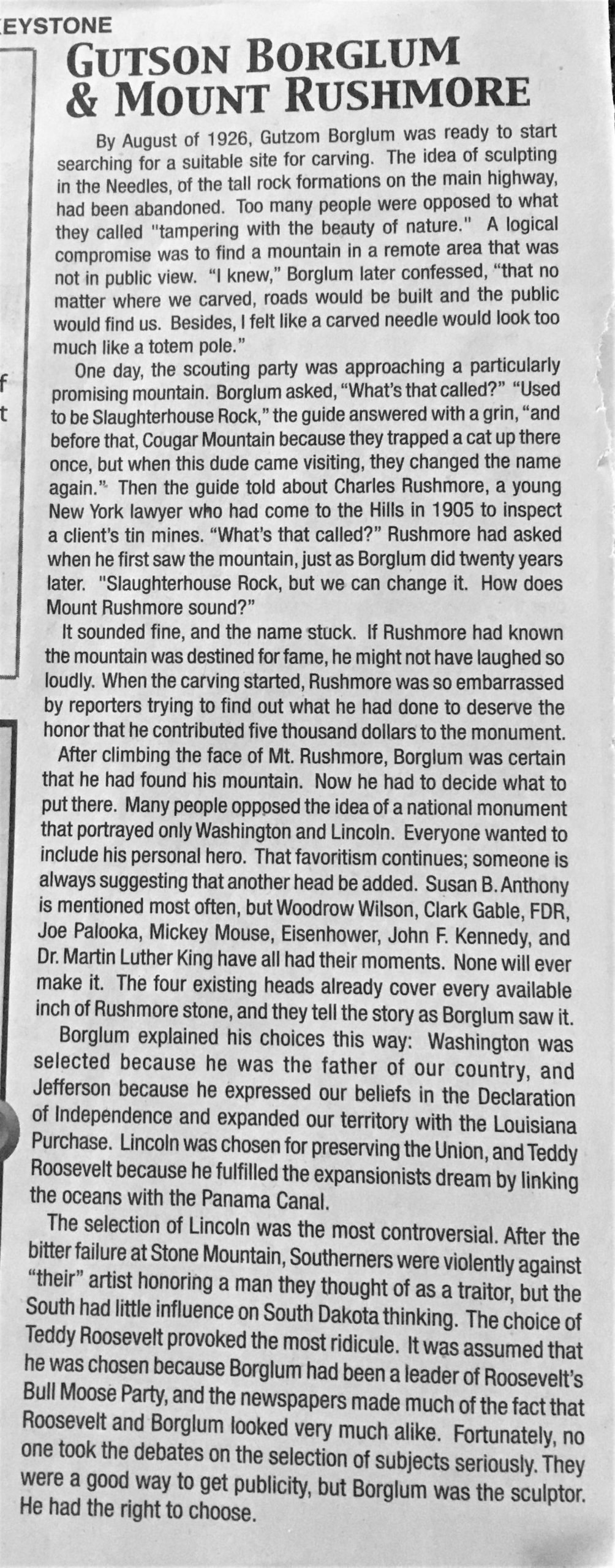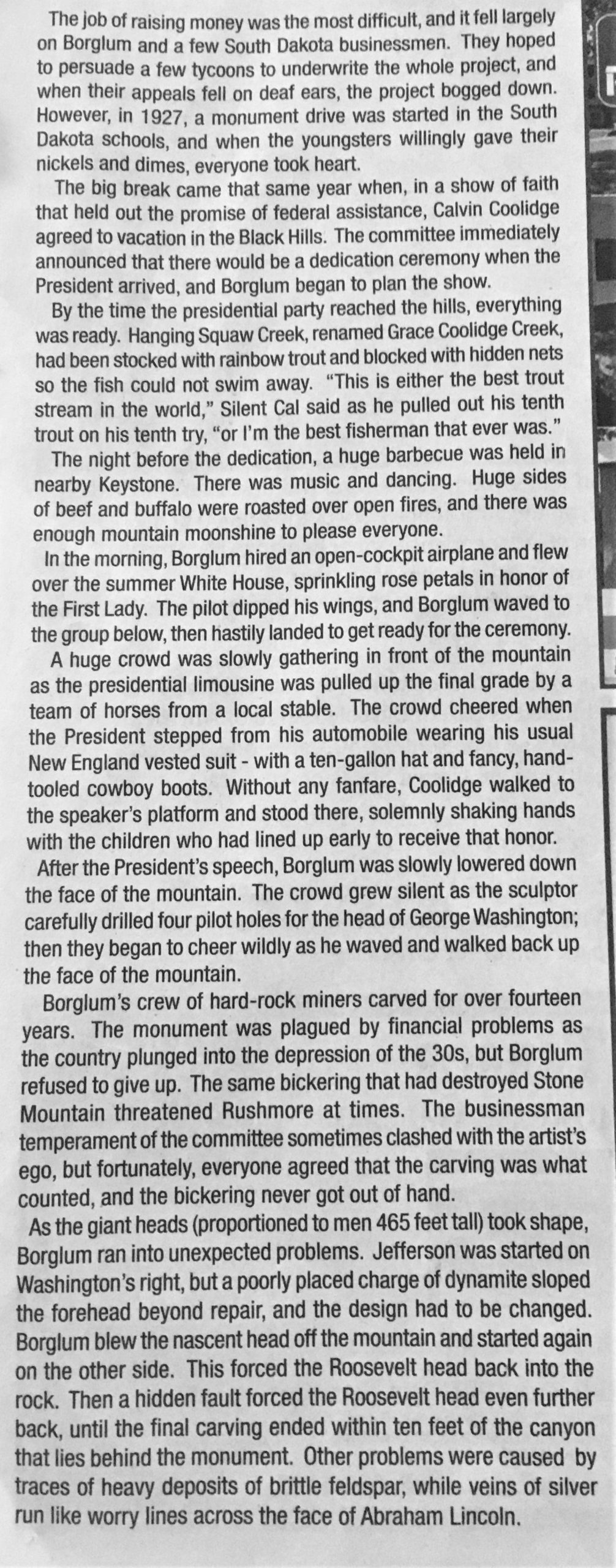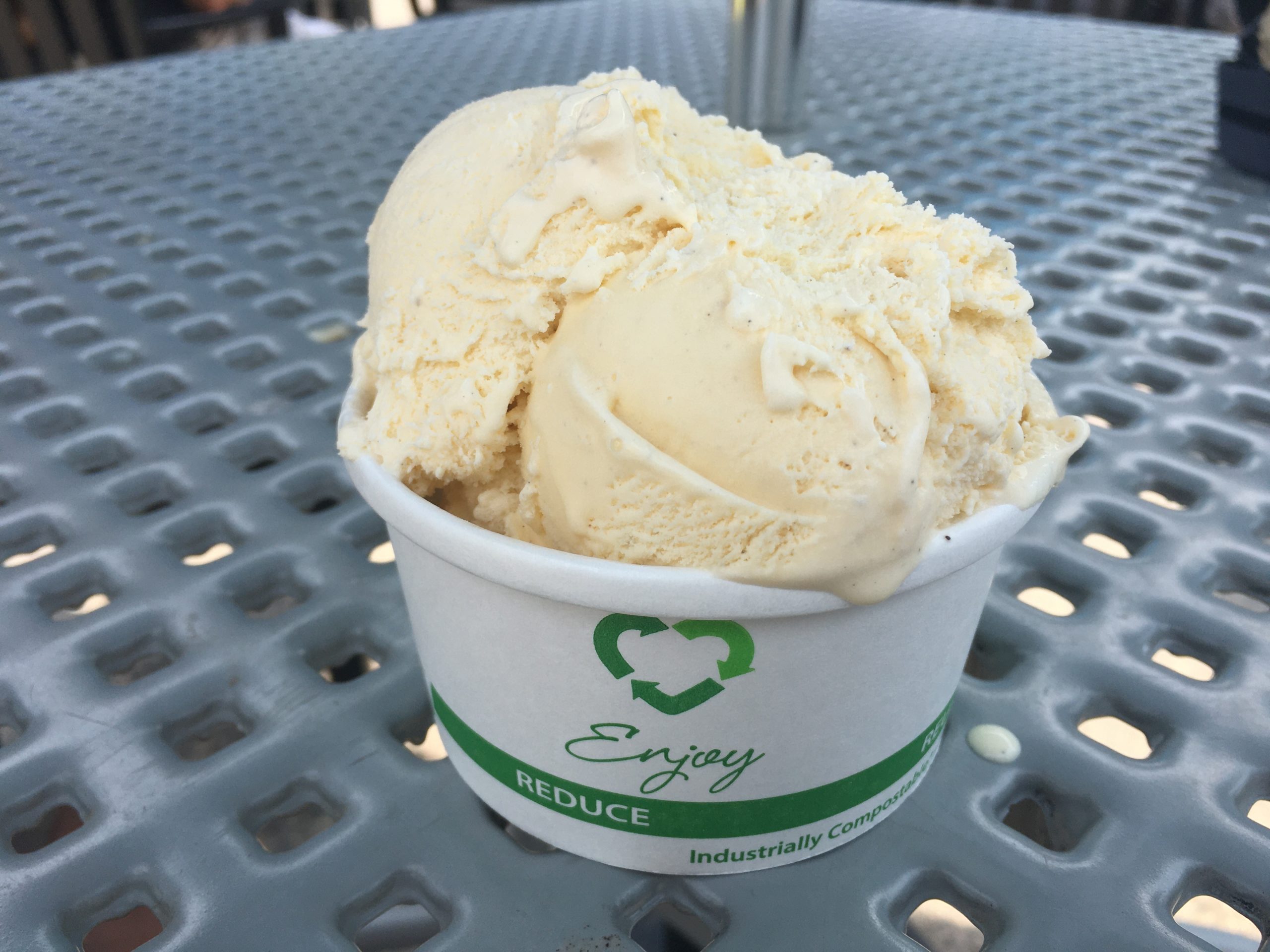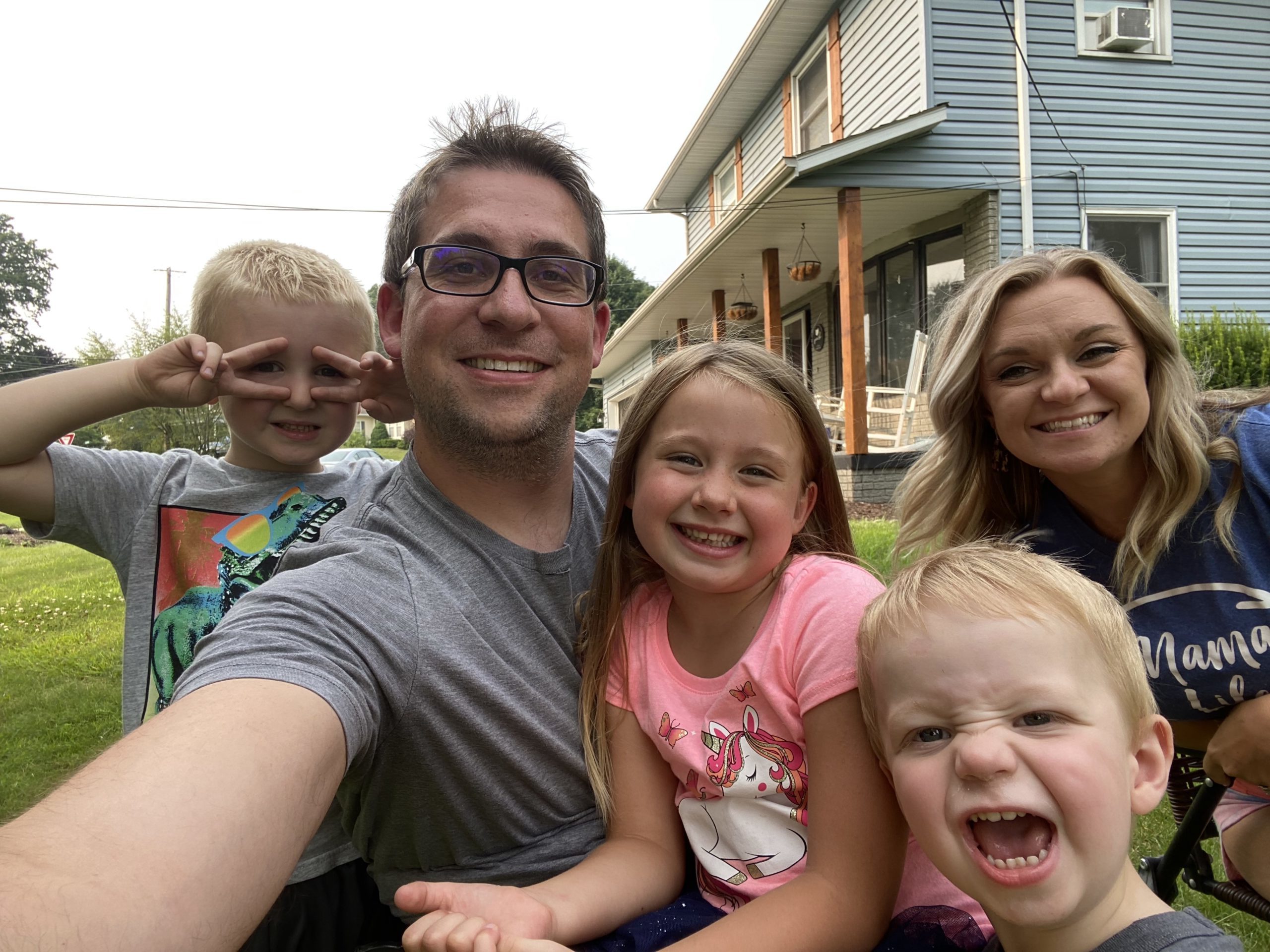Southern Hills RV Park, Hermosa, South Dakota
His mother (Rebekah) said to him (Jacob), “My son, (“if it comes to that”- -from another translation) let the curse fall on me. Just do what I say; go and get them for me.” So he went and got (the goats) and brought them to his mother, and she prepared some tasty food, just the way his father (Isaac) liked it. Then Rebekah took the best clothes of Esau her older son . . . and put them on her younger son Jacob. She also covered his hands and the smooth part of his neck with the goatskins. Then she handed to her son Jacob the tasty food and the bread she had made. . . and he went to his father. ~ Genesis 27:13-18a She’s thought of everything. The food. Making Jacob smell like his brother by putting Esau’s clothes on him. Covering his hands and neck with the skins from the goats she/they slaughtered to make the stew. I’m thinking – – how hairy must this guy be that his skin felt like goat skin?? But that’s not really the point here, is it? We don’t read Jacob’s thoughts on all this, only that he went along with his mother’s scheme with little discussion. As I said yesterday, his only concern seemed to be getting caught. Remember, he’s already coerced the birthright from Esau at an earlier time (we don’t know how long ago that was). So maybe Jacob felt it was his right to receive his father’s blessing. Maybe he originally thought he’d earn it somehow. Maybe he felt that since his father and mother were grieved over Esau’s choice of wives, and (possibly) his distance from God, Isaac would break with tradition and hand everything over to Jacob. In addition, I’d bet that Rebekah has told Jacob of what God told her when he was born – several times. Still. God is Truth. “Helping him along” with deception isn’t what He wants from us – – not ever. But He is sovereign and as such, knew eons ago what Rebekah and Jacob would be up to. God chose to use their failings to further His plan. To bring good out of evil. But that doesn’t make what they did right. Far from it. We should praise God that He sees beyond our sin and chooses to love and use us anyway. That He graciously provided to bring good out of evil when He sent His Son to die for us.

There are four faces on Mt Rushmore, carved in a mountain of stone Men who lived and died for a nation, giants in a land all our own. . . .
So sang the New Christy Minstrels on their “Land of Giants” Album (which I happened to own when I still lived at home, many, many years ago 😊). If you want to listen, you can find the recording on YouTube. Actually, if you just let it play, they’ll play the entire album for you!

So as you’ve probably figured out by now, we finally scooted over to see Mt Rushmore today.

This is the closest I could find. : (
I’m in awe of how someone can look at that rock mountain and think, “Hey, I want to put four presidents up there!”
There really are no words to describe the “awe-factor” of this monument! Later in the day, I watched as others were entering the Park for the first time, and most had the same reaction we did – – stop and stare in wonder. Makes you wonder how we’ll be when we get to Heaven, doesn’t it??
We spent the $10 and each got handheld wands to listen to the information they provided as we walked the Presidential Trail. It’s about a mile long, but there are a bunch of steps both down and back up. We were surprised that no one mentioned that as a warning to people. We think some would have a hard time with this trail. Anyway, the wands were a great investment, filling our brains with a lot of interesting information, most of which we’ve probably forgotten. 😊 One of the things that really struck me though, was the comment made by a Lakota tribesman. I can’t quote him directly, but he talked about how they consider themselves fortunate to be citizens of our great nation; despite the fact that the media would have you believe otherwise.
Before we bring pictures into play, let’s look at some facts, Jack. (modified a bit, but taken from travelsouthdakota.com)
- The idea of creating a sculpture in the Black Hills was dreamed up in 1923 by South Dakota historian Doane Robinson. He wanted to find a way to attract tourists to the state. It worked. Mount Rushmore is now visited by nearly 3 million people annually.
- Robinson initially wanted to sculpt with the likenesses of Western heroes like Oglala Lakota leader Red Cloud, explorers Lewis and Clark, and Buffalo Bill Cody into the nearby stone pinnacles known as the Needles.
- Danish-American sculptor Gutzon Borglum was enlisted to help with the project. At the time, he was working on the massive carving at Stone Mountain in Georgia, but by his own account said the model was flawed and the monument wouldn’t stand the test of time. He was looking for a way out when South Dakota called.
- Borglum, a good friend of the French sculptor Auguste Rodin, dreamed of something bigger than the Needles. He wanted something that would draw people from around the world. He wanted to carve a mountain. Besides, the Needles site was deemed too narrow for sculpting, and the mountain had better exposure to the sun.
- Borglum thought the monument should have a national focus and decided that four presidents should be carved, although his original thought was just two.
- The presidents were chosen for their significant contribution to the founding, expansion, preservation, and unification of the country. George Washington (1789 – 1797) was chosen because he was our nation’s founding father. Thomas Jefferson (1743–1826) was chosen to represent expansion, because he was the president who signed the Louisiana Purchase and authored the Declaration of Independence. Theodore Roosevelt (1858–1919) was chosen because he represented conservation and the industrial blossoming of the nation. Abraham Lincoln (1809–1865) was chosen because he led the country through the Civil War and believed in preserving the nation at any cost.
- The mountain that Borglum chose to carve was known to the Lakota as the “Six Grandfathers.” It had also been known as Cougar Mountain, Sugarloaf Mountain, Slaughterhouse Mountain, and Keystone Cliffs, depending who you asked. The mountain’s official name came from a New York lawyer who was surveying tin claims in the area in 1885. Charles E. Rushmore asked his guide, William Challis, “What’s the name of that mountain?” Challis is said to have replied, “It’s never had one…till now…we’ll call the thing Rushmore.”
- In 1930, the United States Board on Geographic Names officially recognized it as Mount Rushmore.
- The carving of Mount Rushmore began in 1927 and finished in 1941 because of various issues – like South Dakota winters and lack of funds at times.
- The carving was done by a team of over 400 men.
- Remarkably, not one person died during construction, and there was only one serious accident, and that was because a guy panicked and jumped out of the bosun chair when the main brake failed.
- The men who worked on the mountain were miners who had come to the Black Hills looking for gold. Although they weren’t artists, they did know how to use dynamite and jackhammers.
- Borglum did hire one artist in 1939, Korczak Ziolkowski, to work as an assistant on the mountain. But after 19 days and a heated argument with Lincoln Borglum (Gutzon’s son), Ziolkowski left the project. He would later begin another mountain carving nearby, Crazy Horse Memorial, which today is the world’s largest mountain sculpture in progress.
- Mount Rushmore once had an amateur baseball team.
- Because Gutzon Borglum was so competitive, he would often hire young men for their baseball skills rather than their carving and drilling skills.
- In 1939, the Rushmore Memorial team took second place at the South Dakota amateur baseball tournament.
- The image of the sculpture was mapped onto the mountain using an intricate “pointing machine” designed by Borglum. It was based on a 1:12 scale model of the final sculpture.
- 90% of the mountain was carved with dynamite, and more than 450,000 tons of rock was removed.
- Afterwards, fine carving was done to create a surface about as smooth as a concrete sidewalk.
- The drillers and finishers were lowered down the 500-foot face of the mountain in bosun chairs held by 3/8-inch-thick steel cables. Workers at the top of the mountain would hand crank a winch to raise and lower the drillers. If they went too fast, the person in the bosun chair would be dragged up the mountain on their face. Fortunately, that didn’t happen. Young boys (known as call boys) were hired to sit on the side of the mountain to shout messages back and forth to the operators to speed up or slow down.
- Each president’s face is 60 feet high.
- Jefferson was originally intended to be on Washington’s right. After nearly two years of work on Jefferson, the rock was found to be unsuitable and the partially completed face was “erased” from the mountainside using dynamite. (This is what we read several places, but if you read the newspaper article, it says someone misplaced a dynamite charge and messed up his forehead.)
- Washington’s face was completed in 1934. Jefferson’s in 1936. Lincoln was finished in 1937.
- Also in 1937, a bill was introduced to Congress to add the image of women’s rights leader Susan B. Anthony to the mountain. Congress then passed a bill requiring only the heads that had already been started be completed.
- In 1938, Gutzon Borglum secretly began blasting a Hall of Records in the mountain behind the heads. The Hall of Records was meant to be a vault containing the history of the nation and vital documents like the Constitution. Congress found out about the project and demanded Borglum use the federal funding for the faces, not the Hall of Records. Gutzon reluctantly stopped working on the hall in 1939, but vowed to complete it.
- That same year, the last face — of Theodore Roosevelt — was completed – to within 10’ of the back of the mountain!
- Sculptor Gutzon Borglum died in March of 1941, leaving the completion of the monument to his son Lincoln. Funding ran out and the monument was declared complete on October 31, 1941.
- The carving was originally meant to include the bodies of the presidents down to their waists. A massive panel with 8-foot-tall gilded letters commemorating famous territorial acquisitions of the U.S. was also originally intended.
- Overall, the project cost $989,992.32 and took 14 years to finish. It’s estimated only 6 years included actual carving, while 8.5 years were consumed with delays due to weather and lack of funds.
- Charles E. Rushmore donated $5,000 toward the sculpting of the mountain that bore his name.
- In 1998, Borglum’s vision for the Hall of Records was realized when porcelain tablets containing images and text from the Bill of Rights, the Constitution, the Declaration of Independence, and biographies of the presidents and Borglum himself were sealed in a vault inside the unfinished Hall.
- The Hall of Records played a role in the plot of the 2007 movie National Treasure: Book of Secrets, starring Nicolas Cage.
- The Grand View Terrace is at the end of the Avenue of Flags; it has flags from all 50 states, one district, three territories, and two commonwealths of the United States of America.
- The Presidential Trail is a 0.5-mile walking trail that offers up-close and different views of each face. If you start the trail from the Sculptor’s Studio, you’ll have to climb 422 stairs. Enter the trail from the Grand View Terrace and you’ll have an easier time of it.
- Rushmore’s resident mountain goats are descendants of a herd that was gifted to Custer State Park by Canada in 1924 and somehow escaped the Park at some point.
- From the late 1950s to the early 1970s, Ben Black Elk, a famous Lakota holy man, personally greeted visitors to Mount Rushmore.
- Every night, Mount Rushmore gets illuminated for two hours.
- Since illumination can impact the natural environment (think lost moths, among other things), a new high-tech LED lighting system was installed in 2015 to minimize the negative effects of lighting Mount Rushmore.
- Mount Rushmore is granite, which erodes roughly 1 inch every 10,000 years. Since each of the noses is about 240 inches long, they might last up to 2.4 million years before they completely wear away.
- After about 500,000 years, the faces will likely have lost some of their definition. But at this rate the basic shape of the presidents’ heads might last up to 7 million years.
- Numerous things are being done to preserve Mount Rushmore. This has included installing 8,000 feet of camouflaged copper wire in 1998 to help monitor 144 hairline cracks. The copper wire was replaced with fiber optic cable in 2009.
- So far preservation efforts have been successful, with Mount Rushmore celebrating its 80th anniversary this year — all four noses, chins, and foreheads (as well as all 8 eyes, nostrils, lips, and ears) are intact!

If you want to see more exquisite pictures like the one above, check out this website I ran across! https://mashable.com/feature/carving-mount-rushmore
If you’d like to read information on the Hall of Records, check out https://www.nps.gov/moru/learn/historyculture/hall-of-records.htm
Working alongside his father most of his life, Lincoln Borglum had to put the finishing touches on the monument when his father died suddenly. The following is what the National Park Service has to say about him:
James Lincoln Borglum was born on April 9, 1912, in Stamford, Connecticut. On September 24, 1924, 12 year old Lincoln accompanied his father on their first trip to the Black Hills of South Dakota. They were invited by Doane Robinson, South Dakota State Historian, to see if it would be possible to carve a mountain in the Black Hills. During their search of the area around the Needles they quickly found that the rock in this area was not suitable for carving. A second trip took place in August of 1925 and it was during this trip when Mr. Borglum found Mount Rushmore.
Lincoln was his father’s right hand man and he worked for several years on the mountain without pay at several different positions including the crucial position of “pointer.” Finally in 1934 he was hired at an hourly wage. Lincoln was promoted to chief pointer in 1935. He progressed very quickly during this time and became the superintendent of all work in 1938.
Being the boss’ son did not guarantee he would be liked or have an easy time working with the other men. Indeed, many saw Lincoln as a young man who had lived a privileged life. However, Lincoln’s quiet, friendly personality and strong work ethics soon won everyone over. He was well liked by all.
After his father’s death on March 6, 1941, he took on the responsibility of sculptor. From 1941 –1943 he served as the first National Park superintendent at Mount Rushmore. James Lincoln Borglum remains the unsung hero of Mount Rushmore National Memorial. He died of a heart attack in 1986 at the age of 74. He is buried in San Antonio, Texas.

I also learned that once the Mt Rushmore project came to a close, Lincoln continued to work as a sculptor. He created several religious works for churches in Texas, including the shrine Our Lady of Loreto in Goliad (Goliad sits sorta between San Antonio and Corpus Christi). Lincoln also wrote three books about the sculpting of Mount Rushmore.
I say “they” because I can’t remember where we got it from. : )
There’s not a whole lot more to share, other than pictures. We watched the movie, we did the trail (as I mentioned), we listened to information (as mentioned), and people-watched. There was a small museum also.
The “WOW” factor here, really is walking in to see the monument for the first time, and then imagining what it took for the artist and the 400 men who worked for him to pull it off!
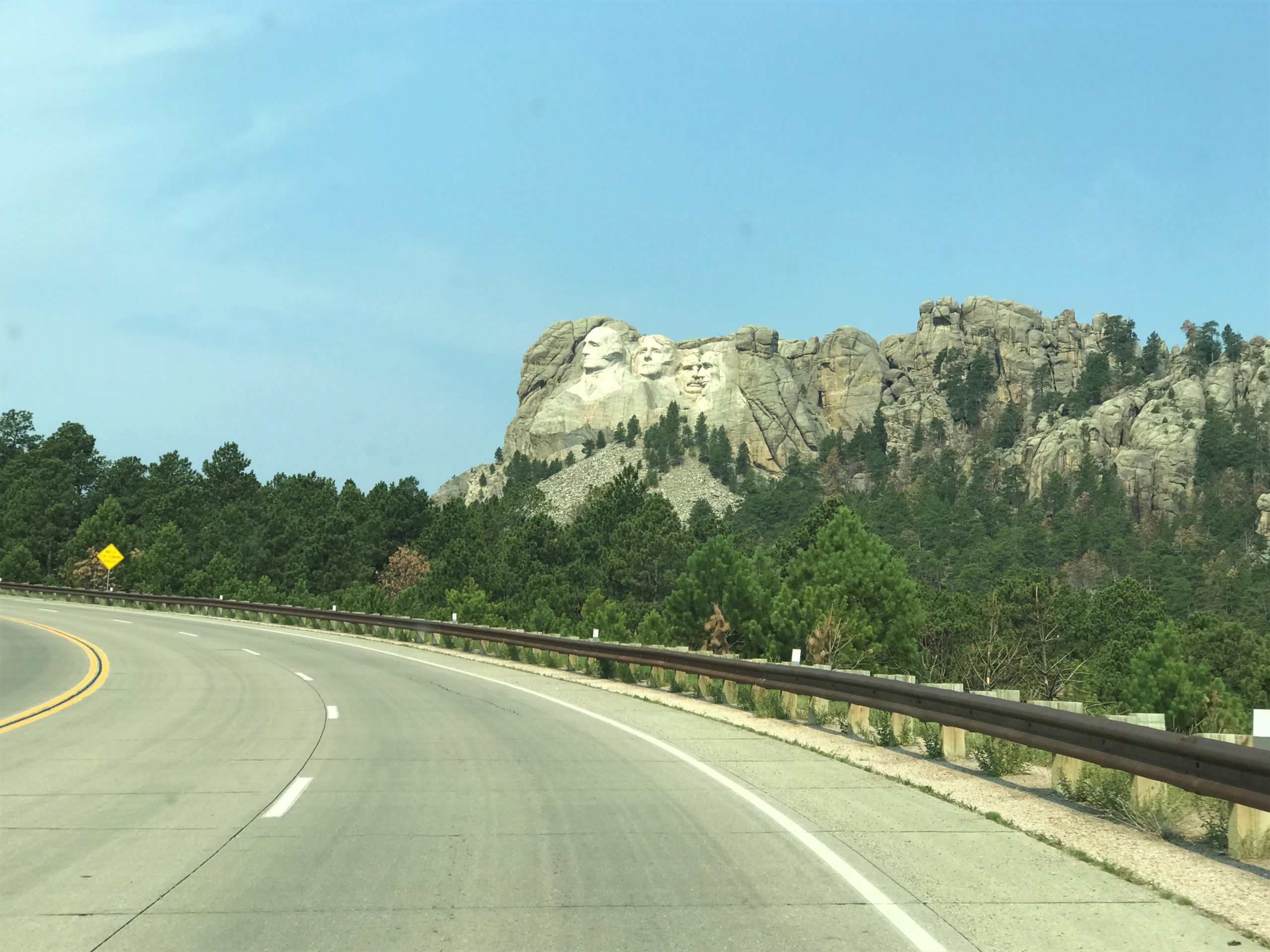
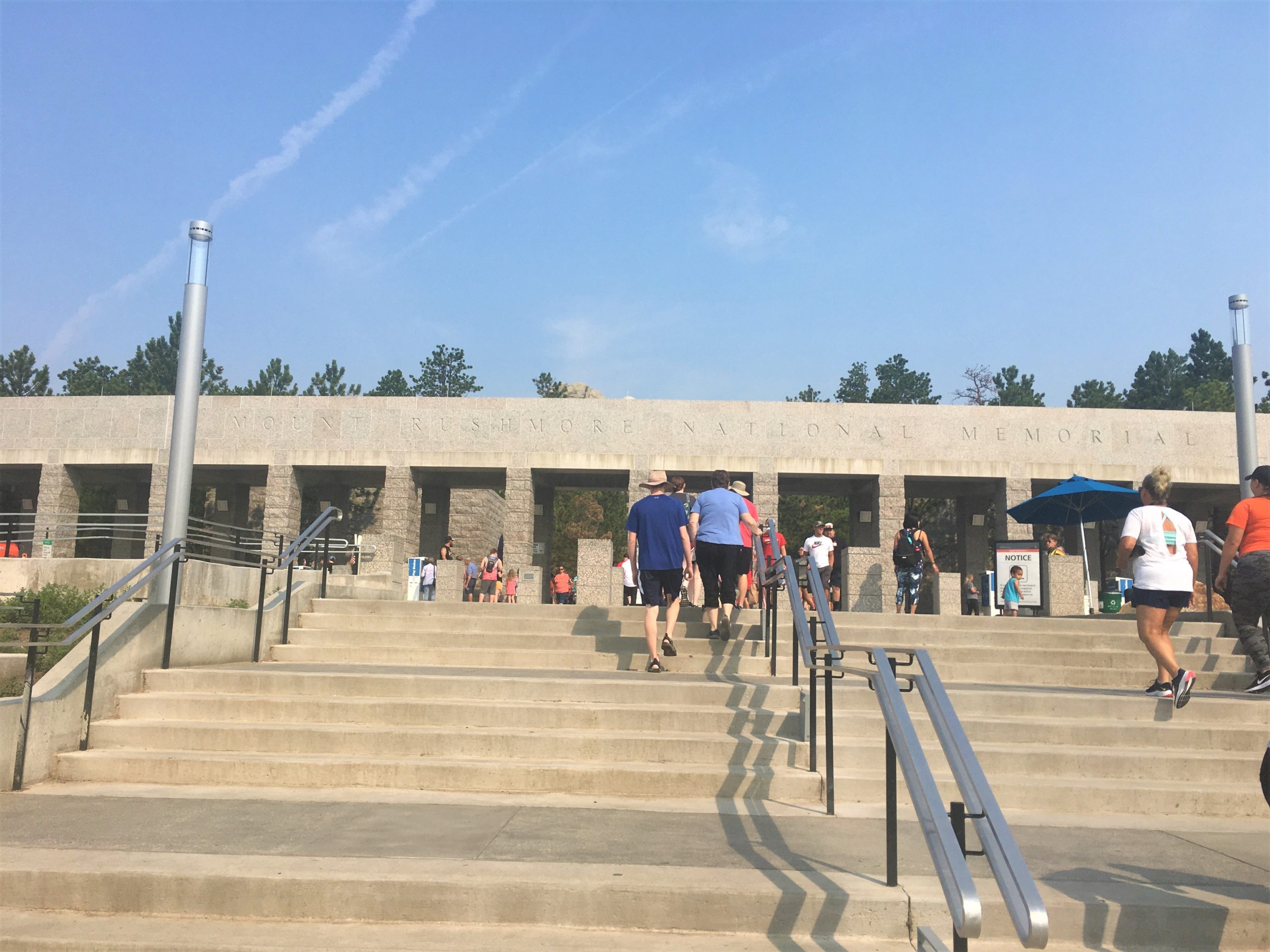
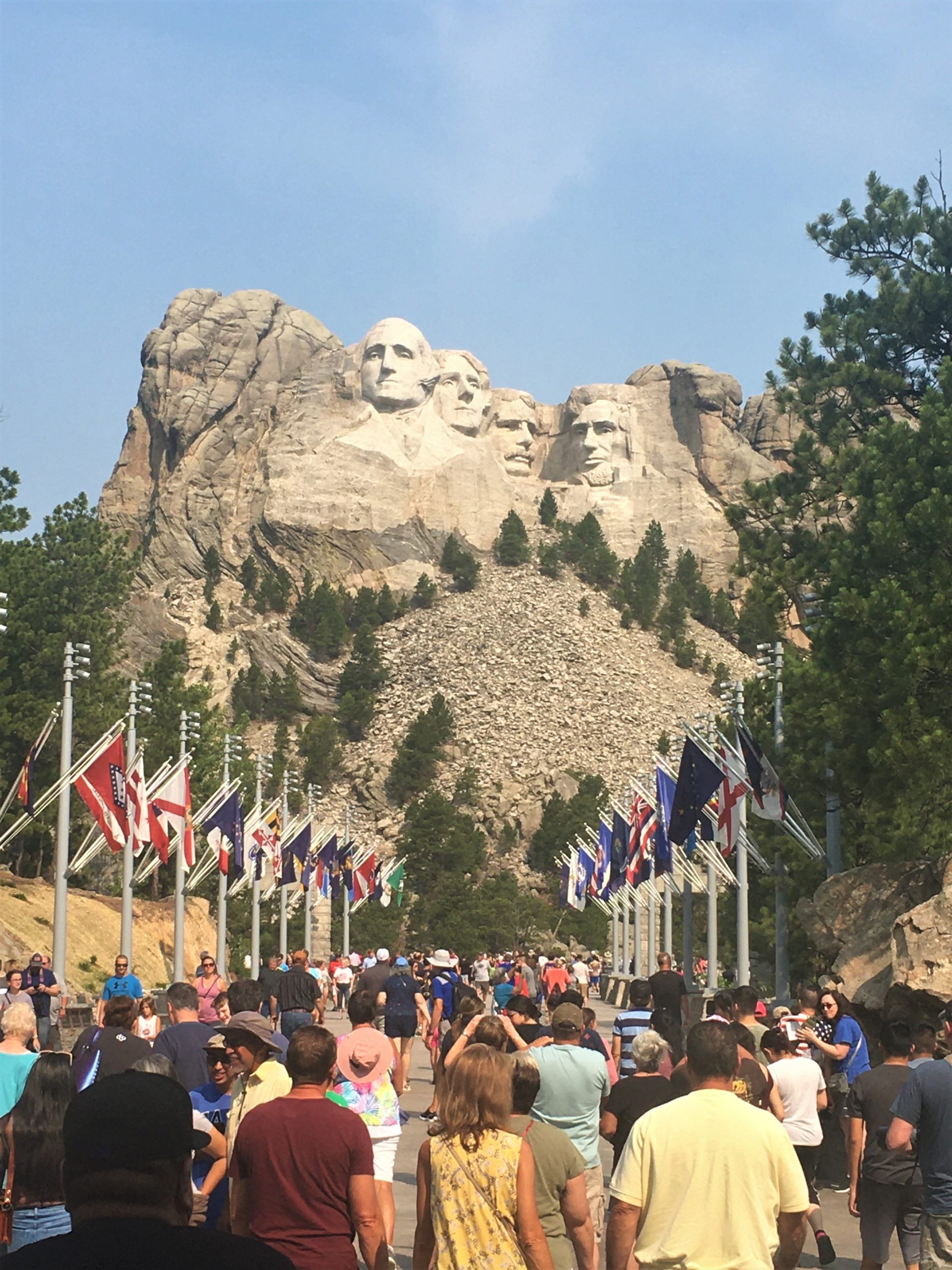
Pictures will never do it justice, despite the fact that we have dozens!
You’ll just have to see it for yourself!
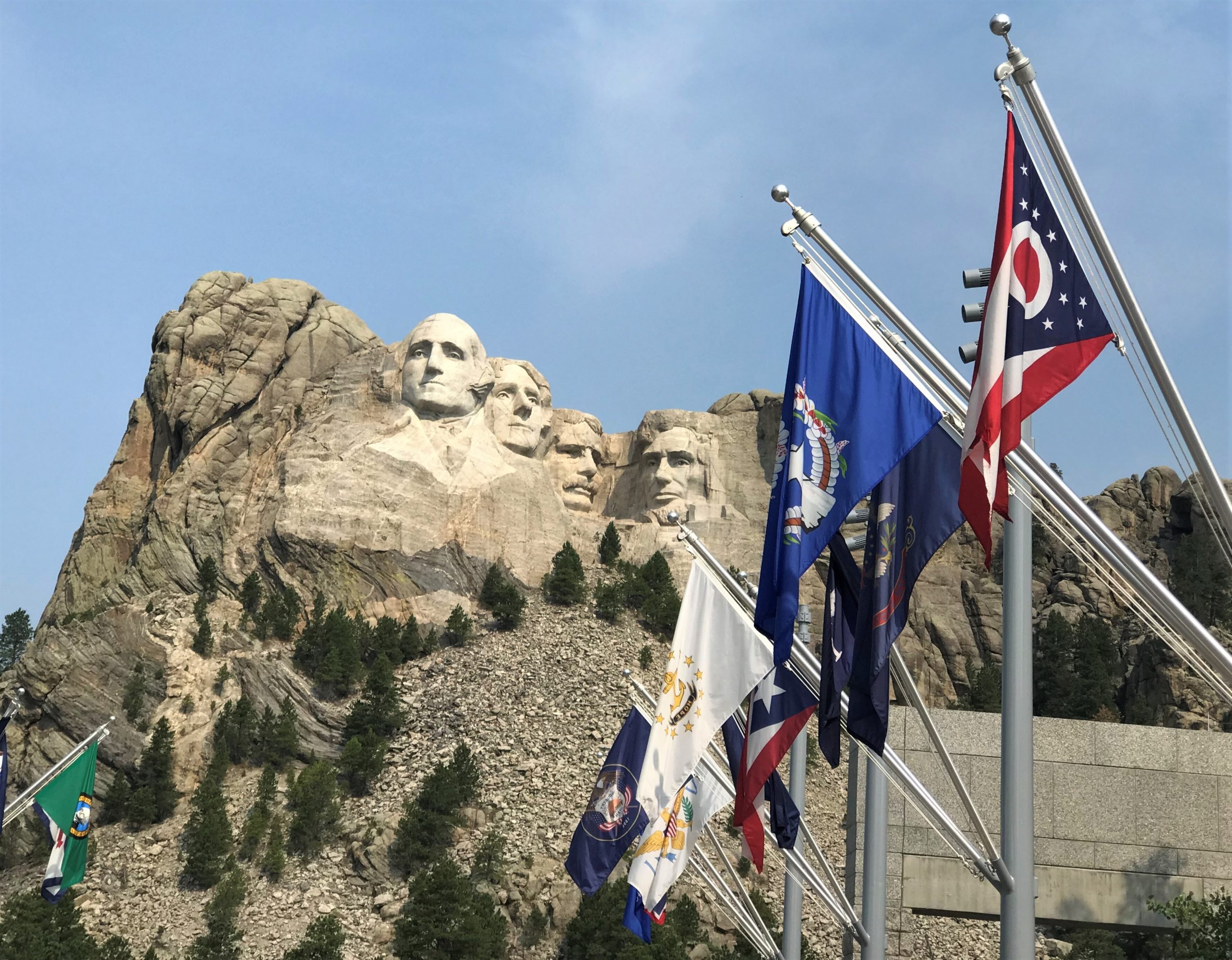
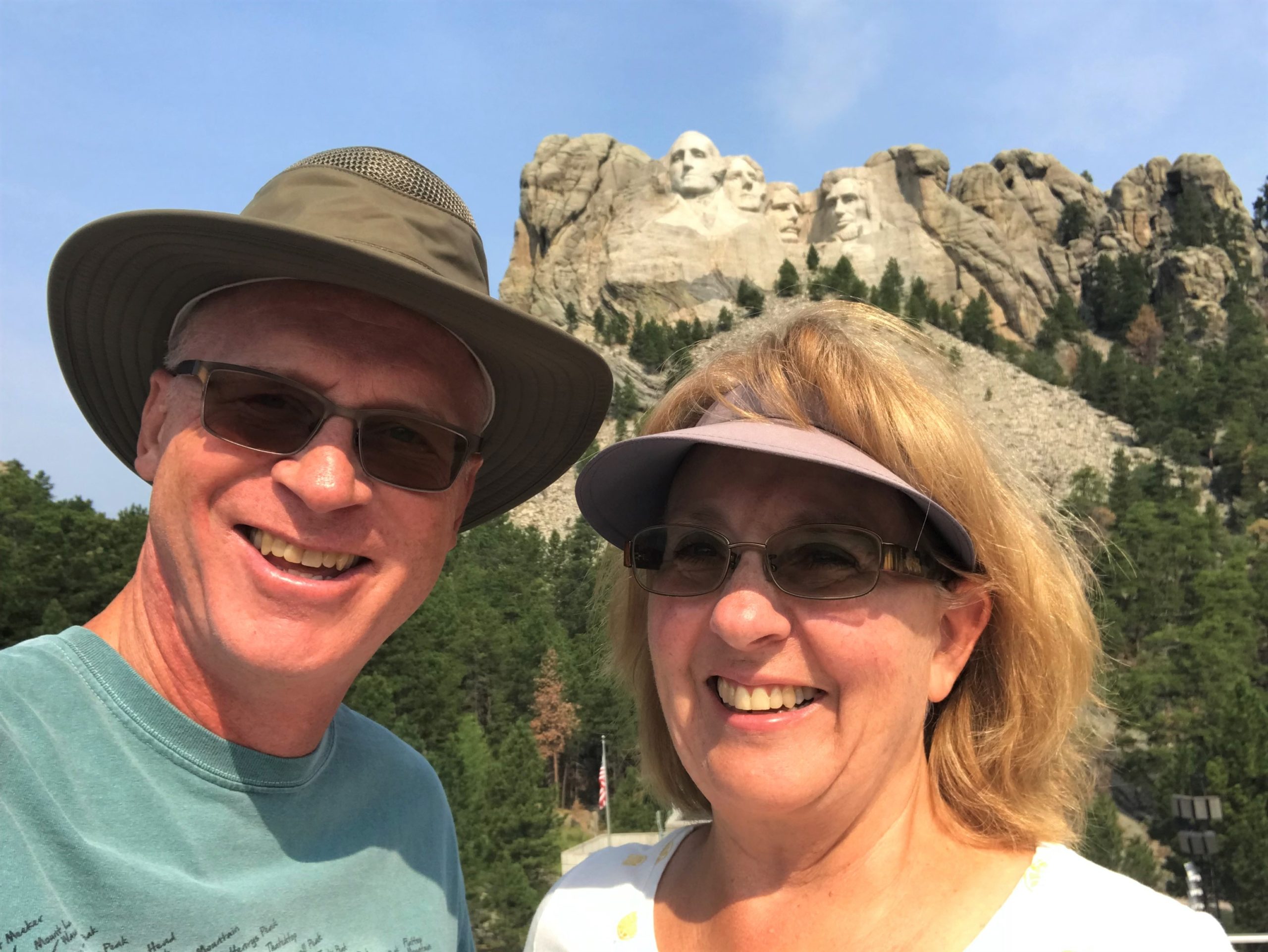
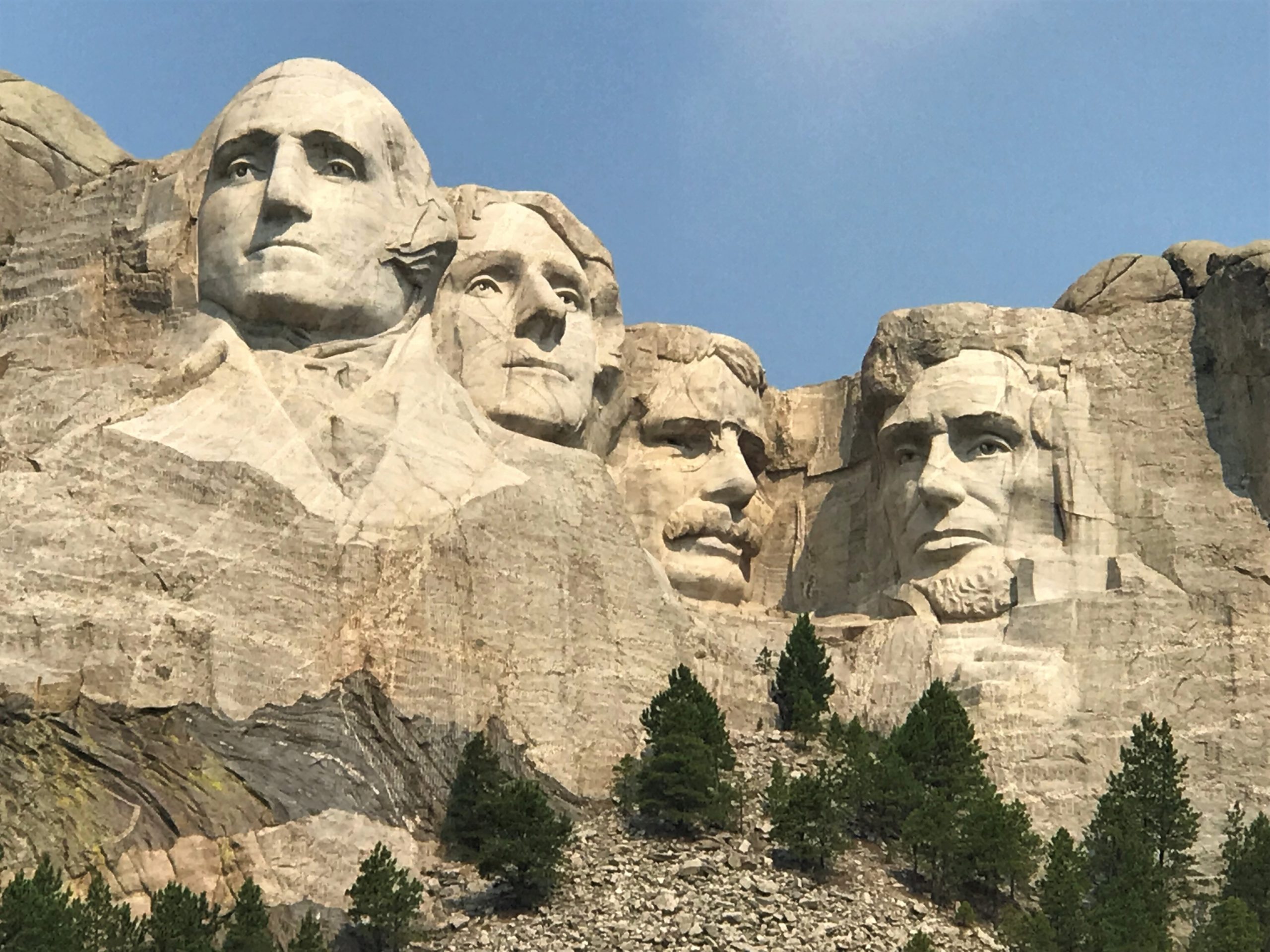
Astounding!
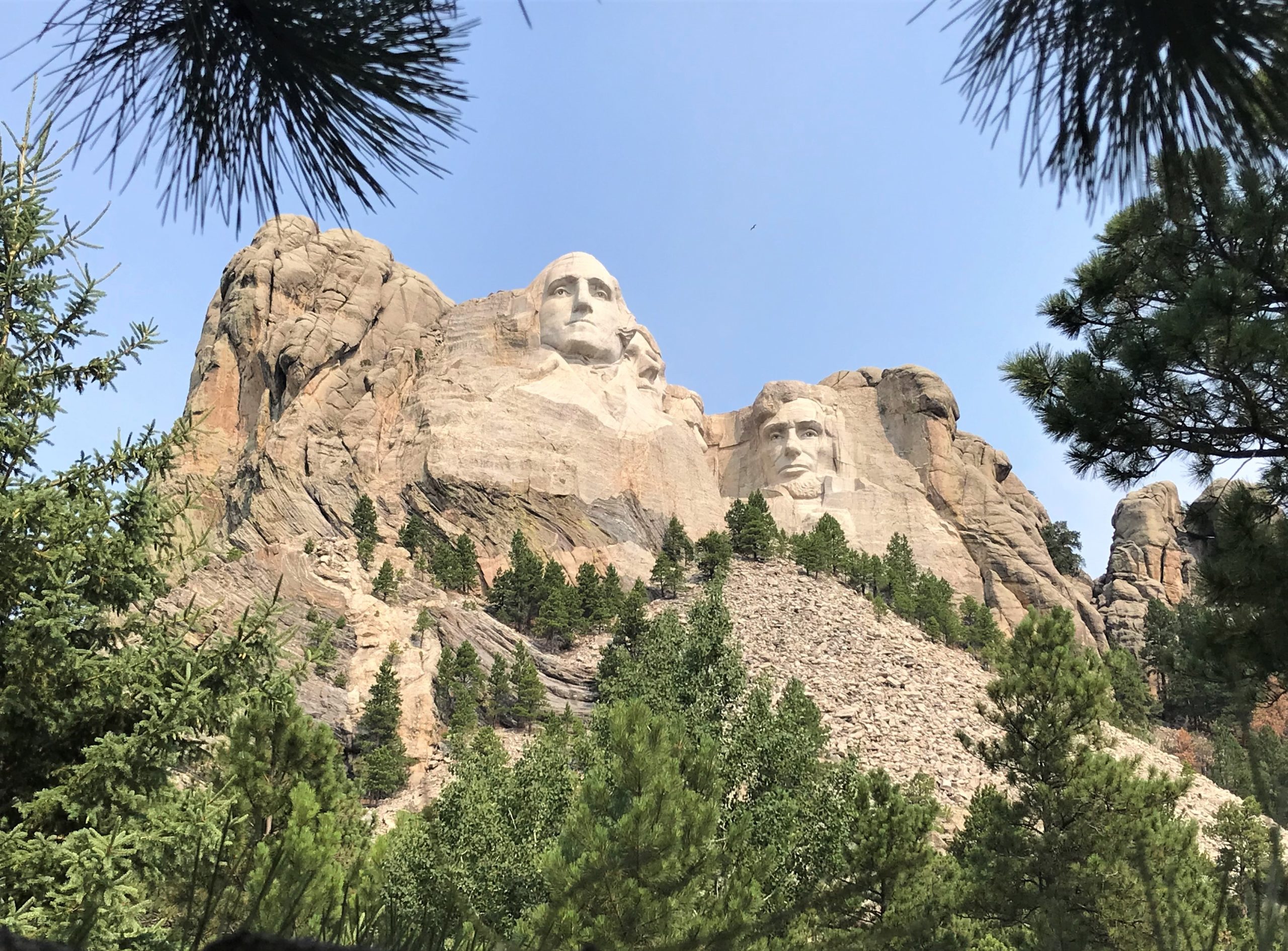
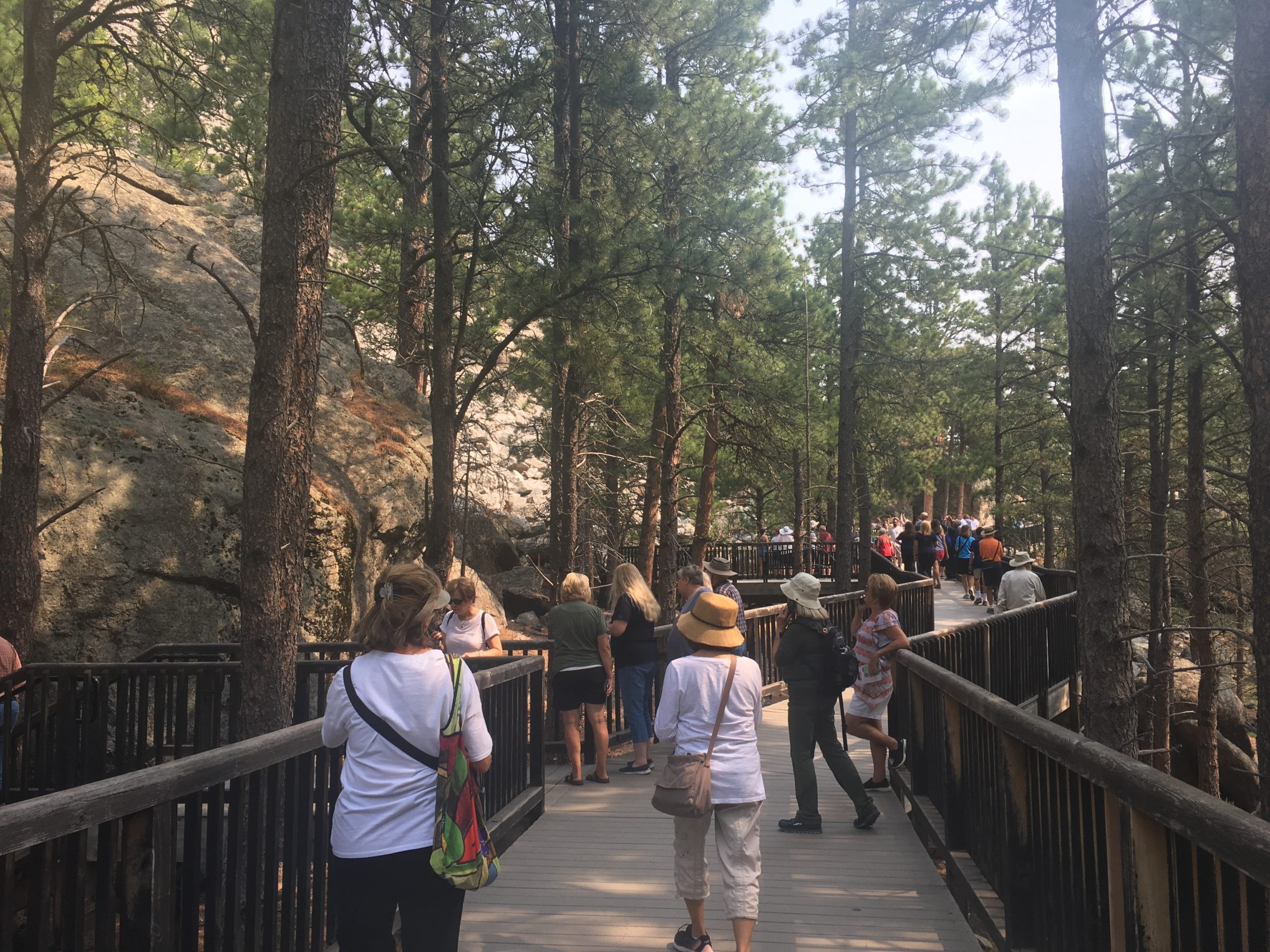
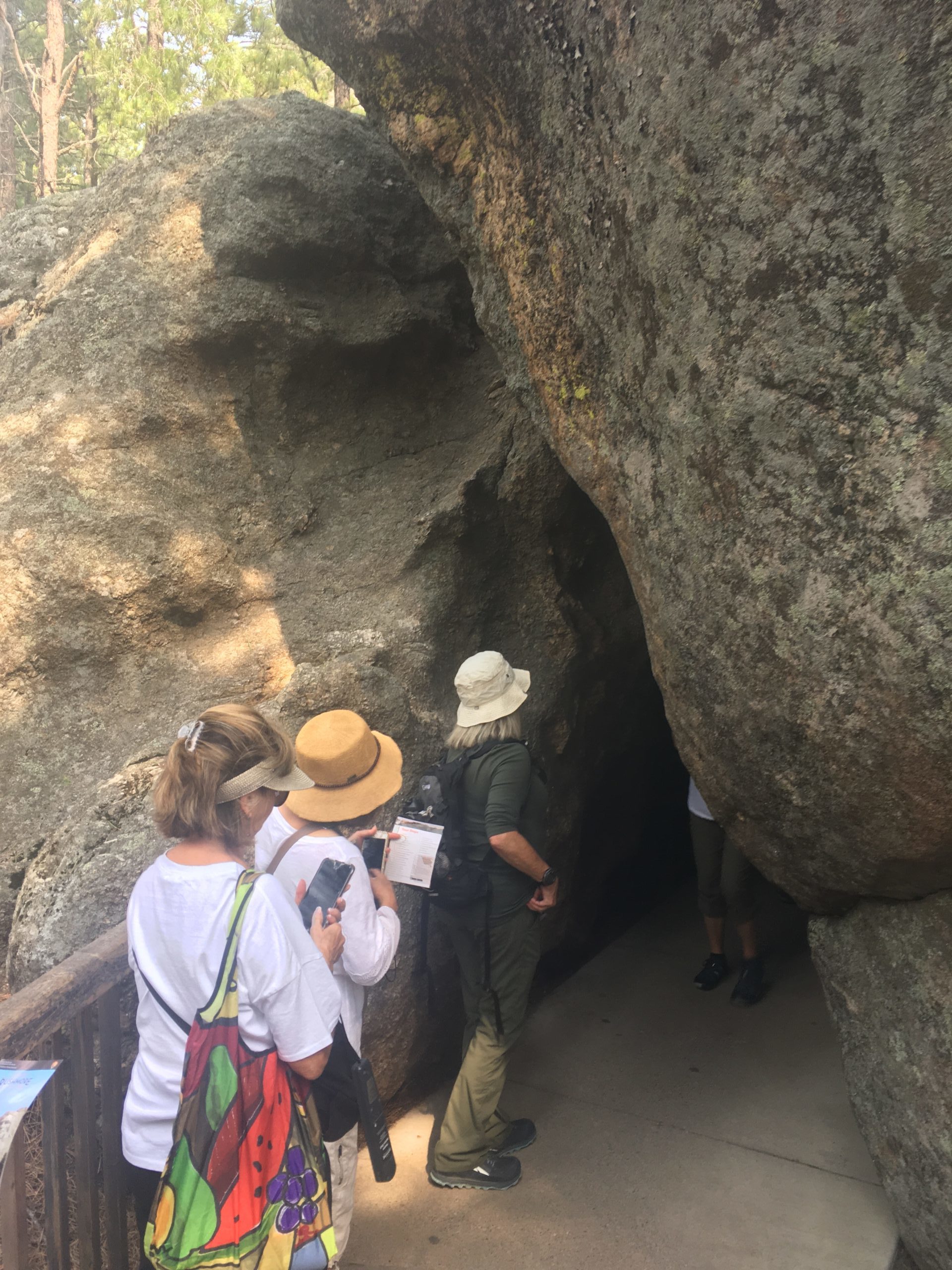
You’ll see – – it wasn’t as exciting as it sounds. : )
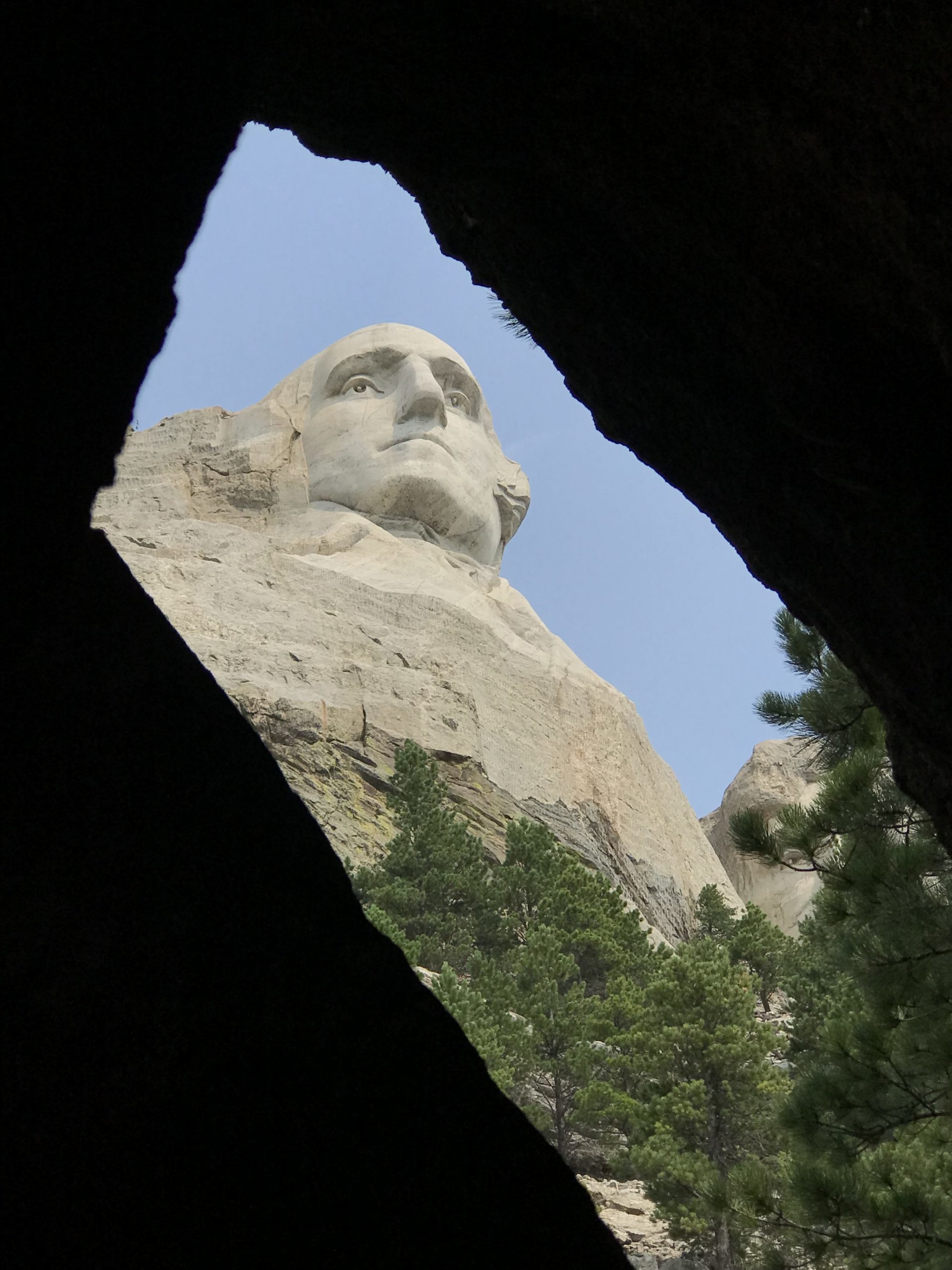
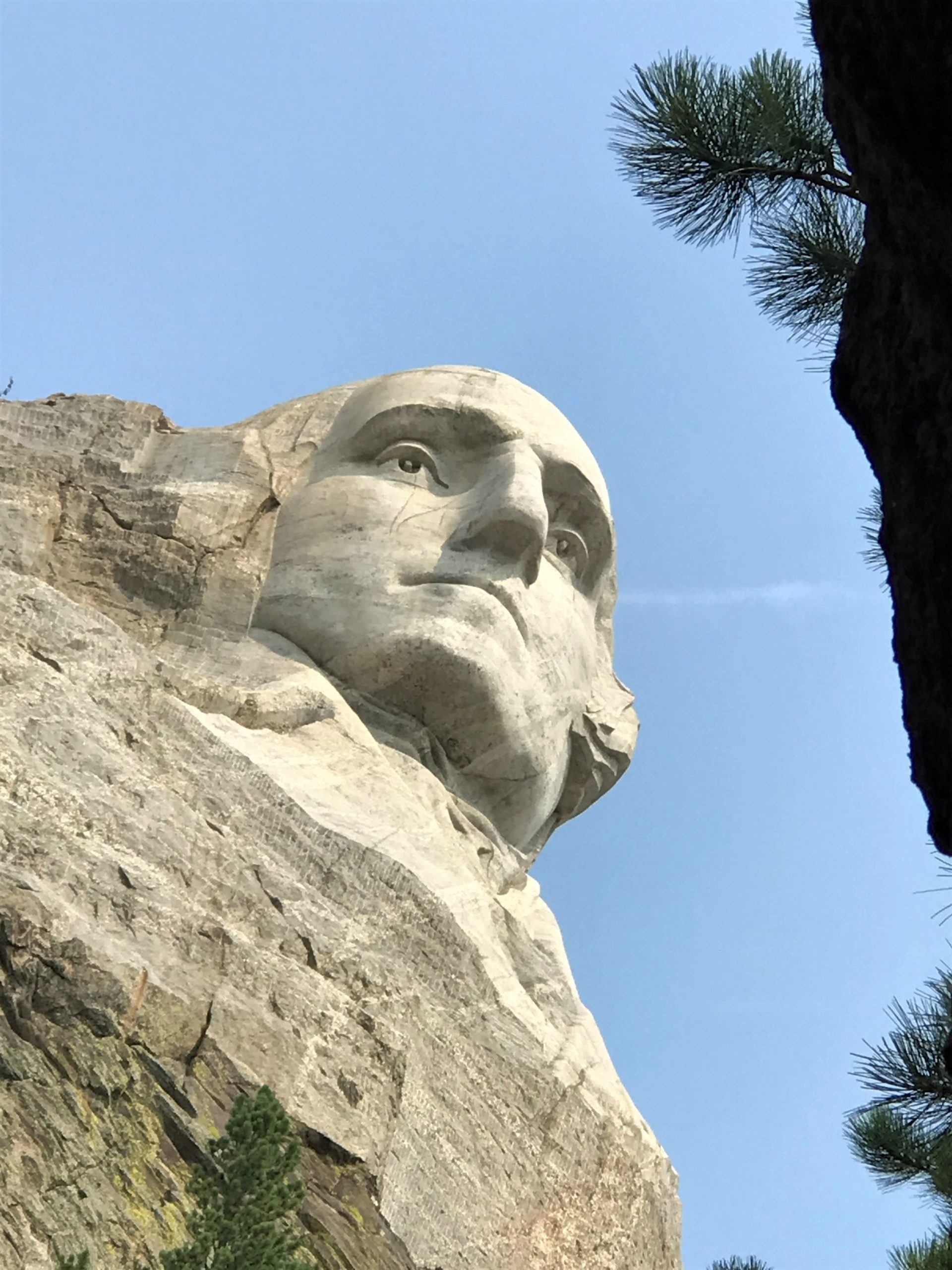
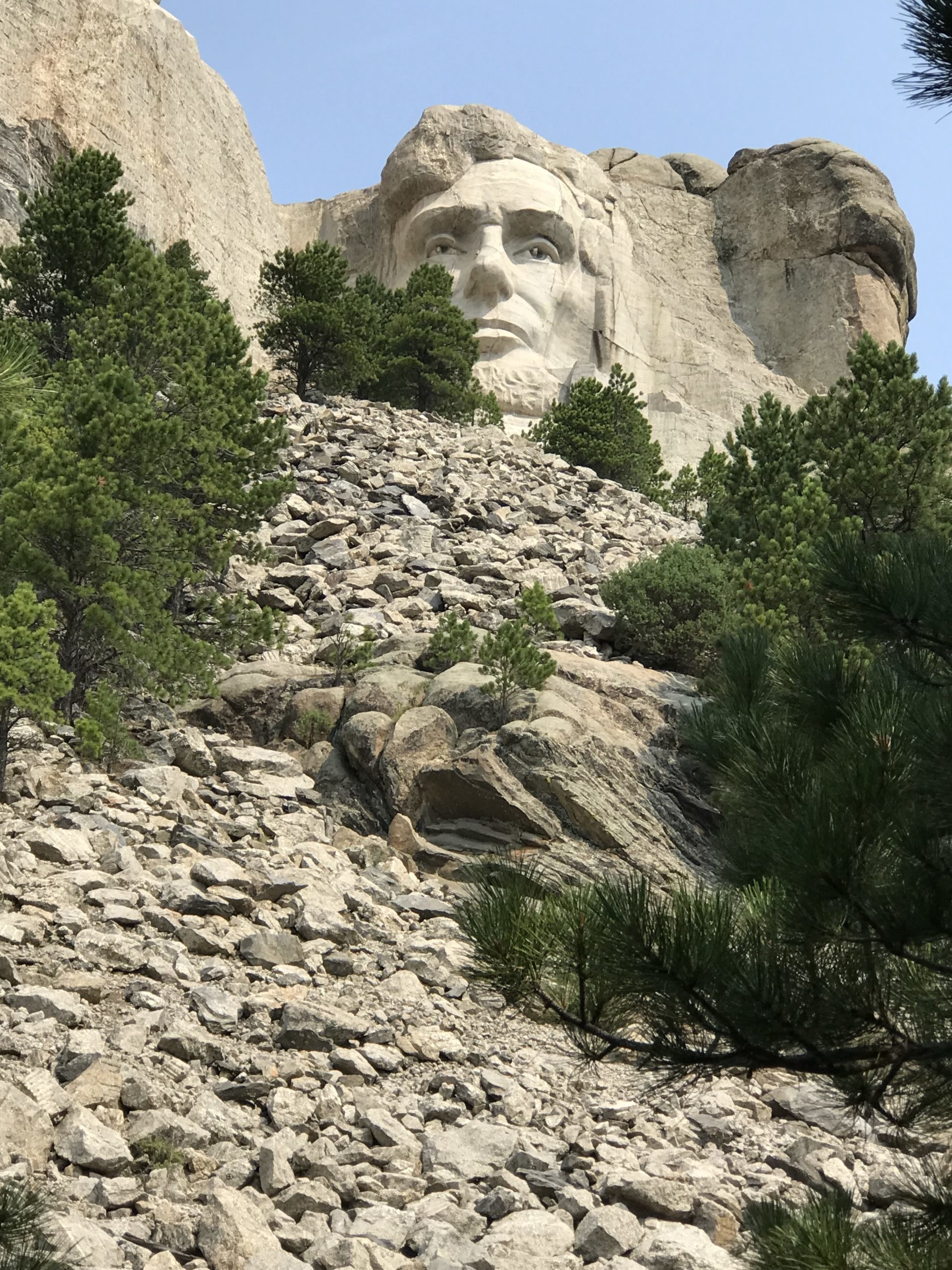
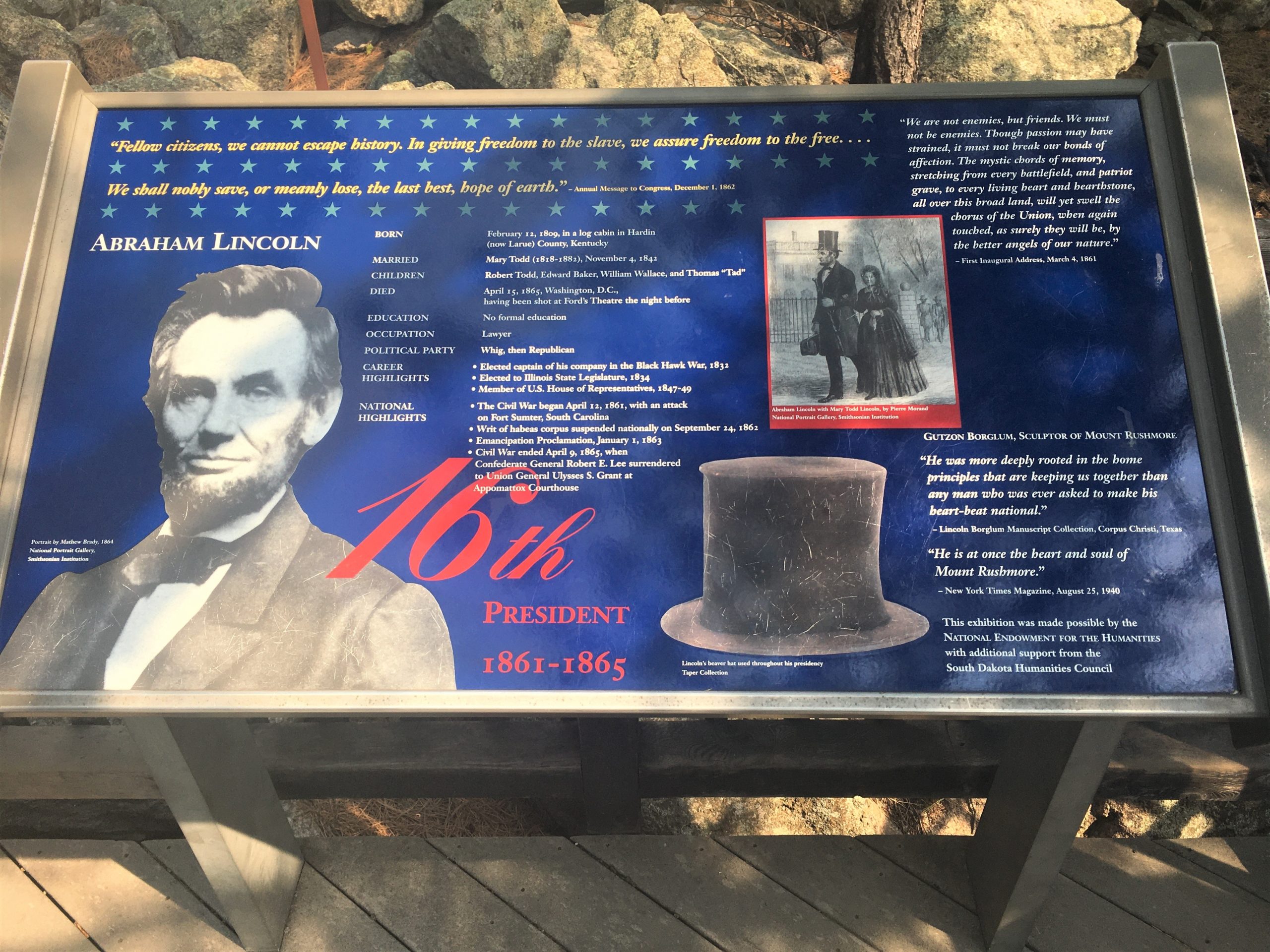
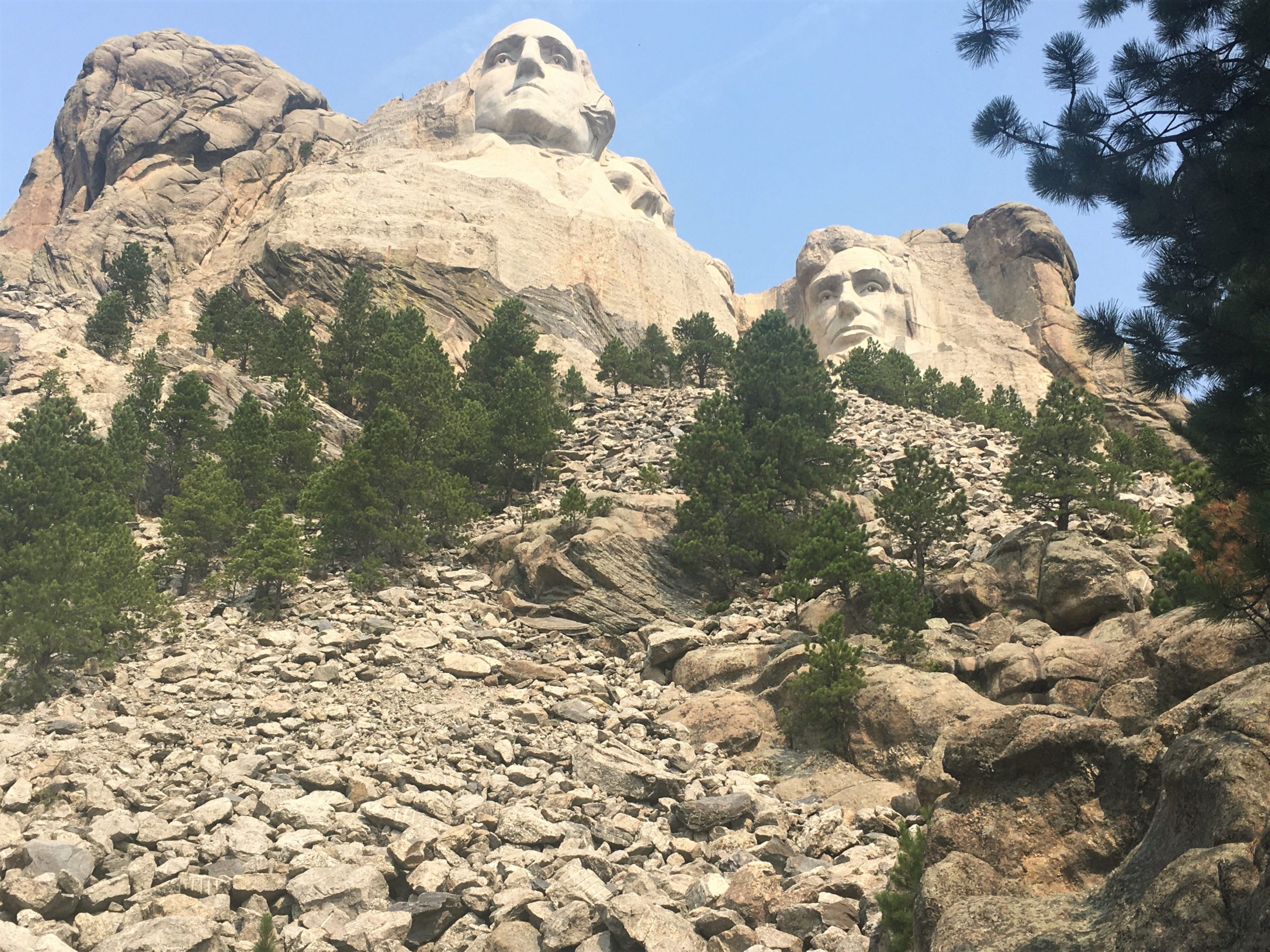
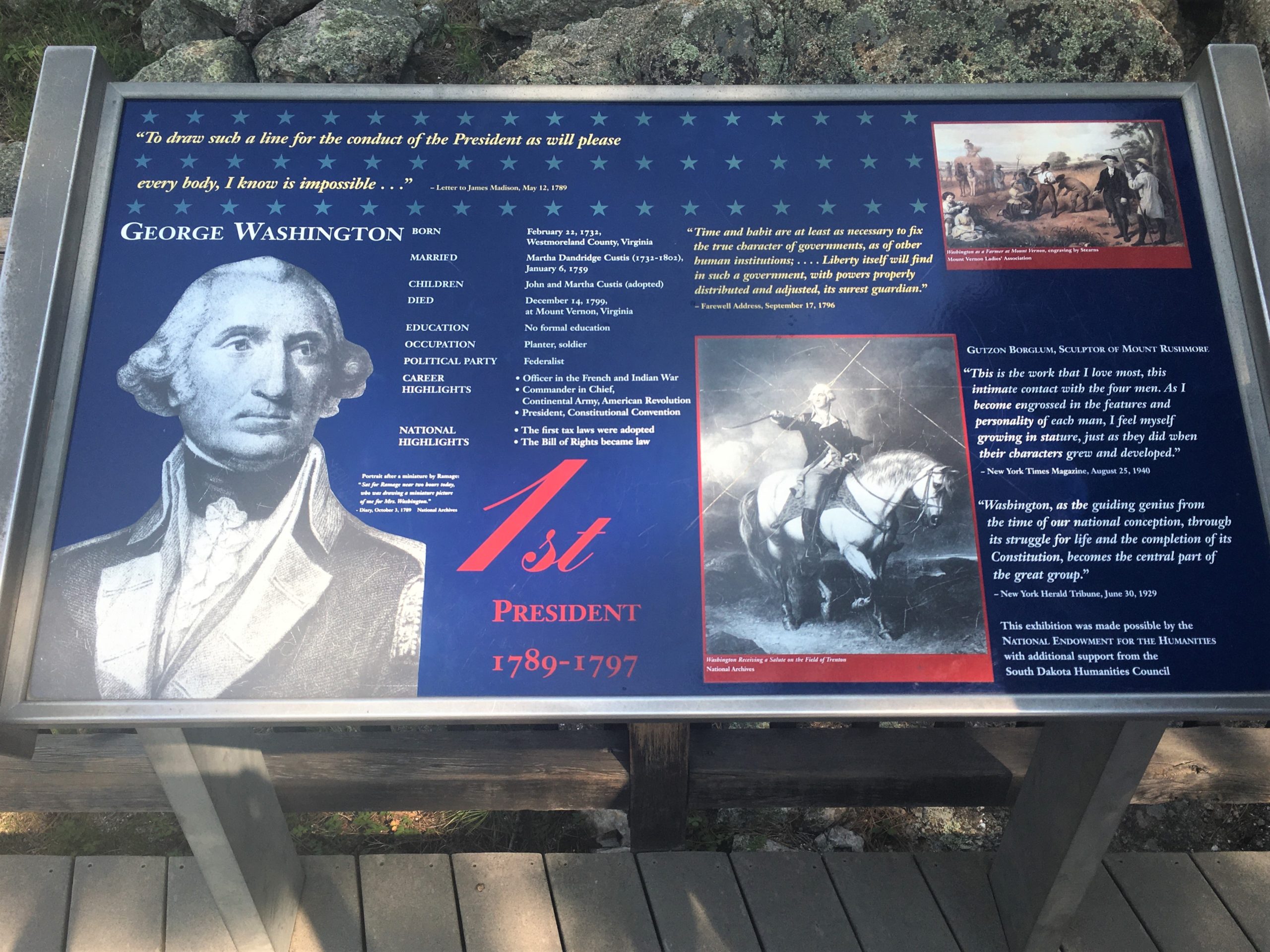
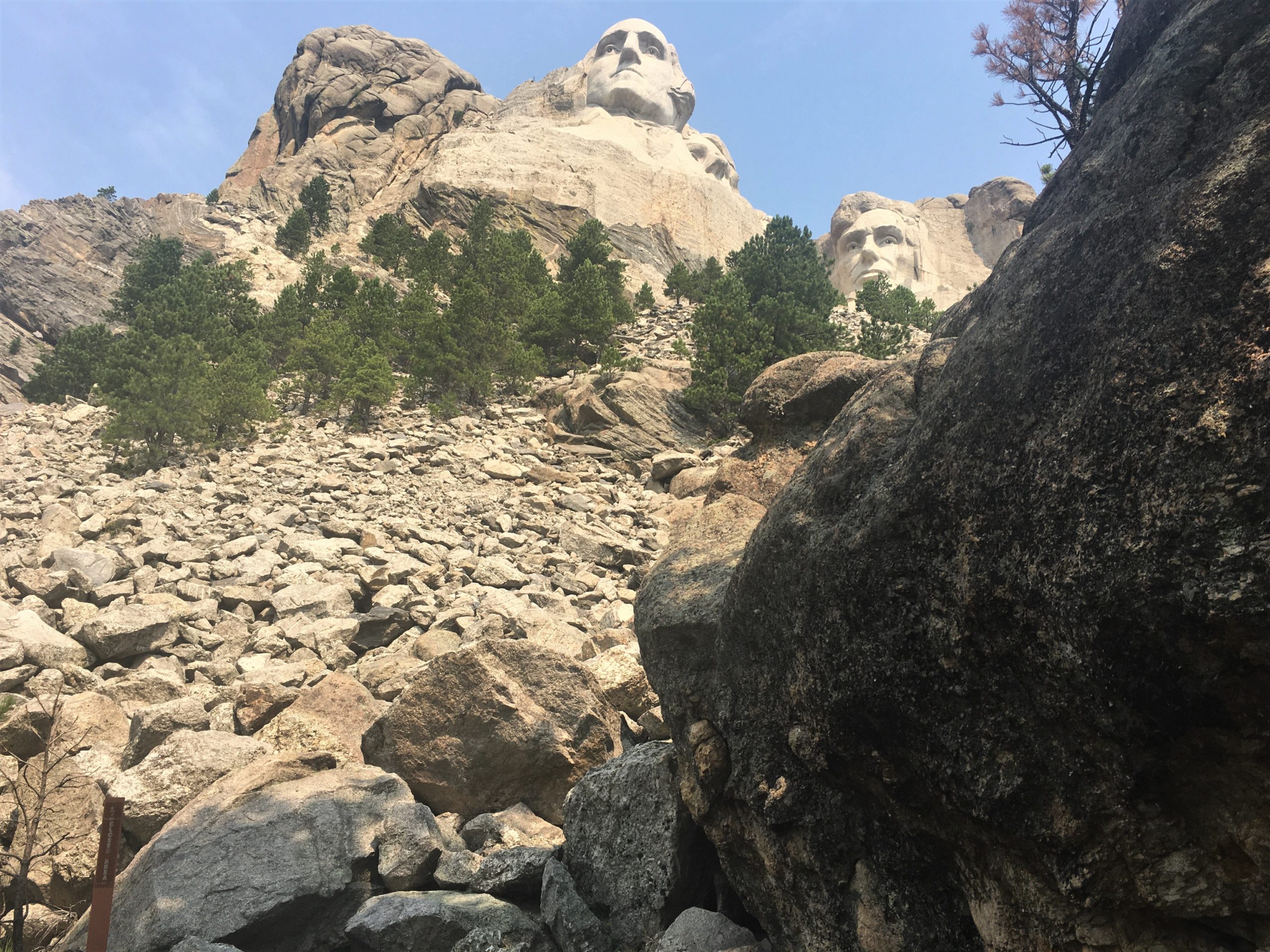
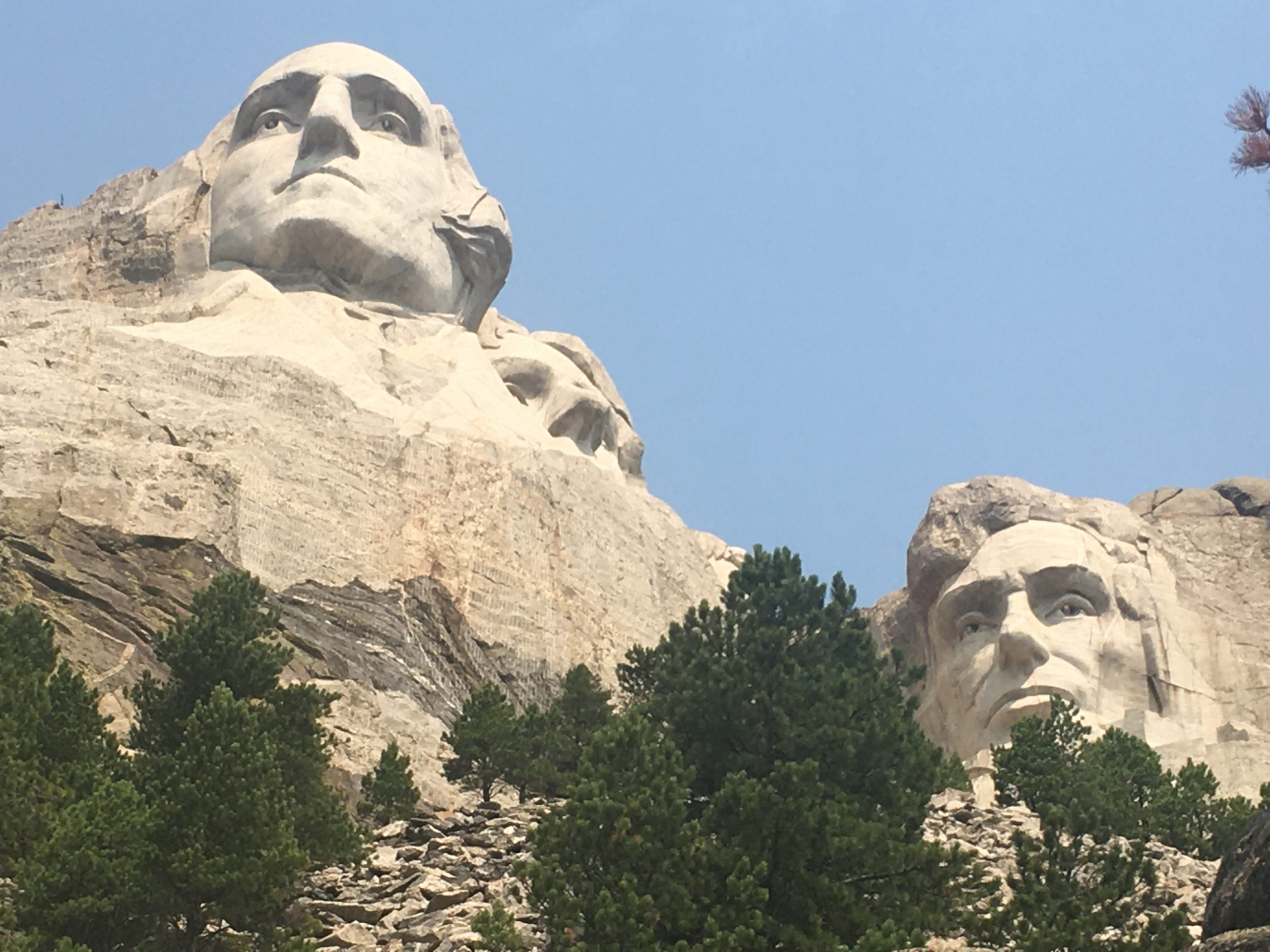
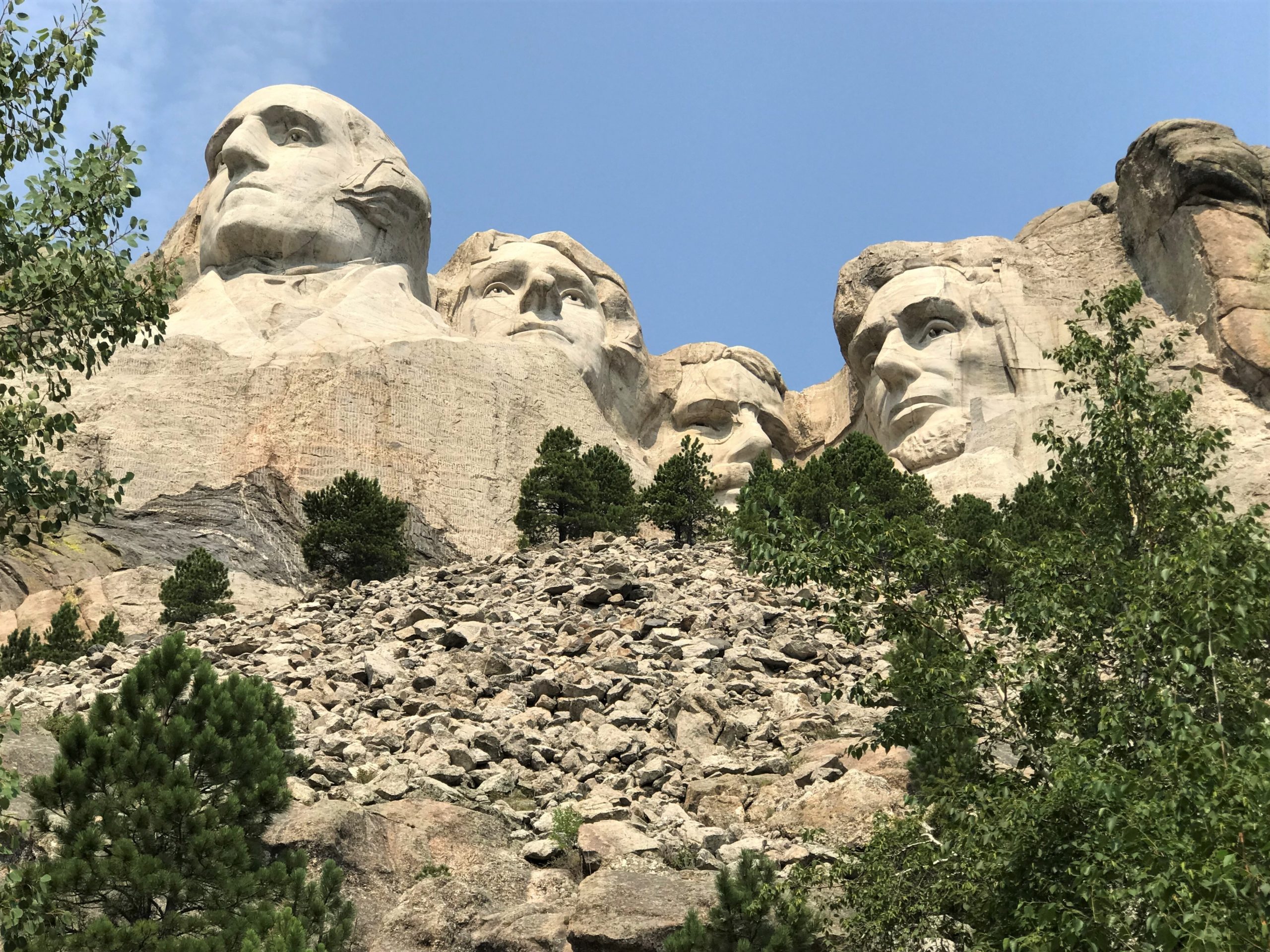
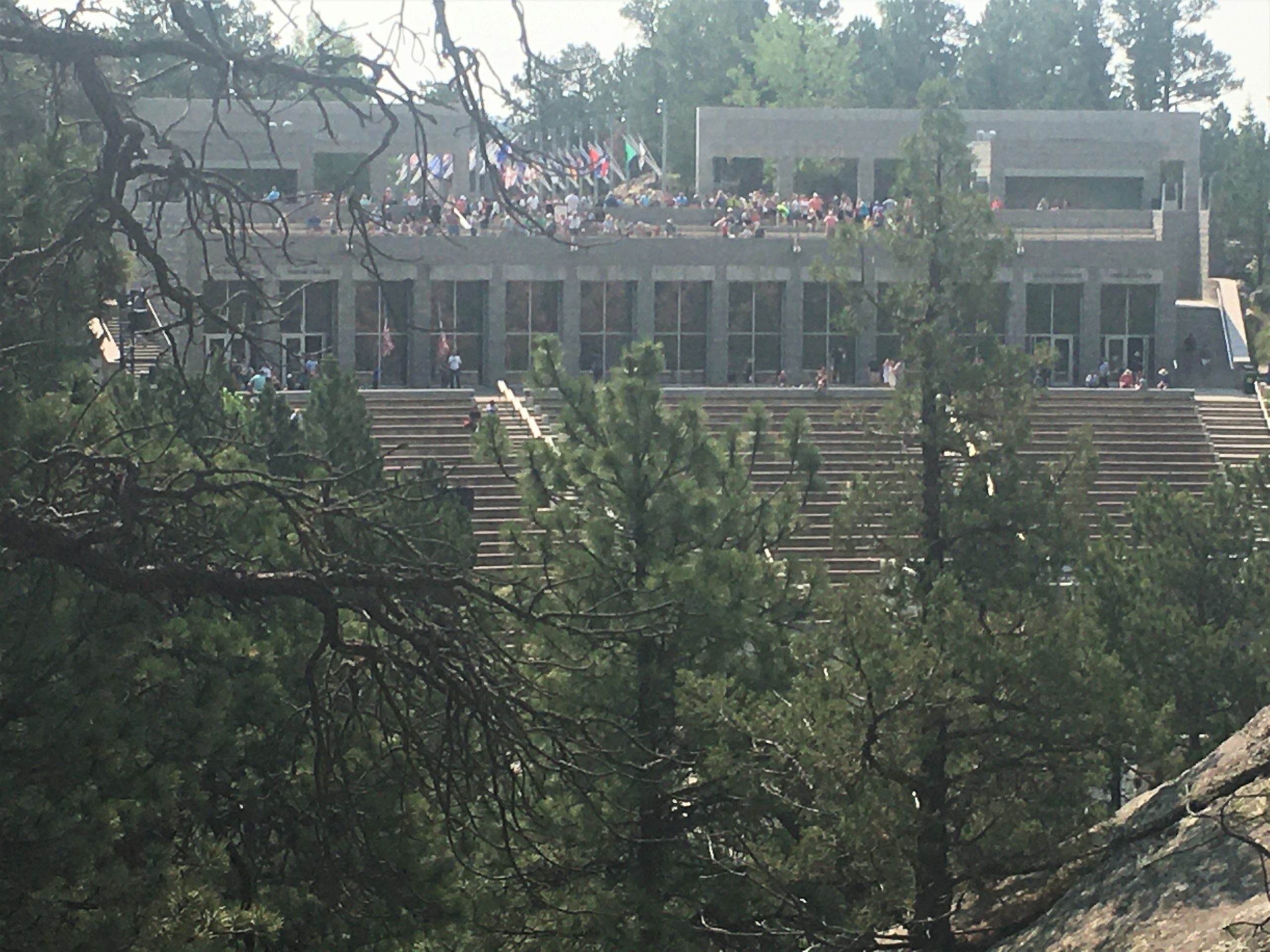
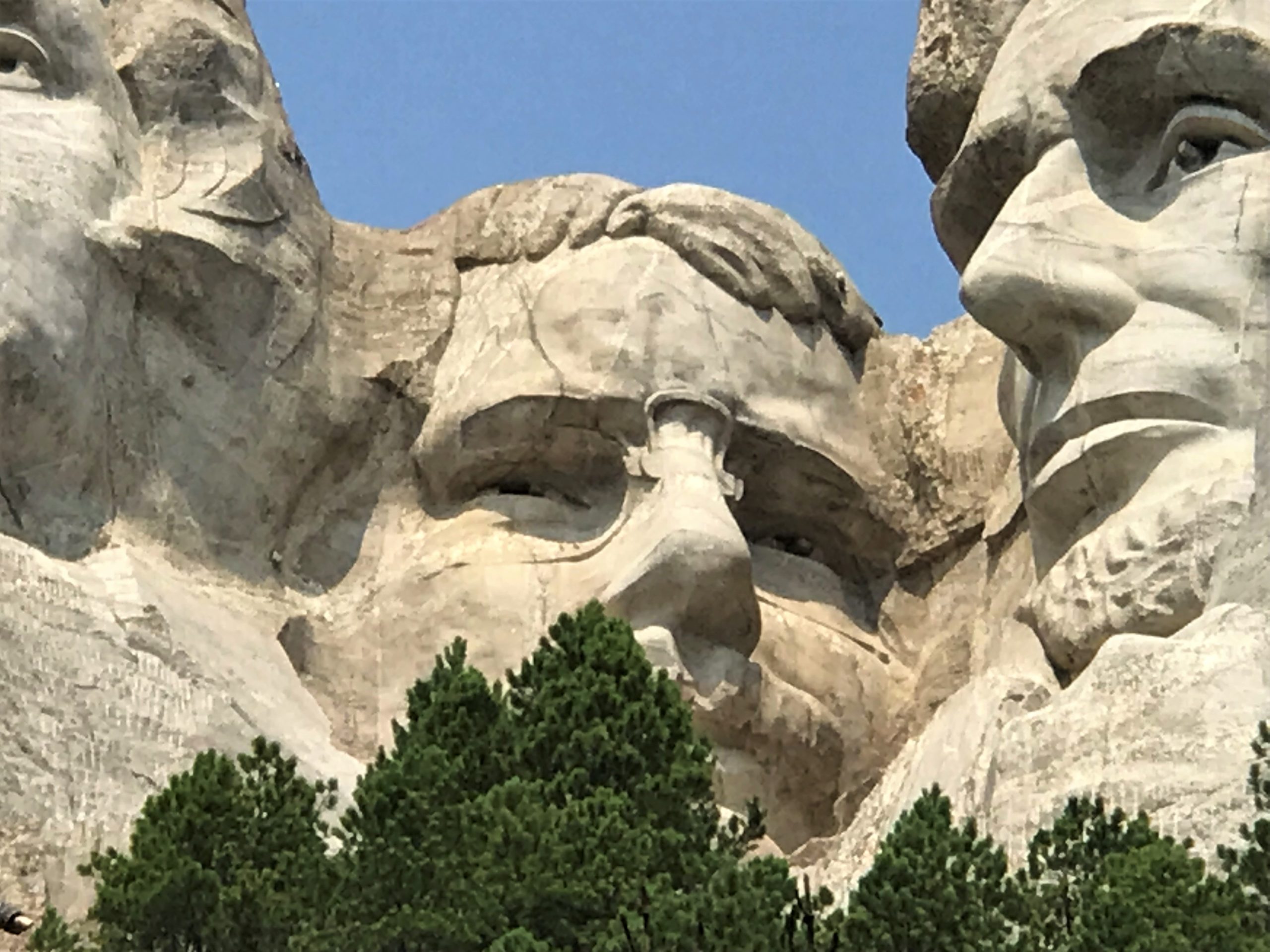
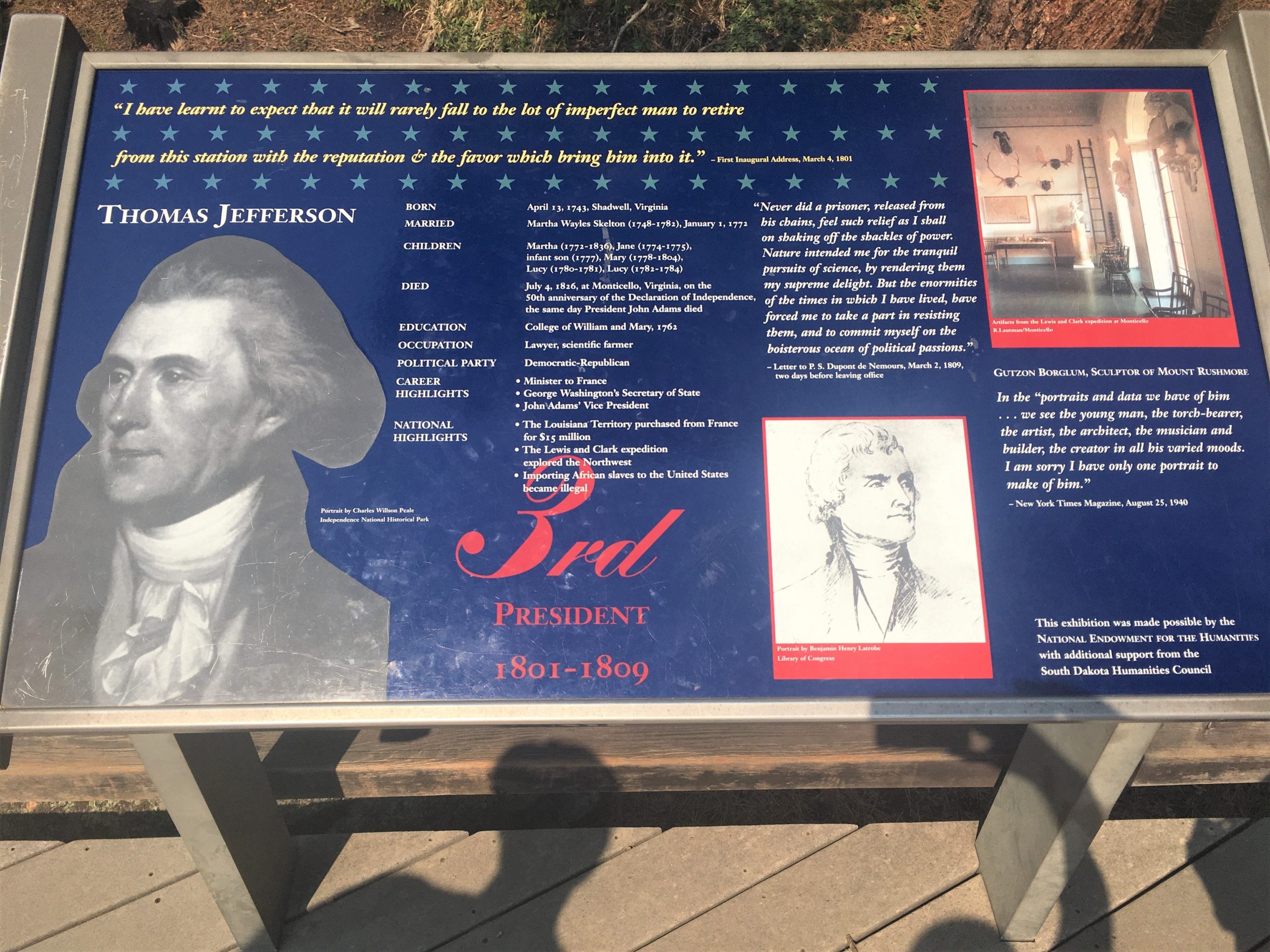

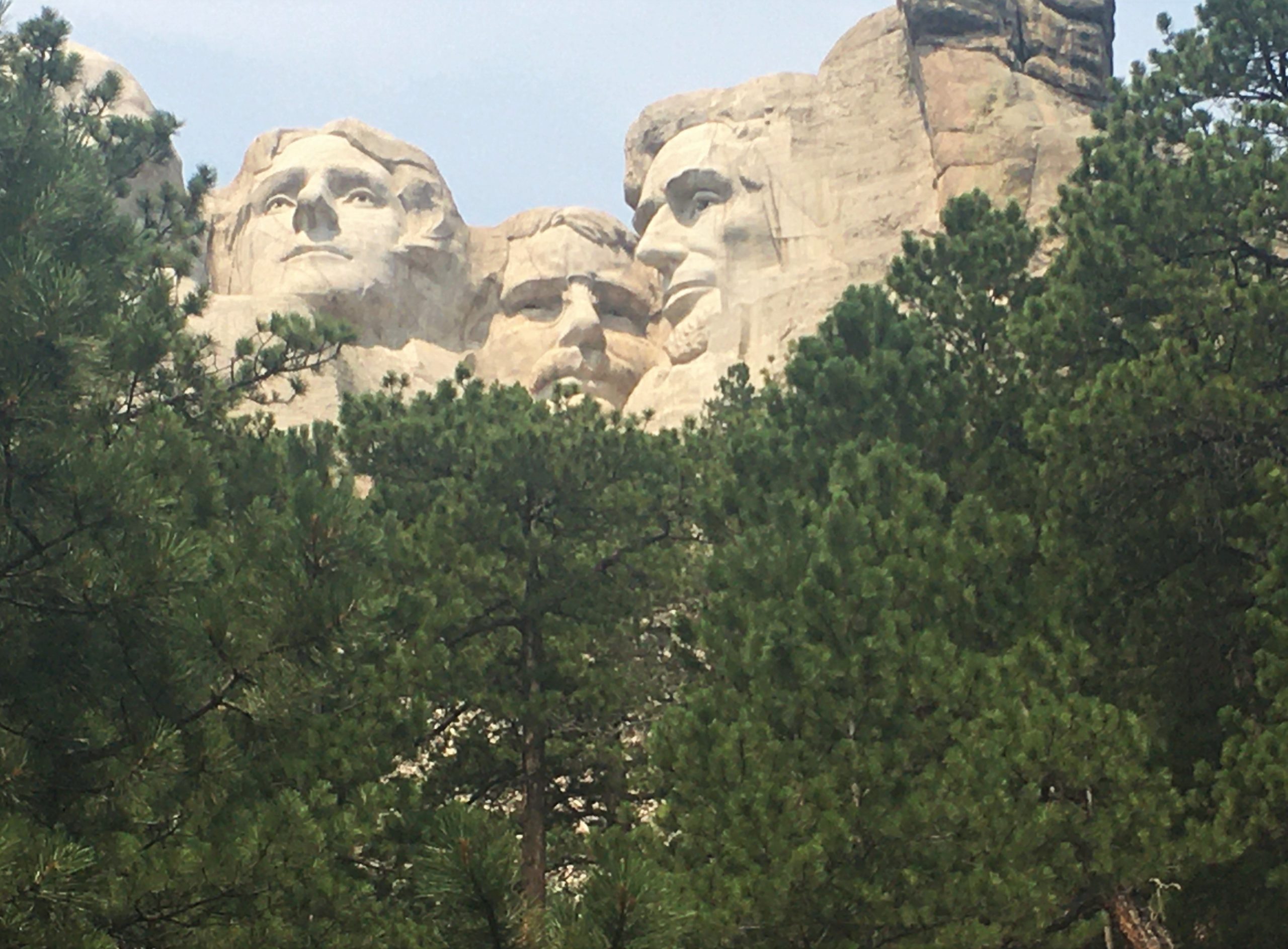
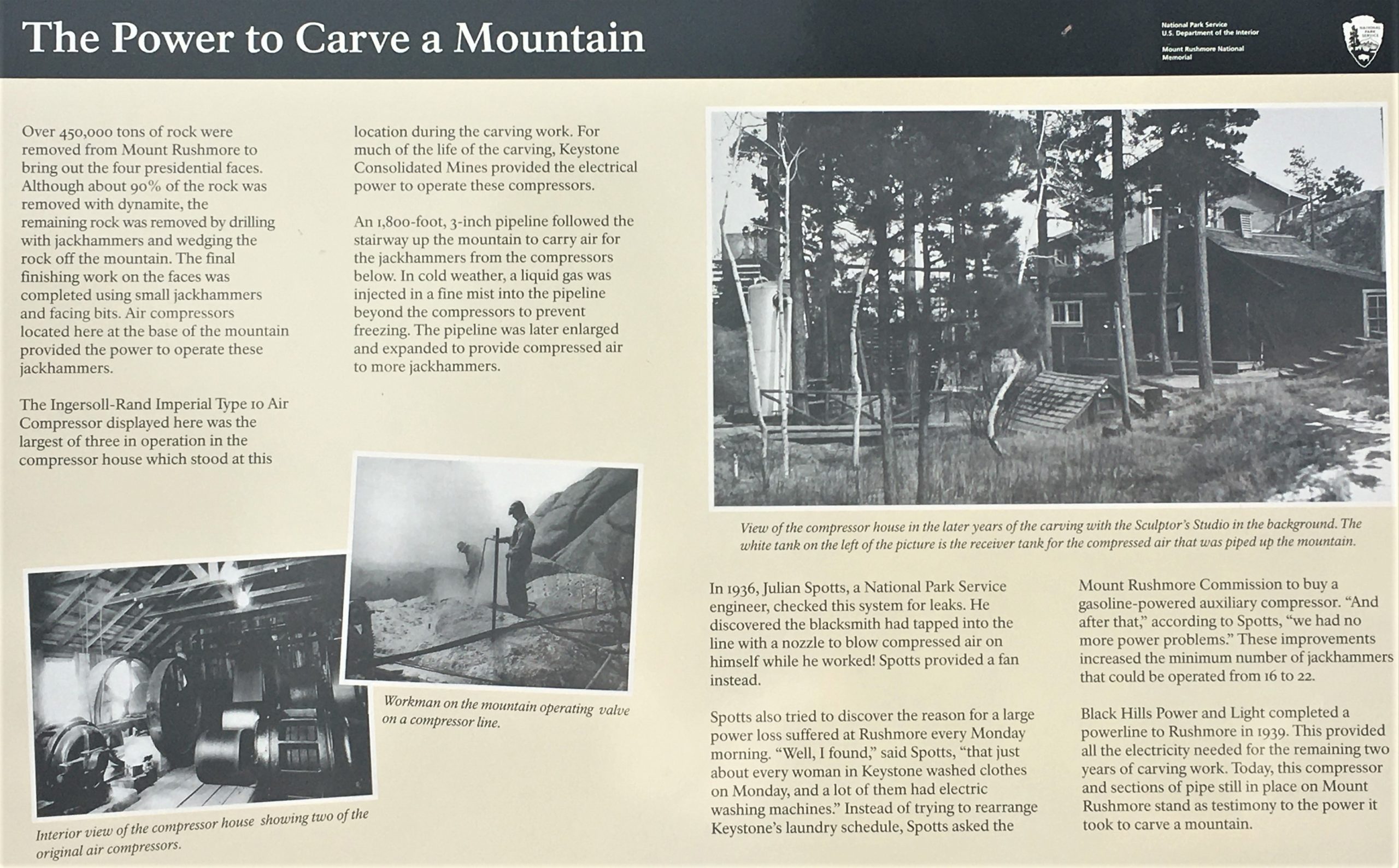
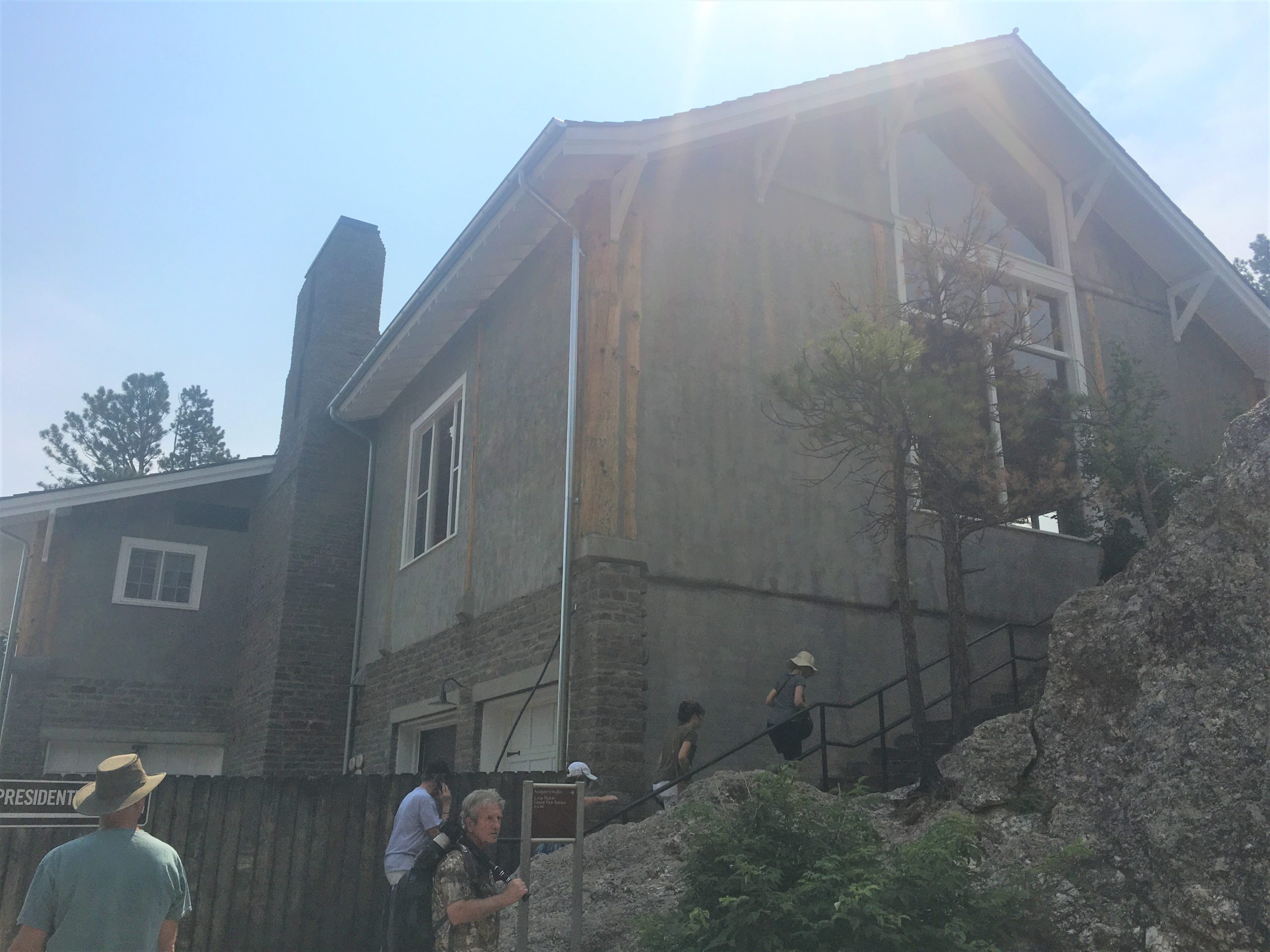
When we got to the top, we heard talking.

Very informative. Behind her stands the ‘final’ to-scale model they worked from.
This is also how Borglum saw the completed project.
Personally, we like it better the way it is now.

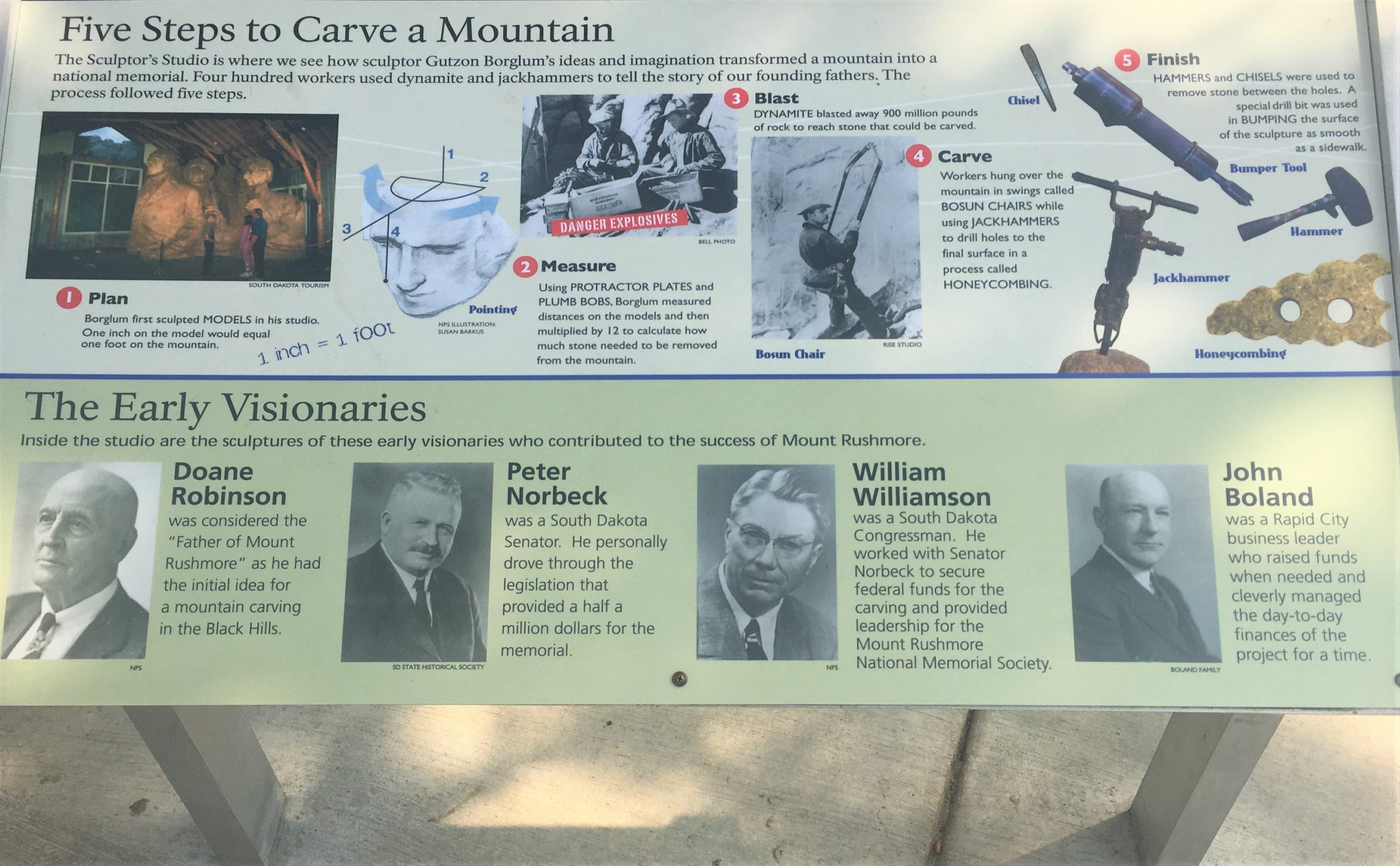
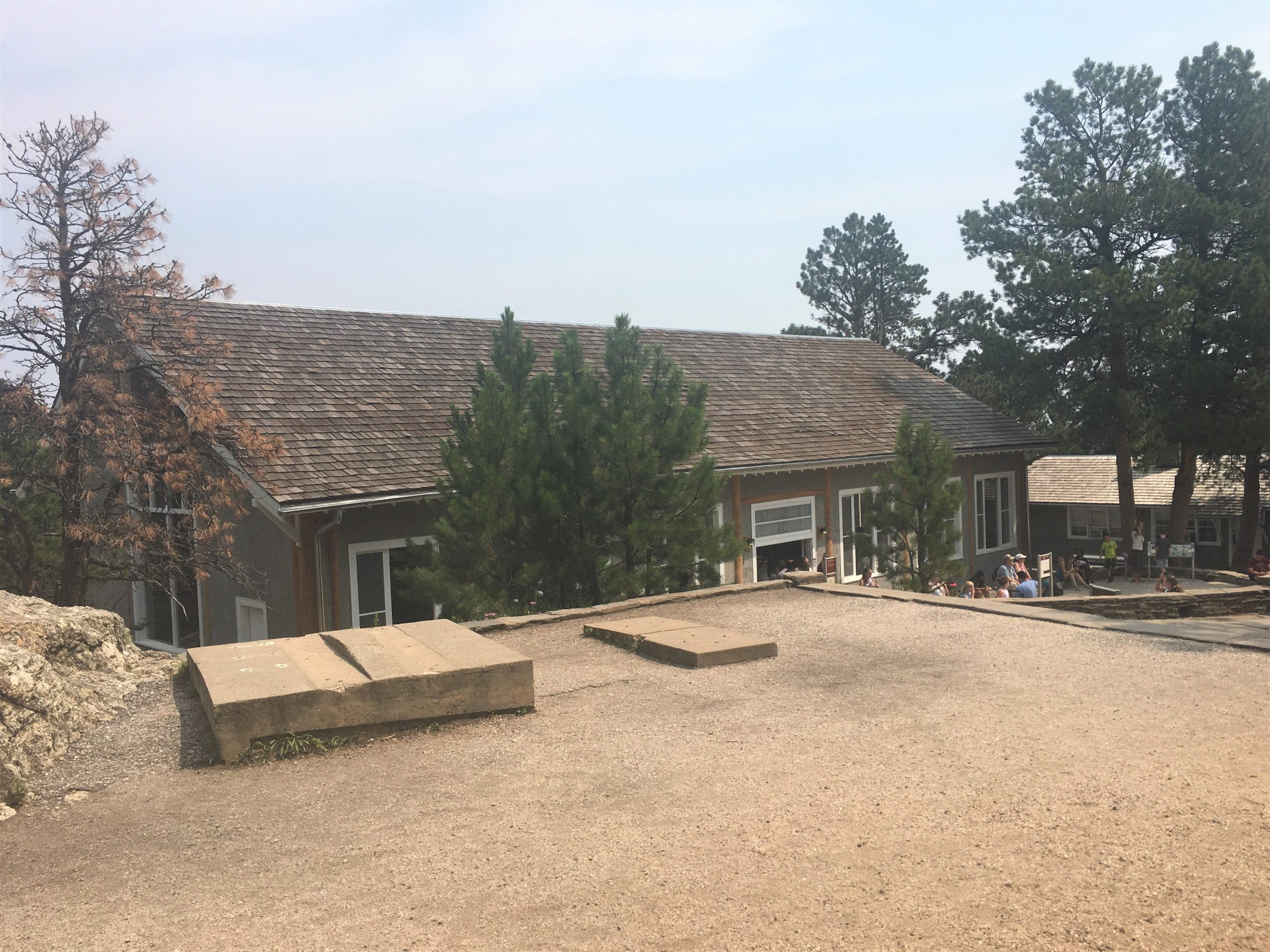
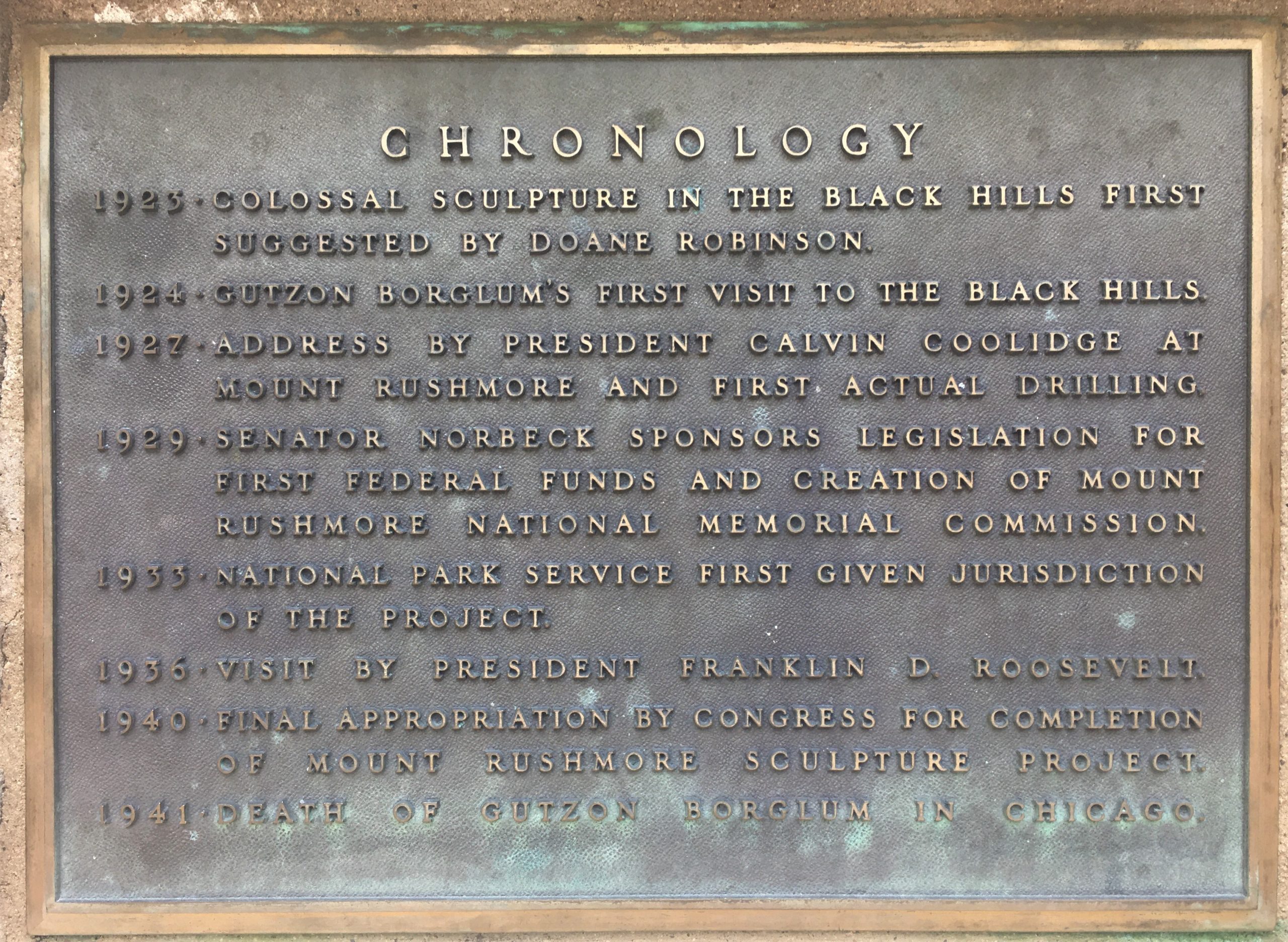

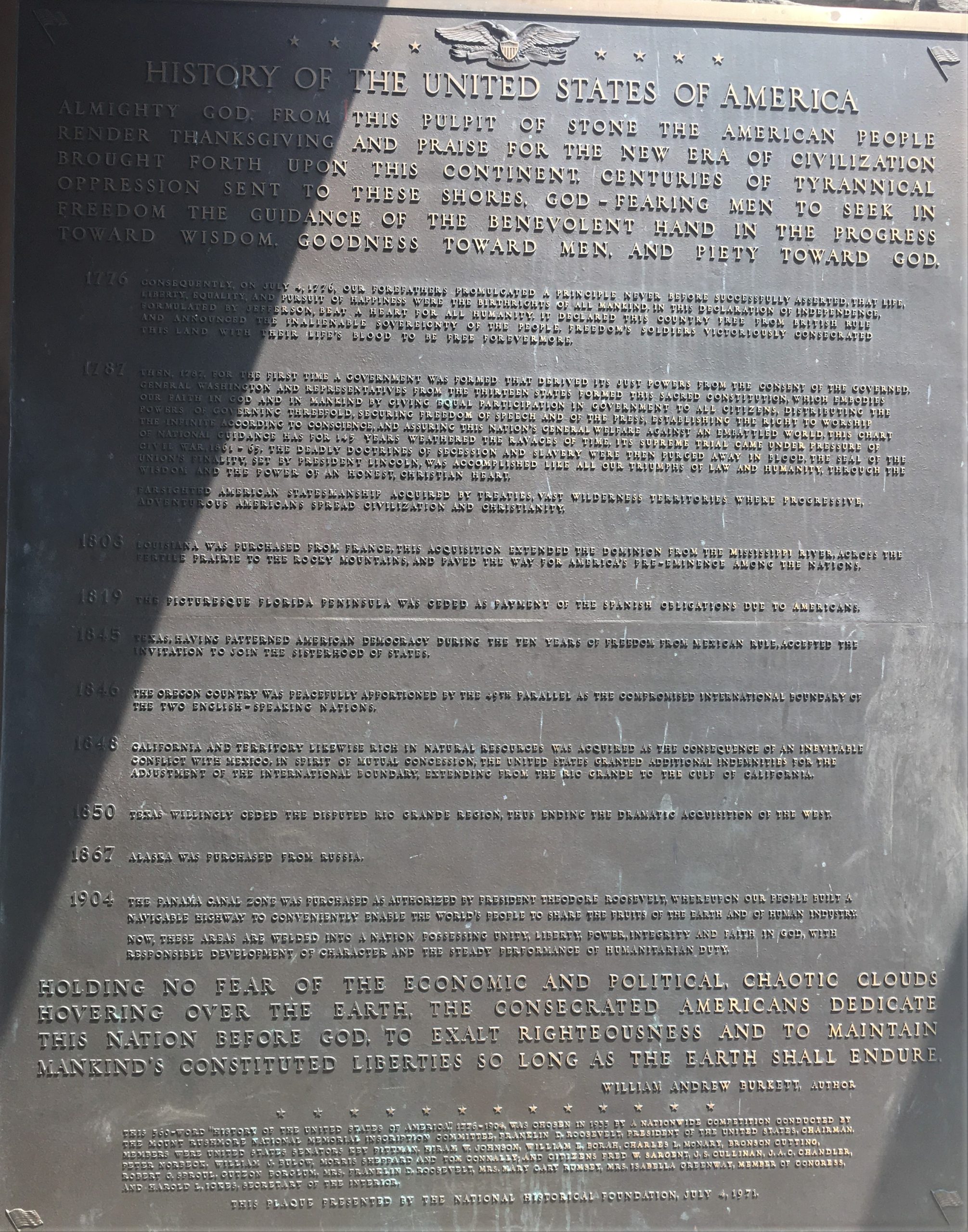
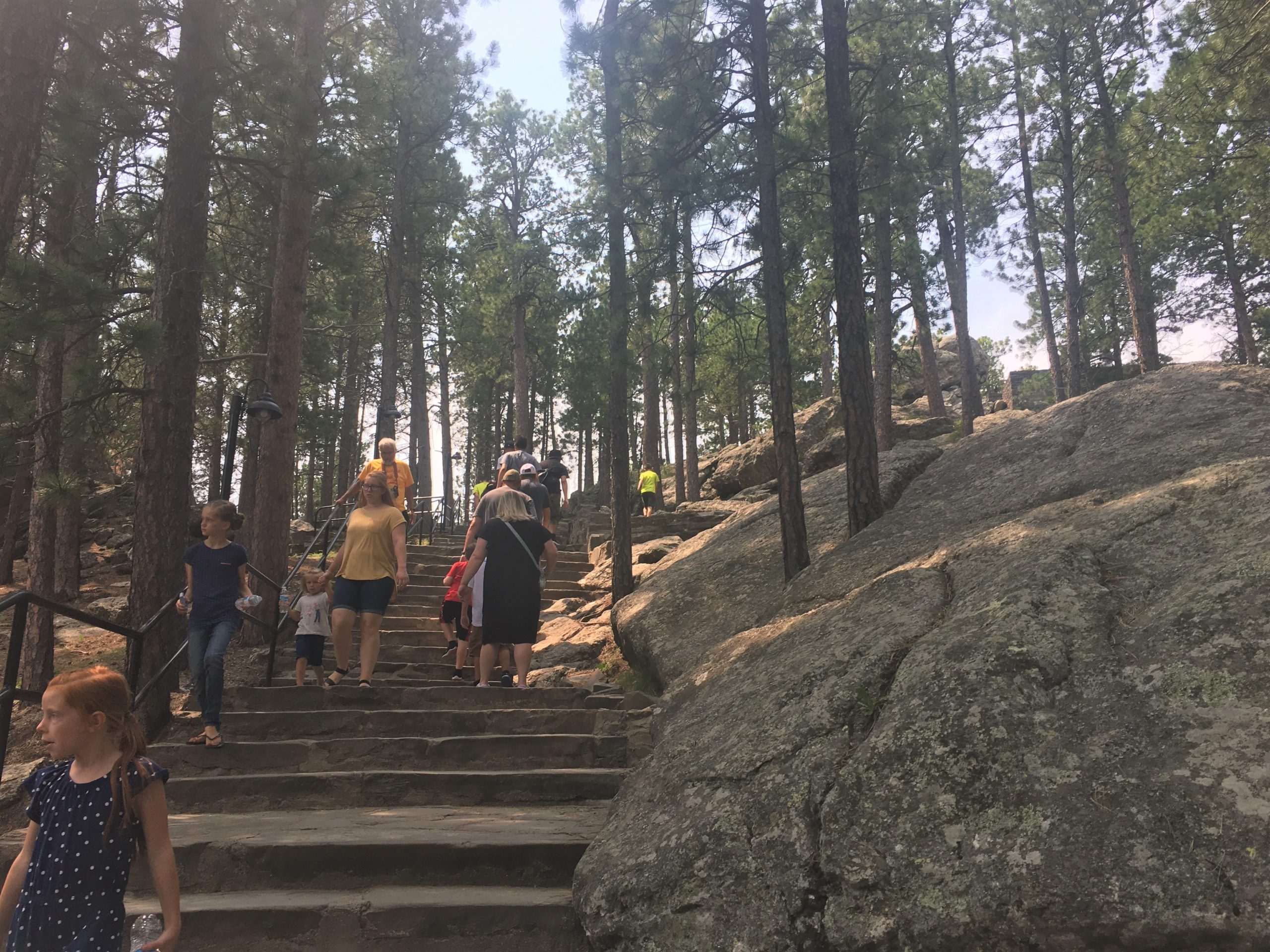
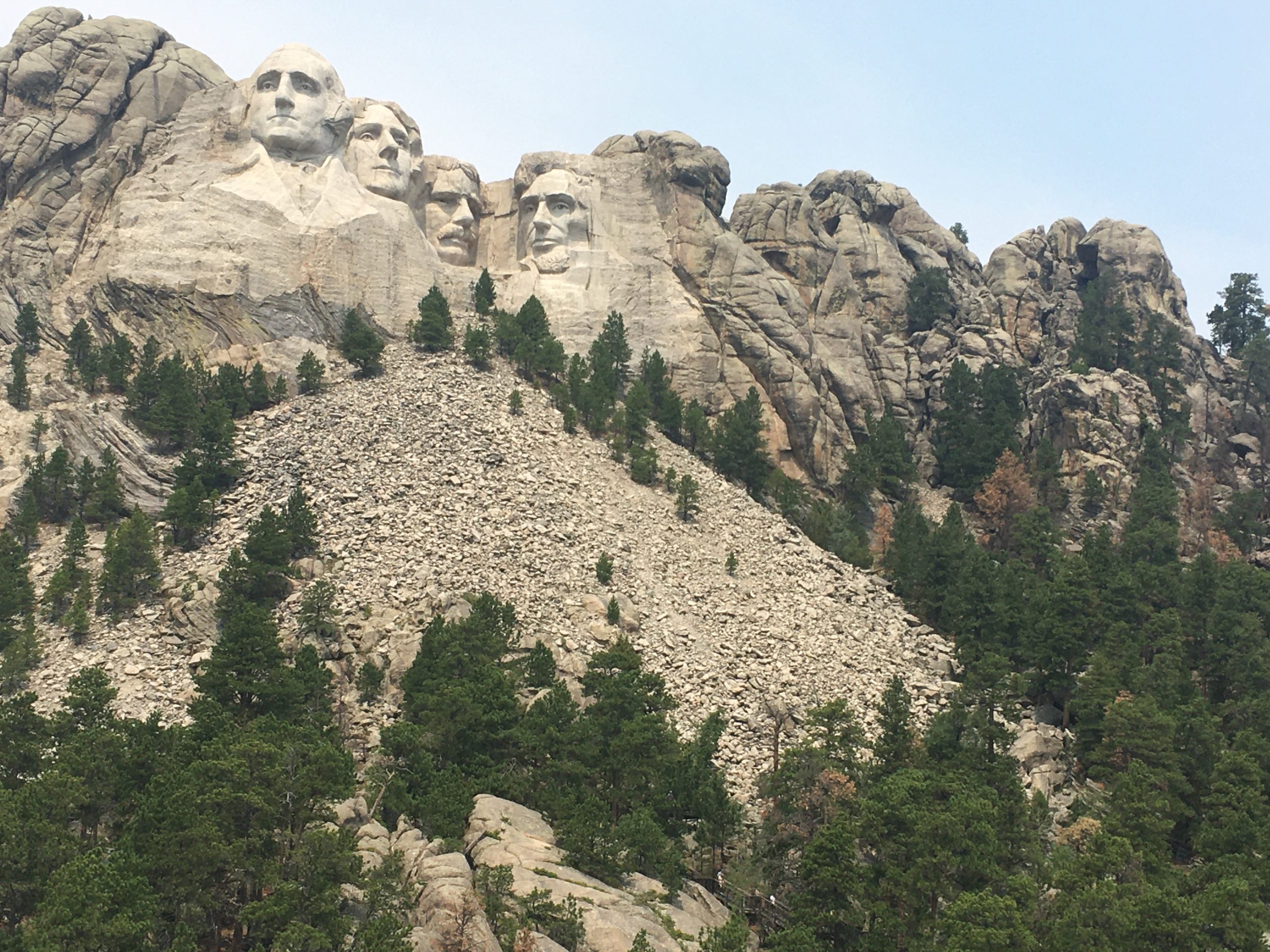
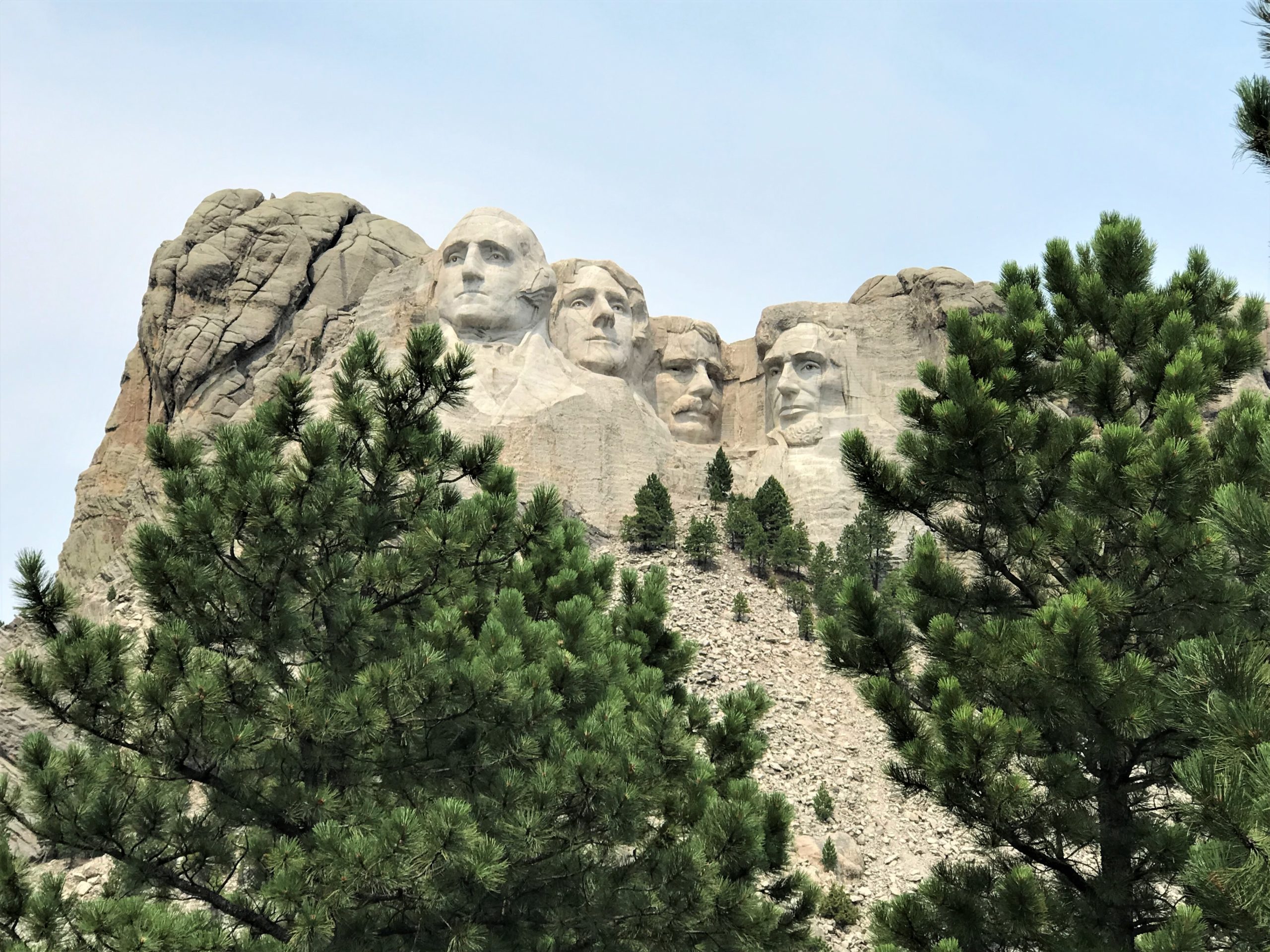
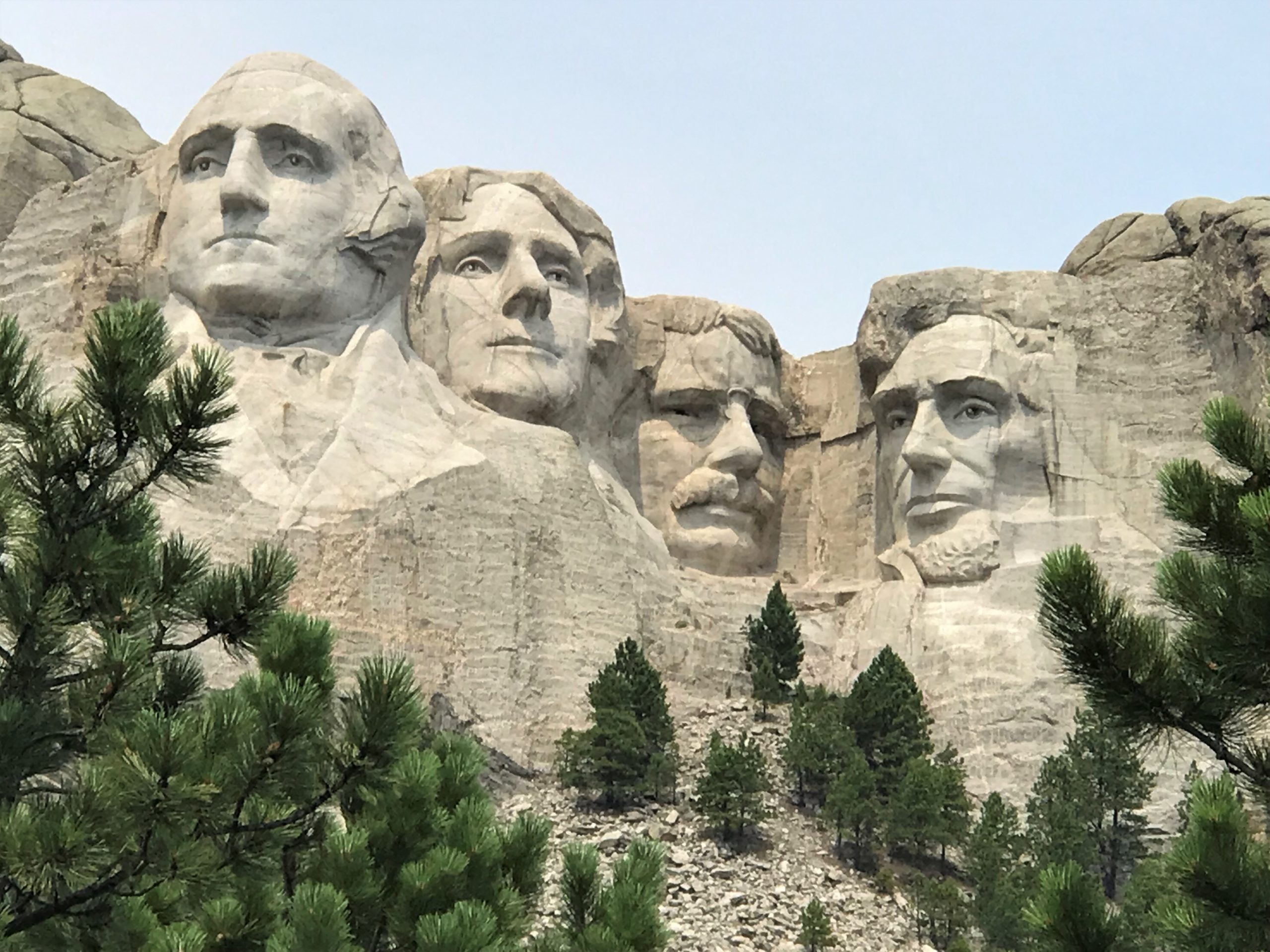
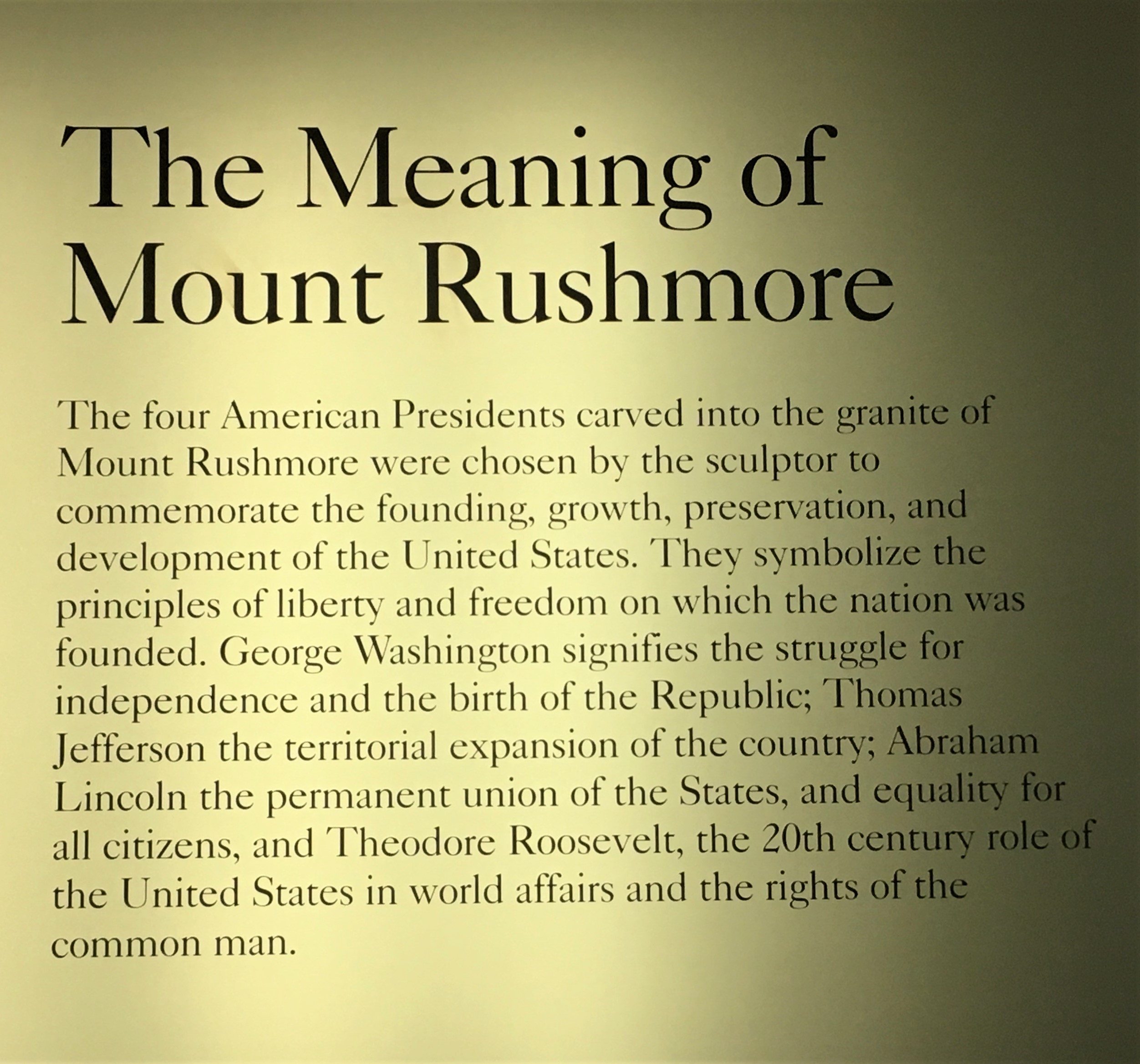
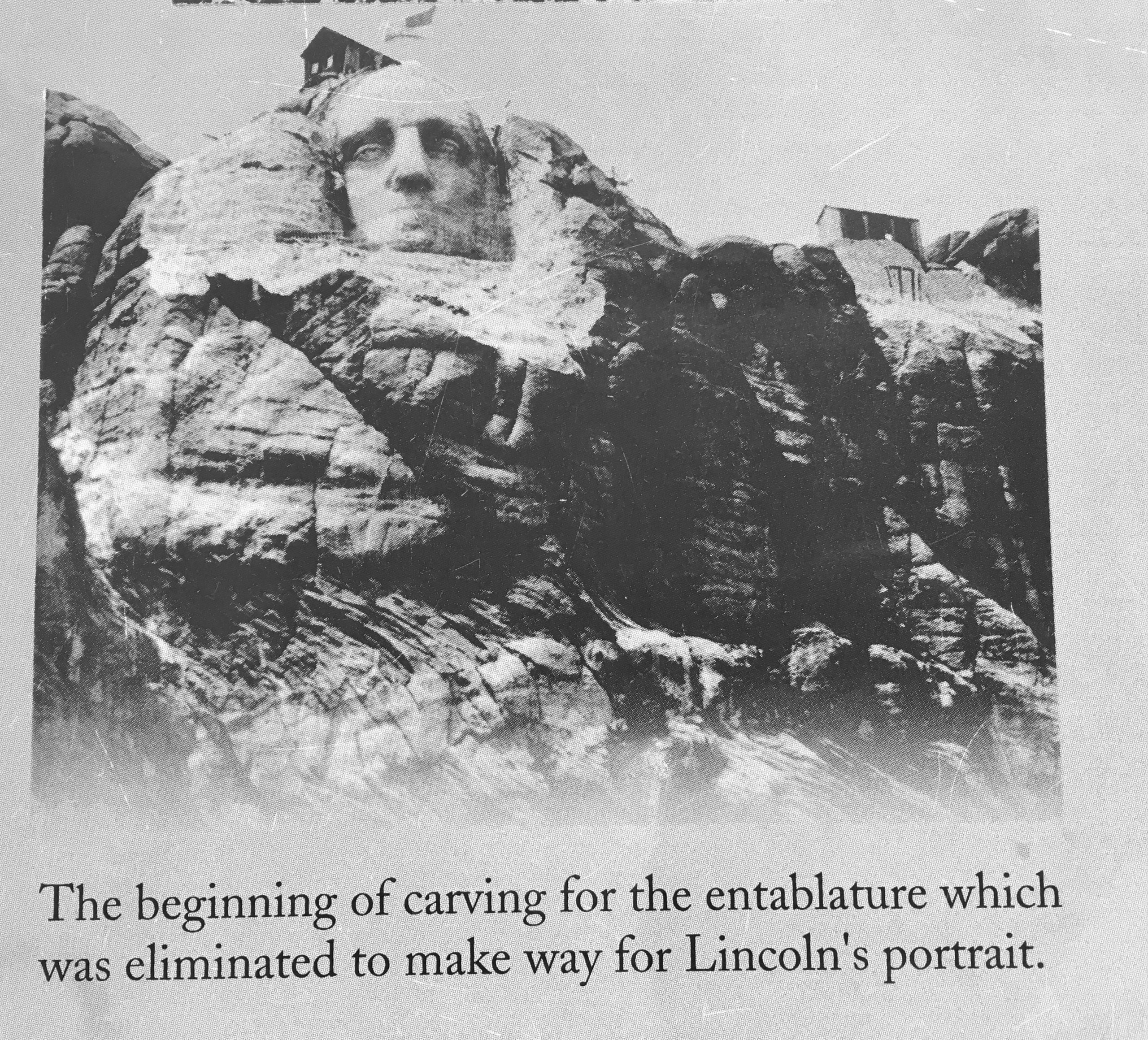
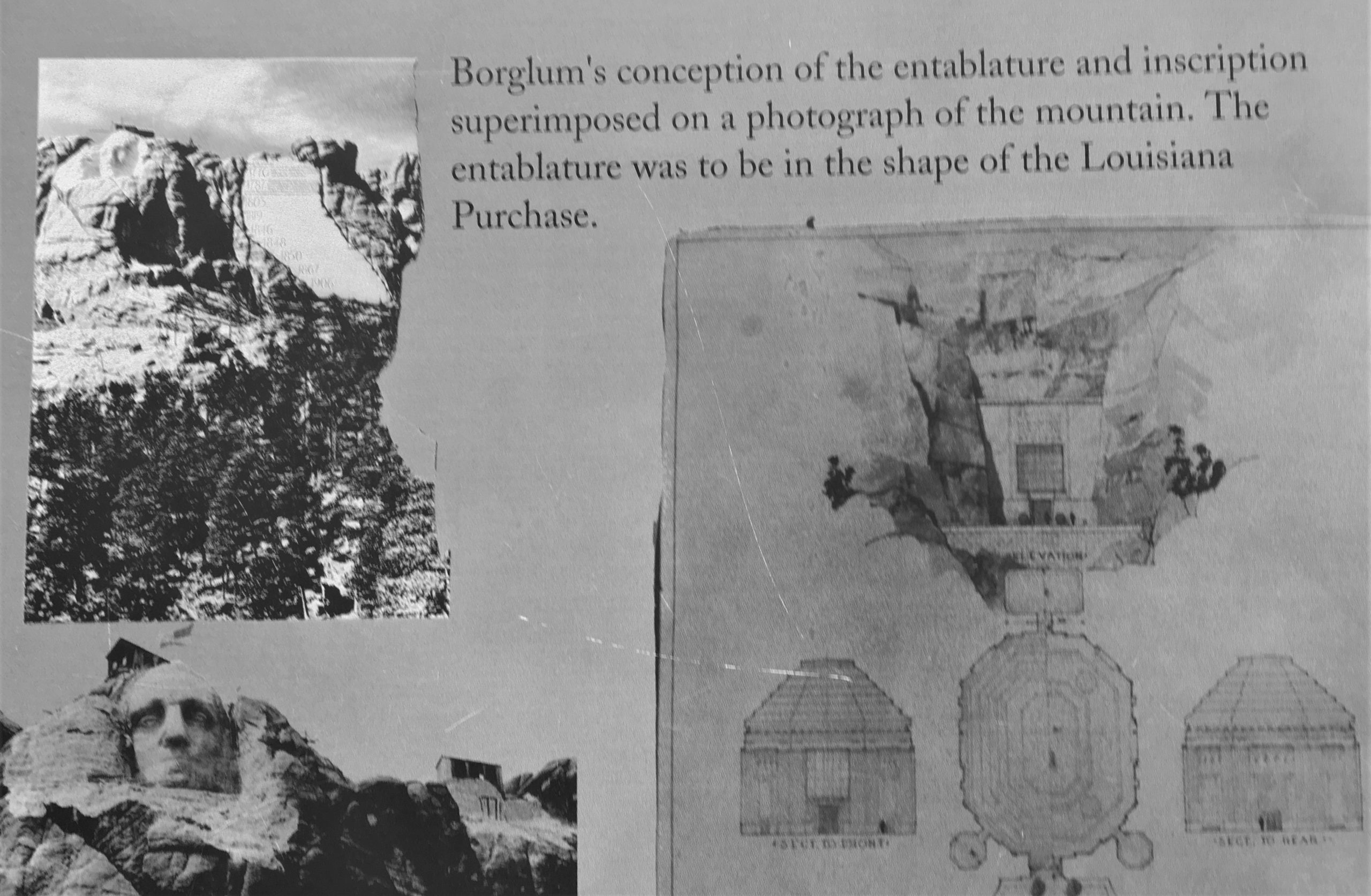
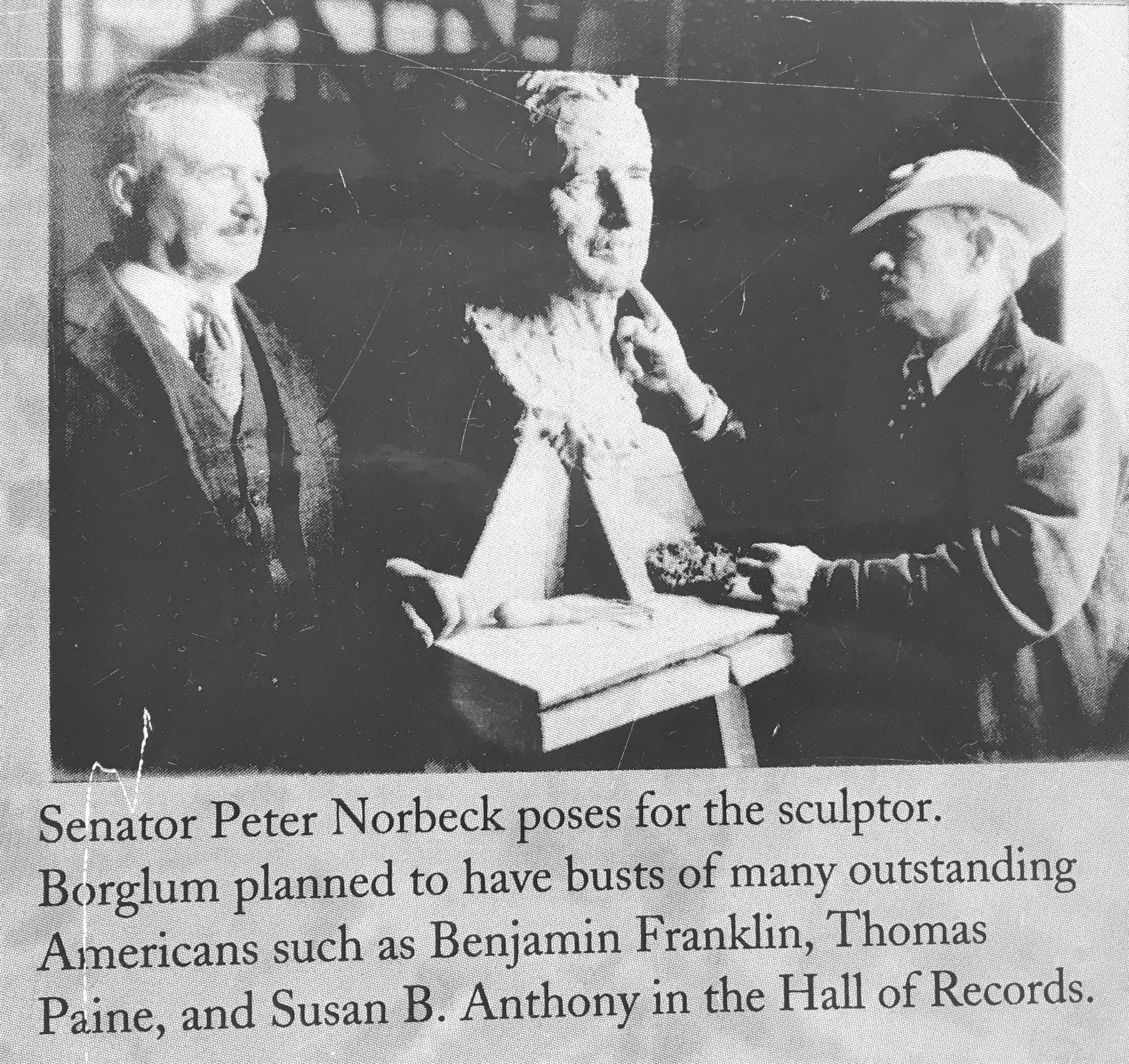
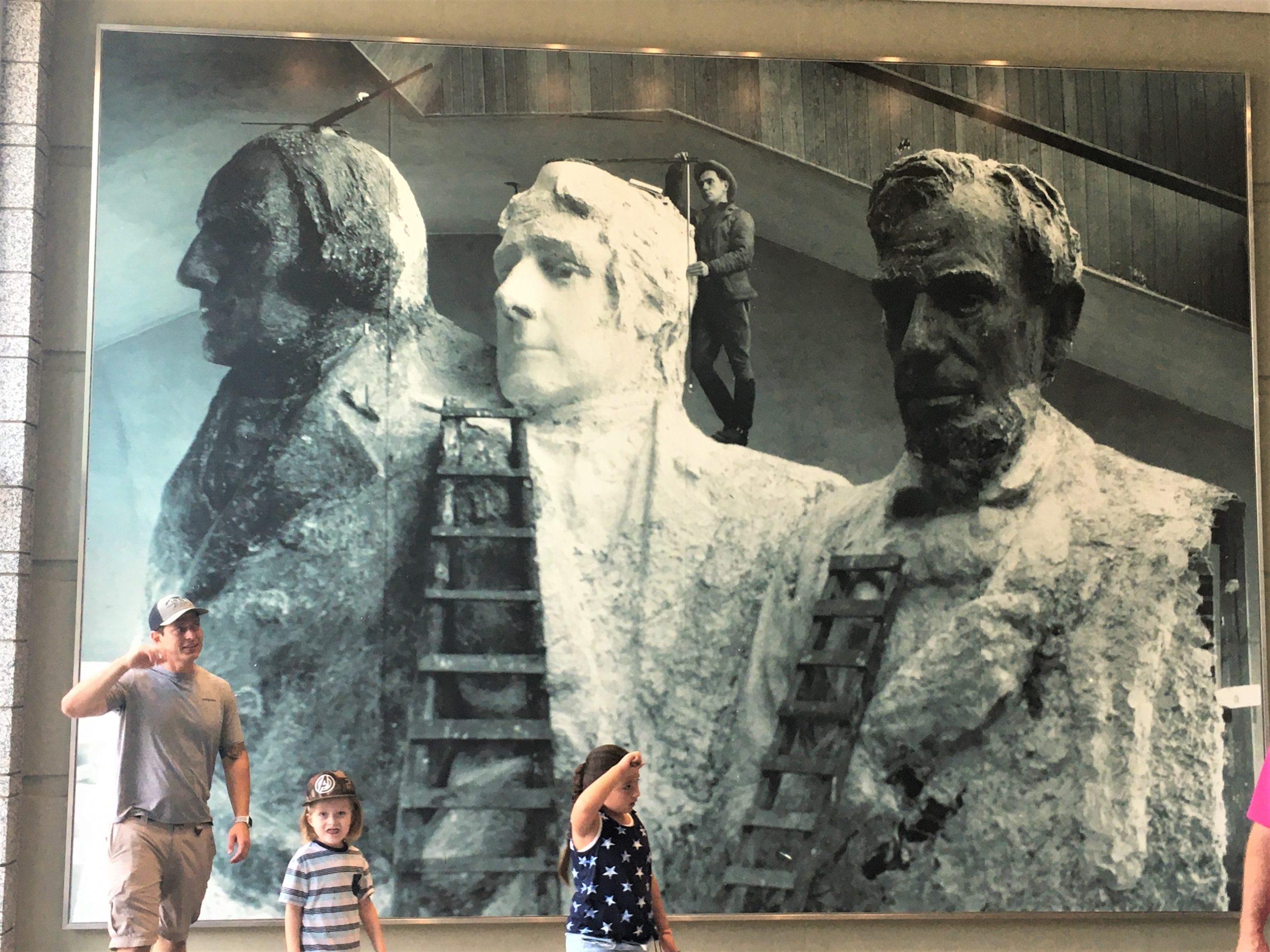
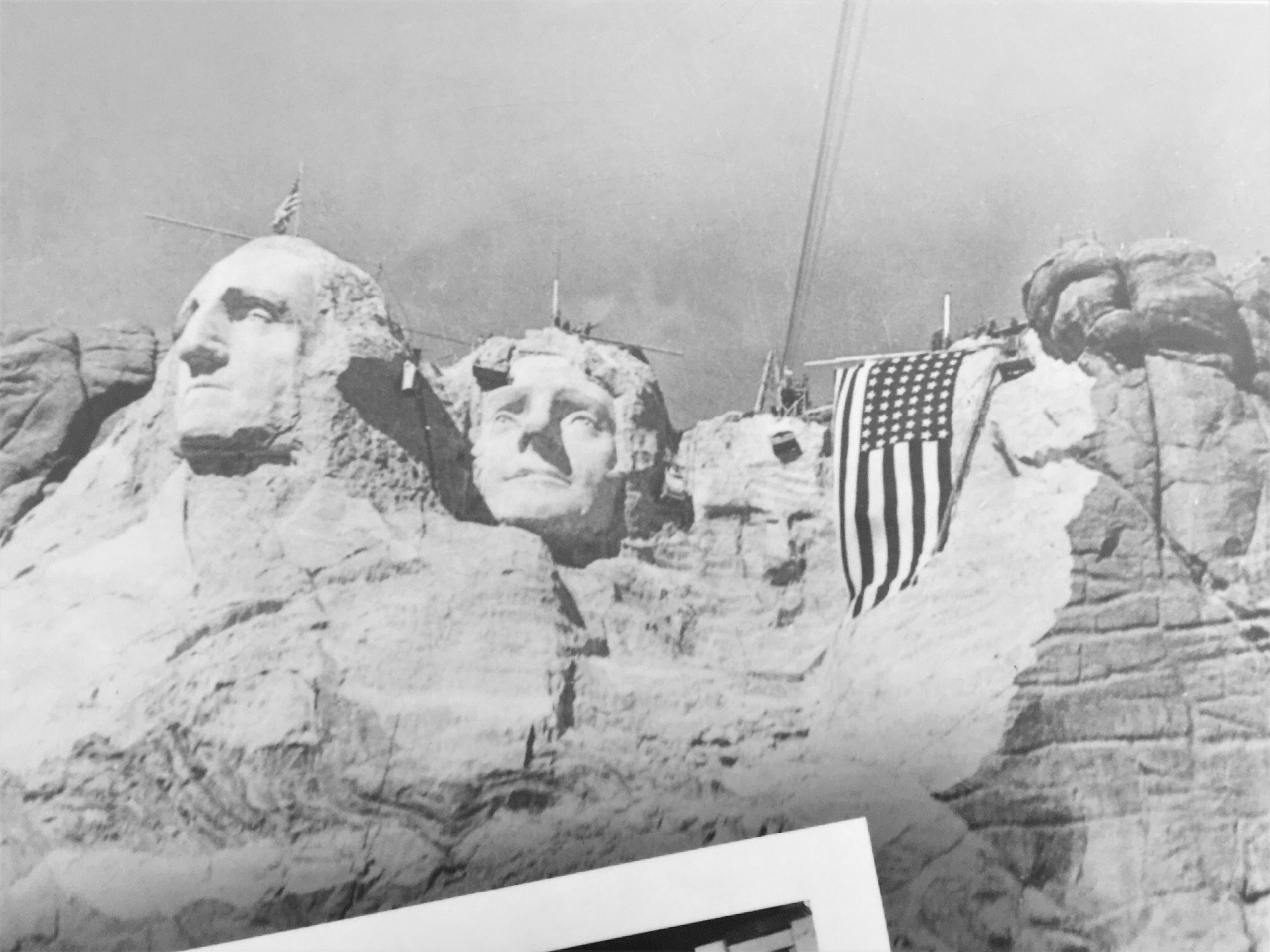
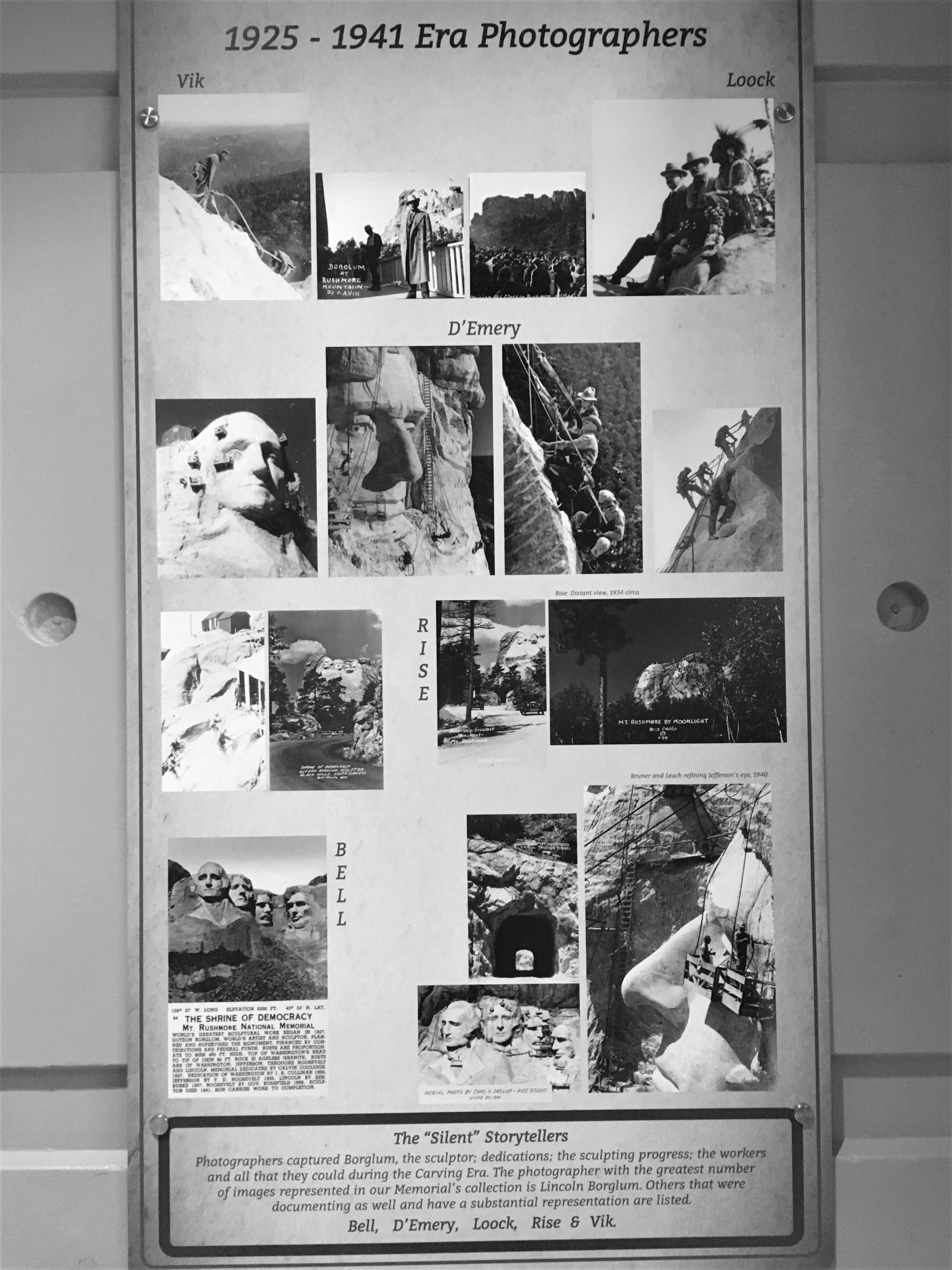
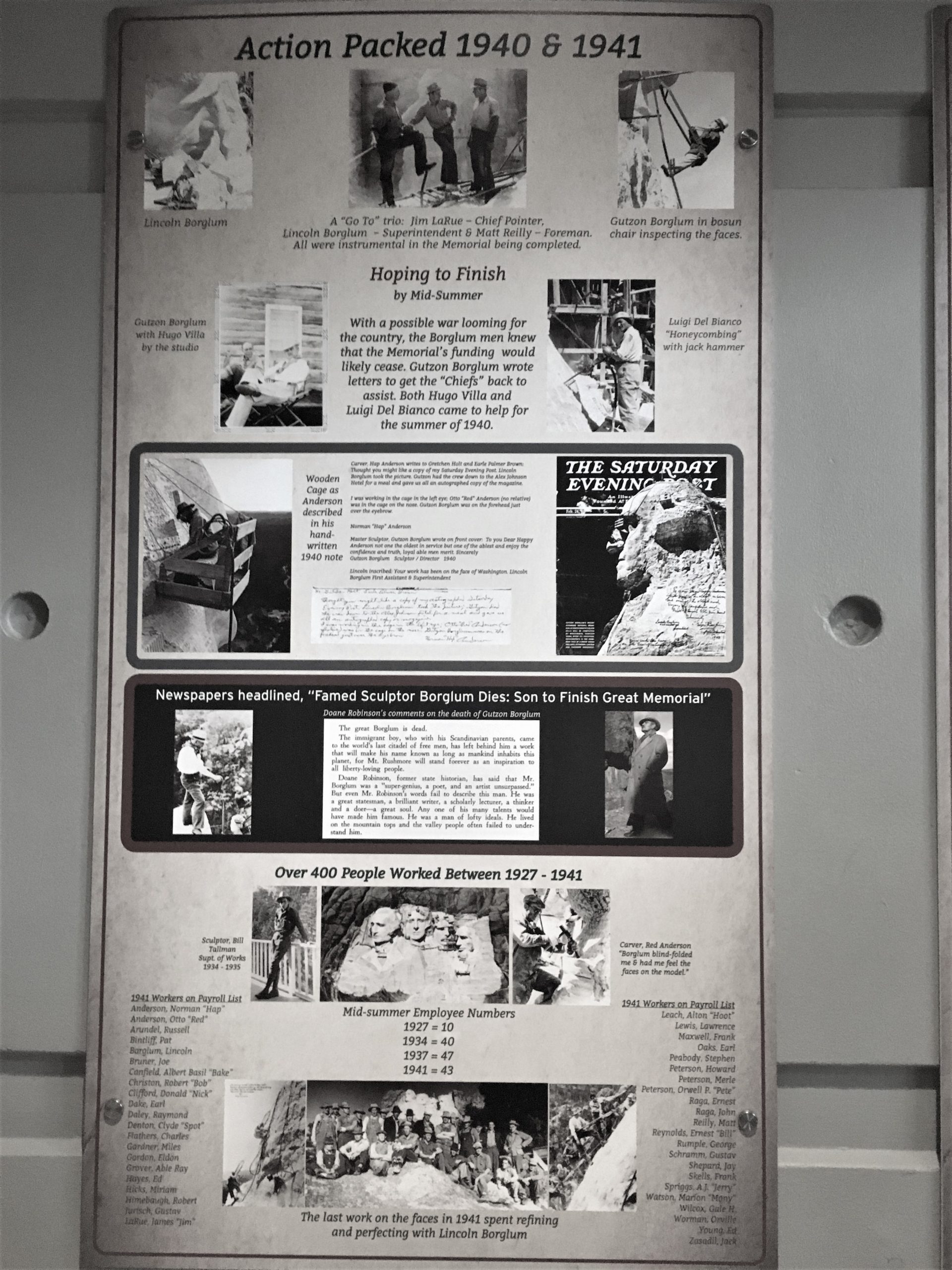
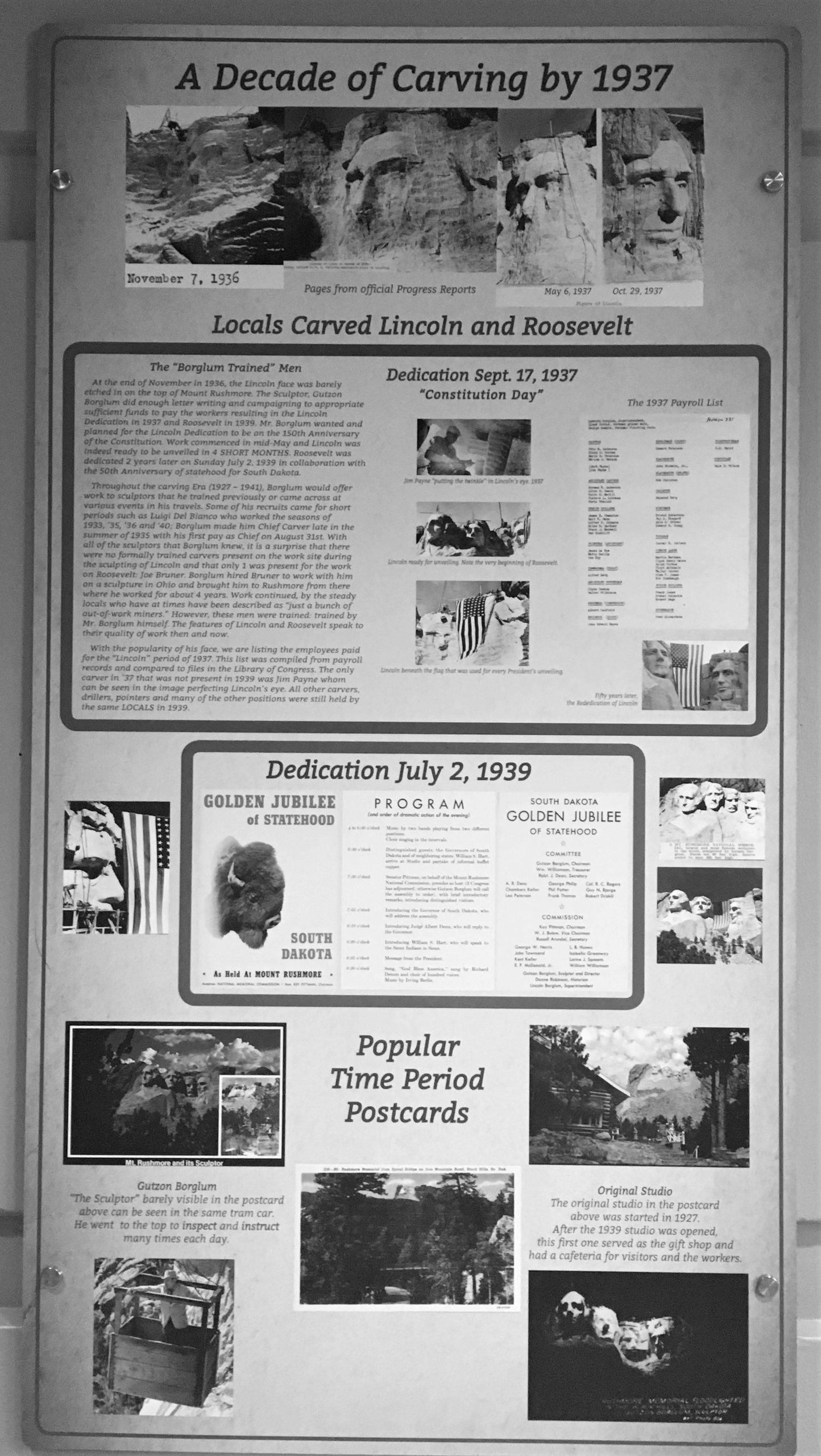

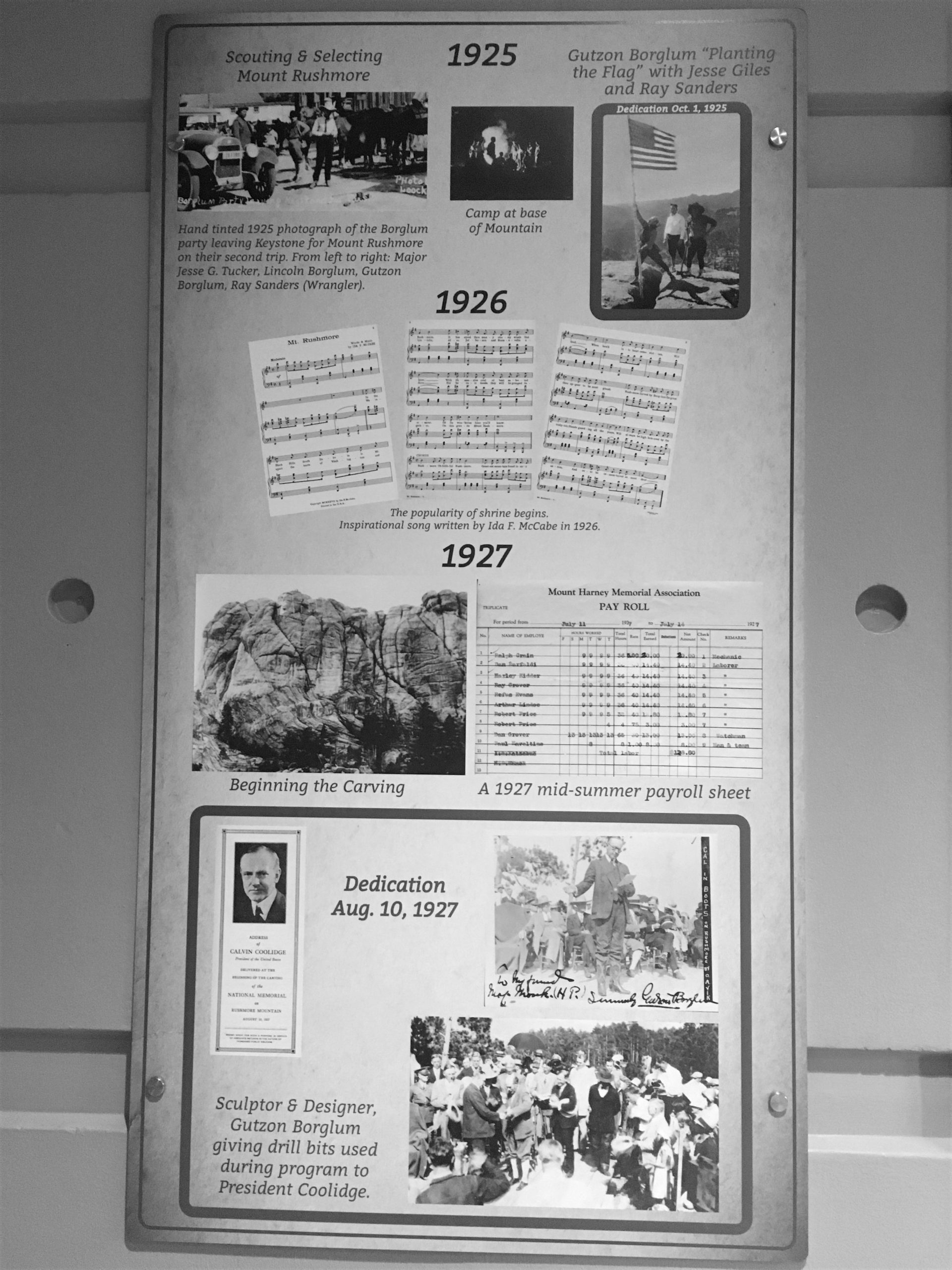


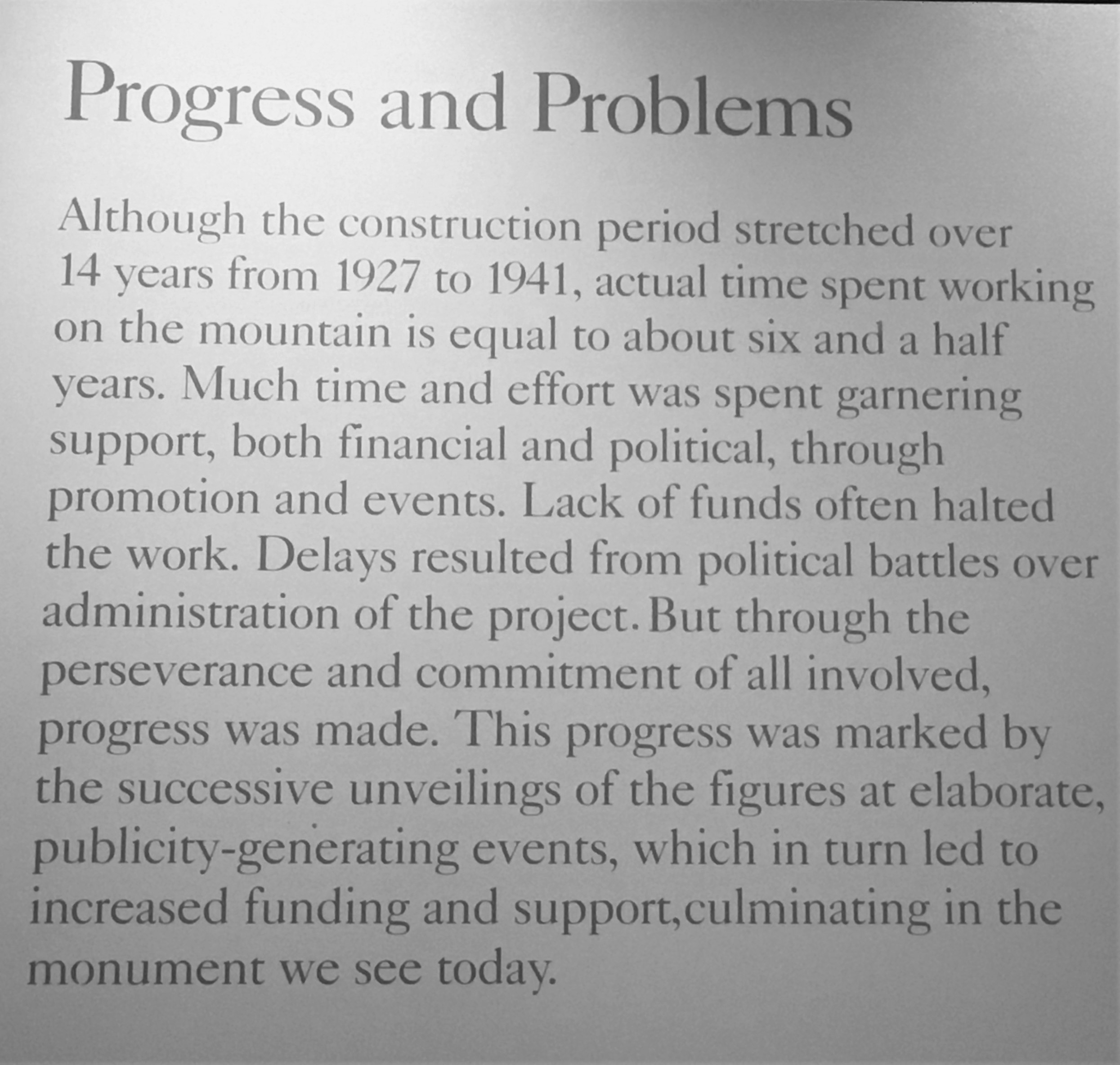
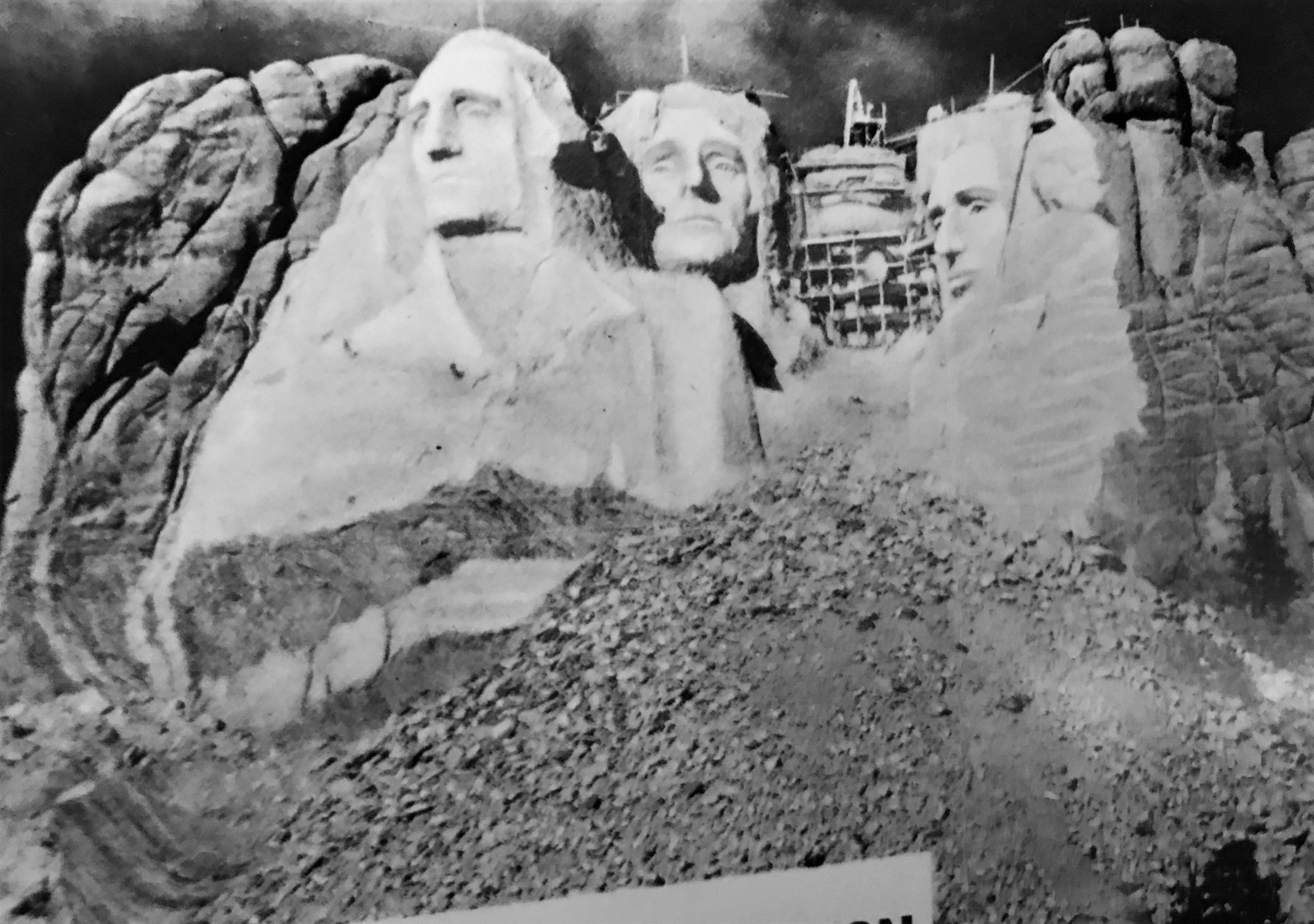
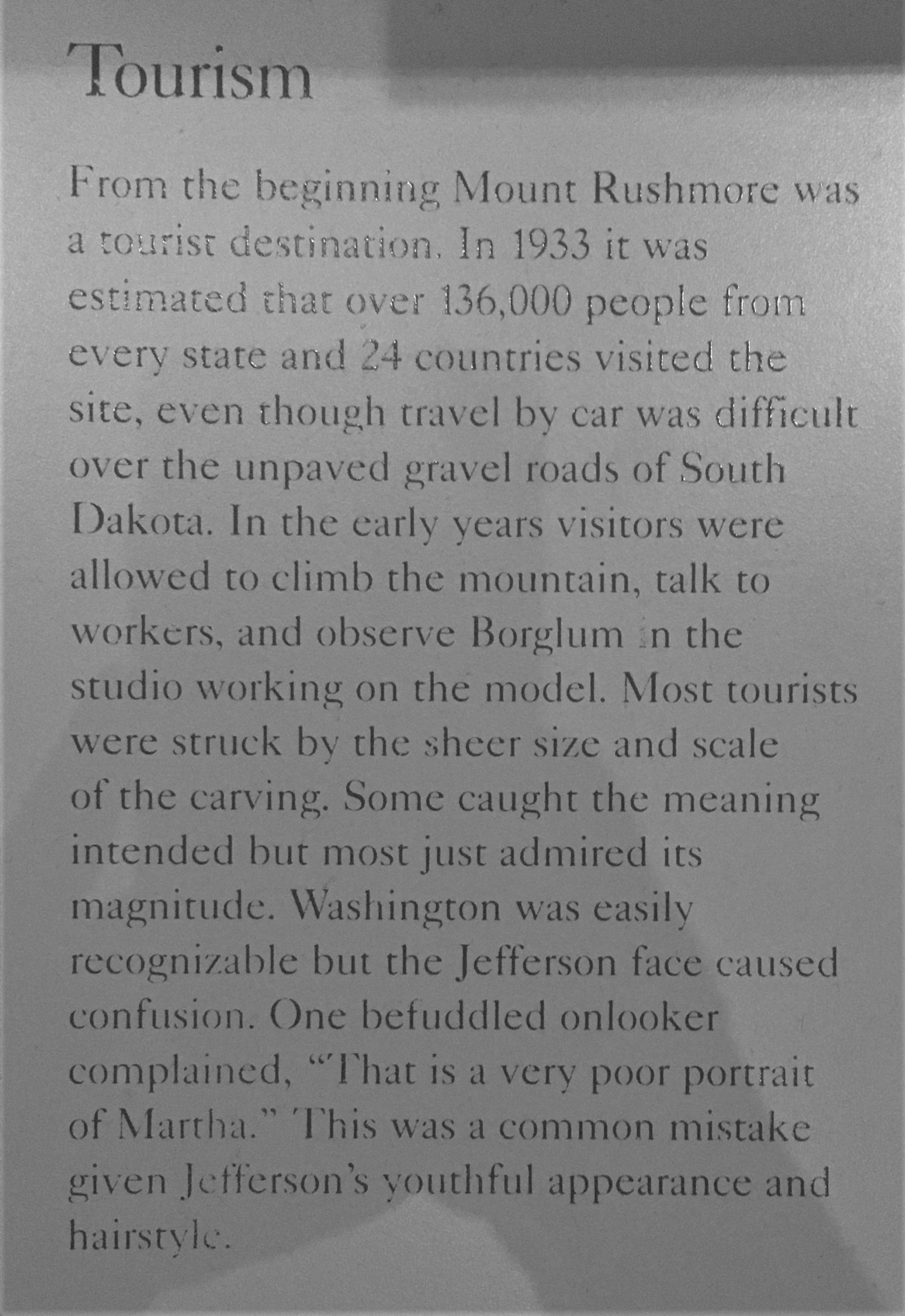
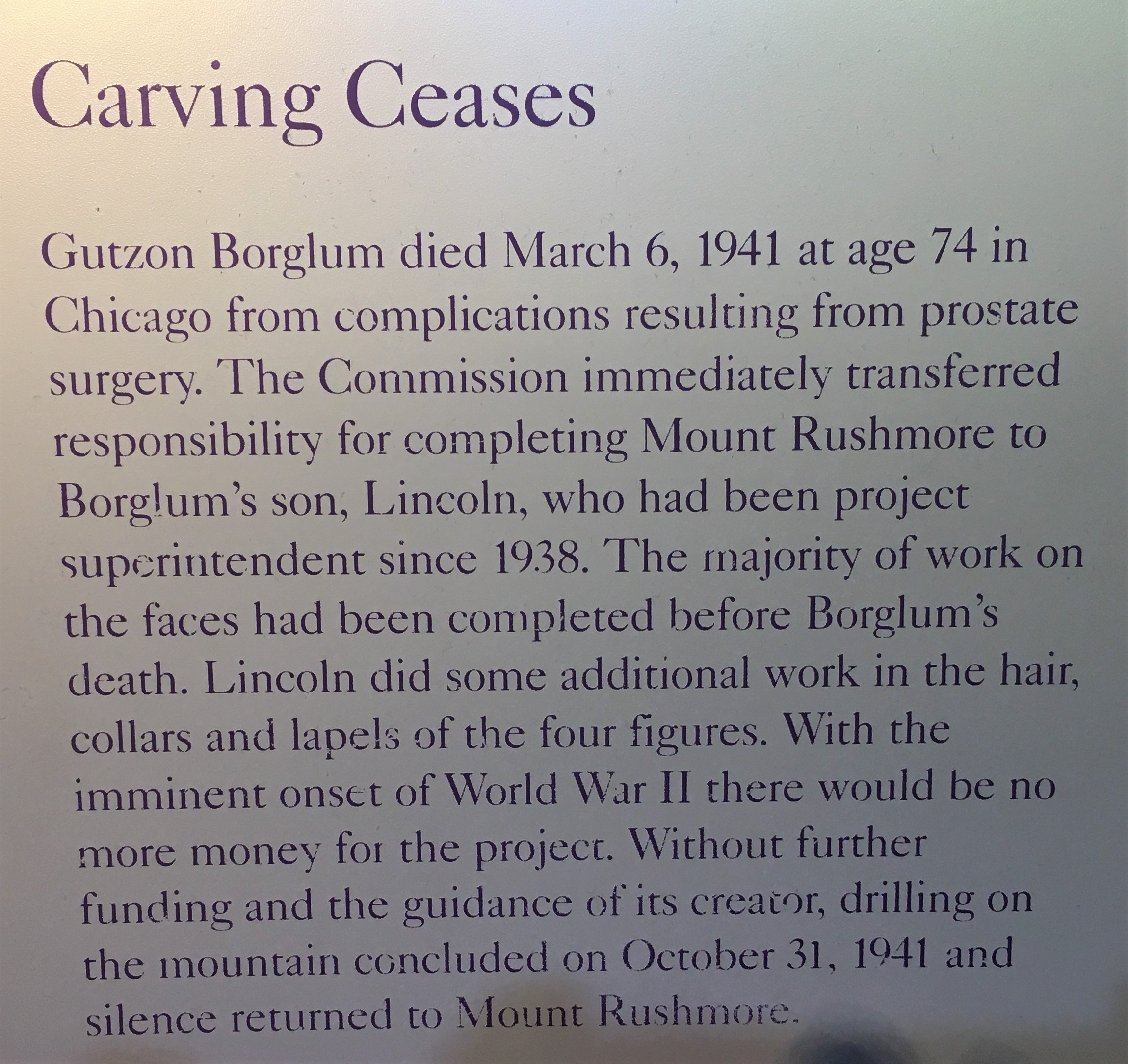
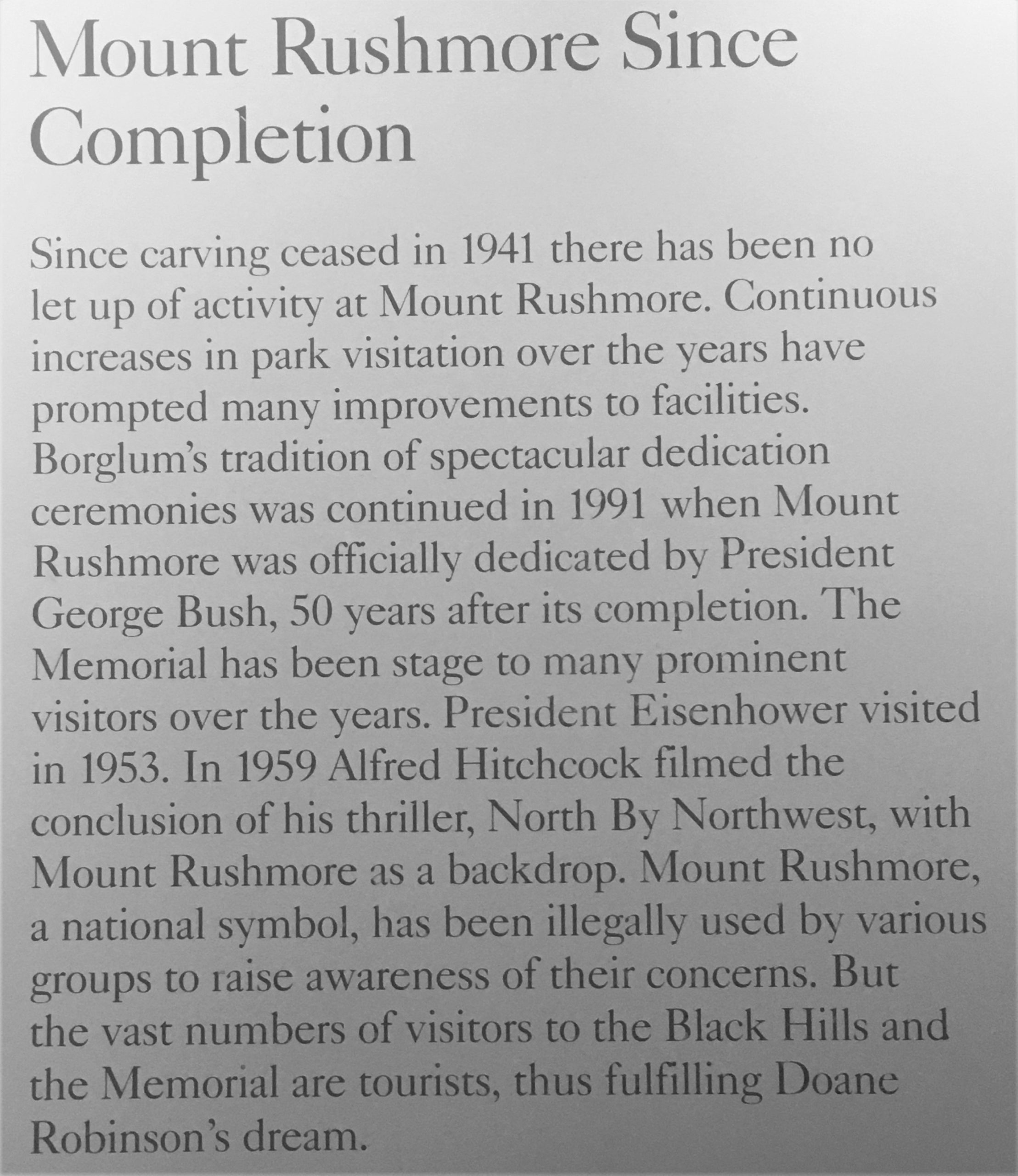
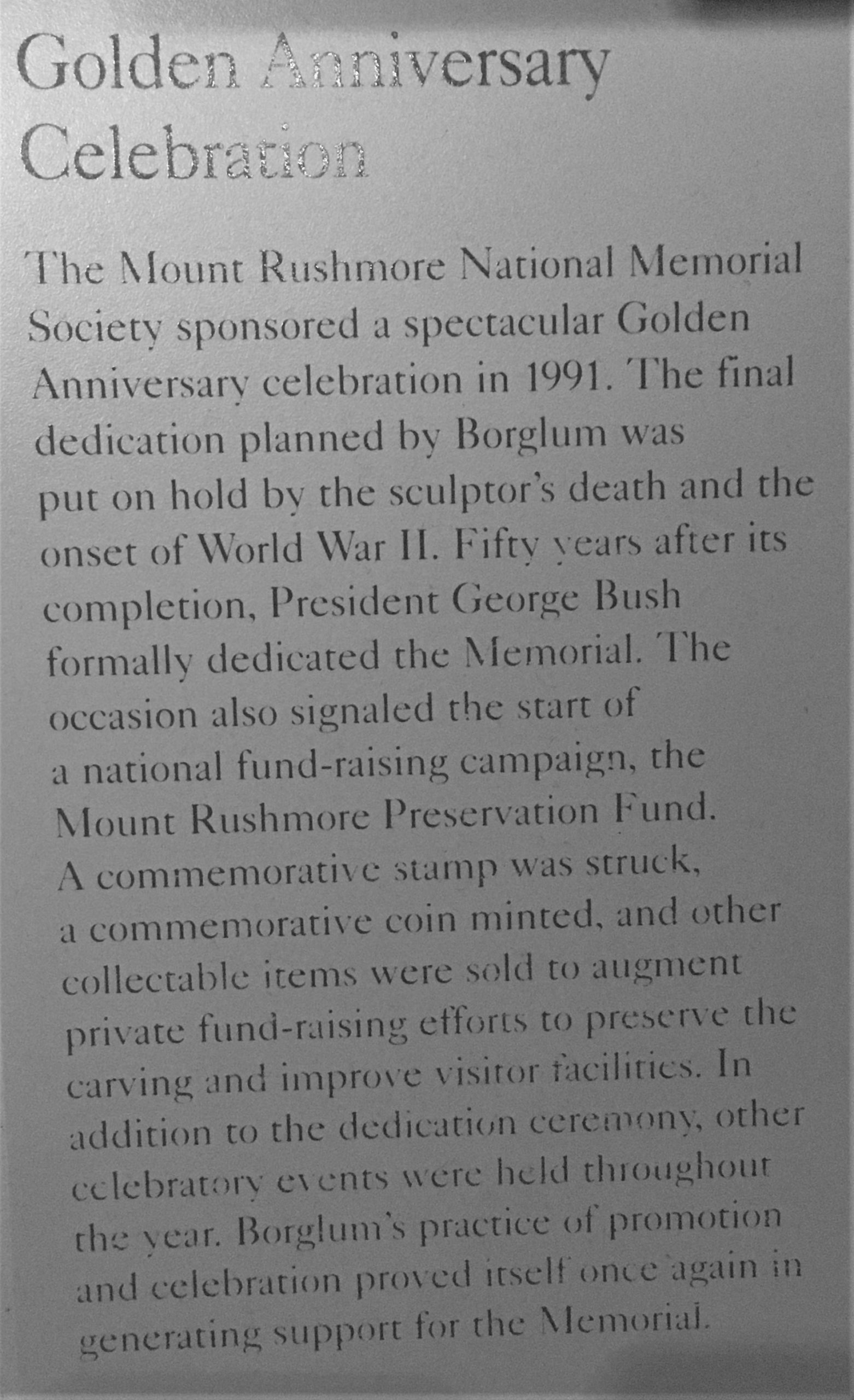
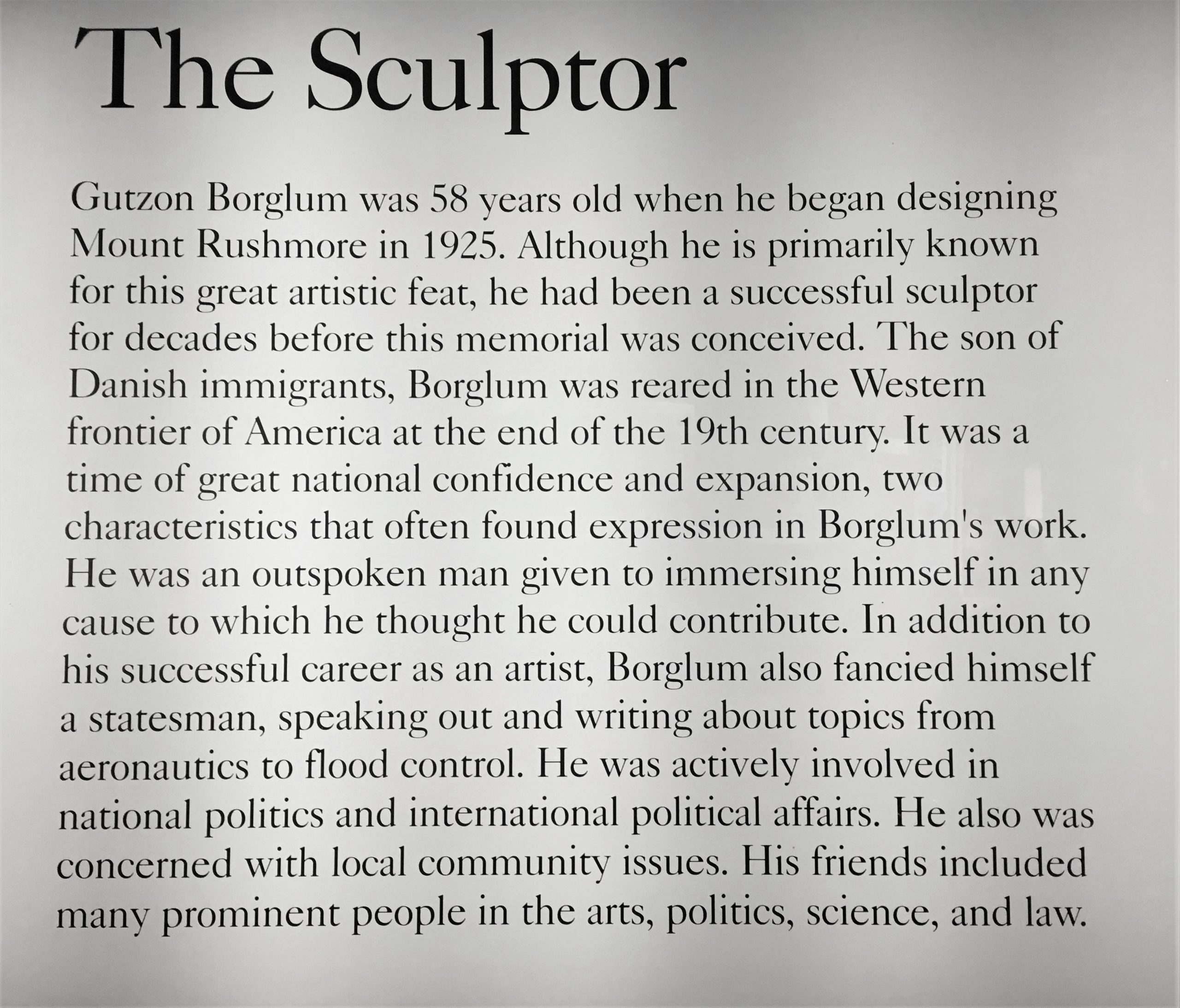
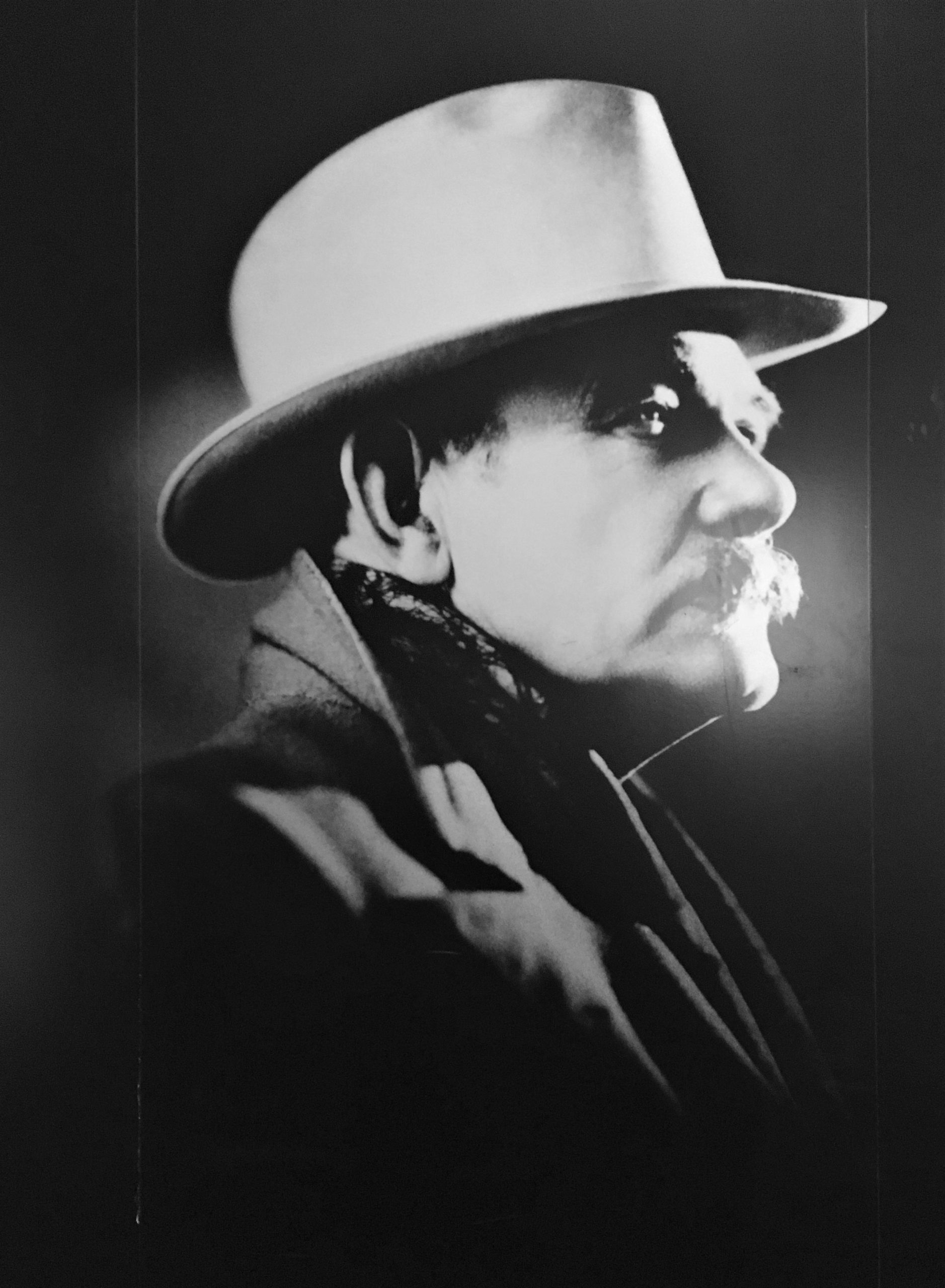
March 25, 1867 – March 6, 1941

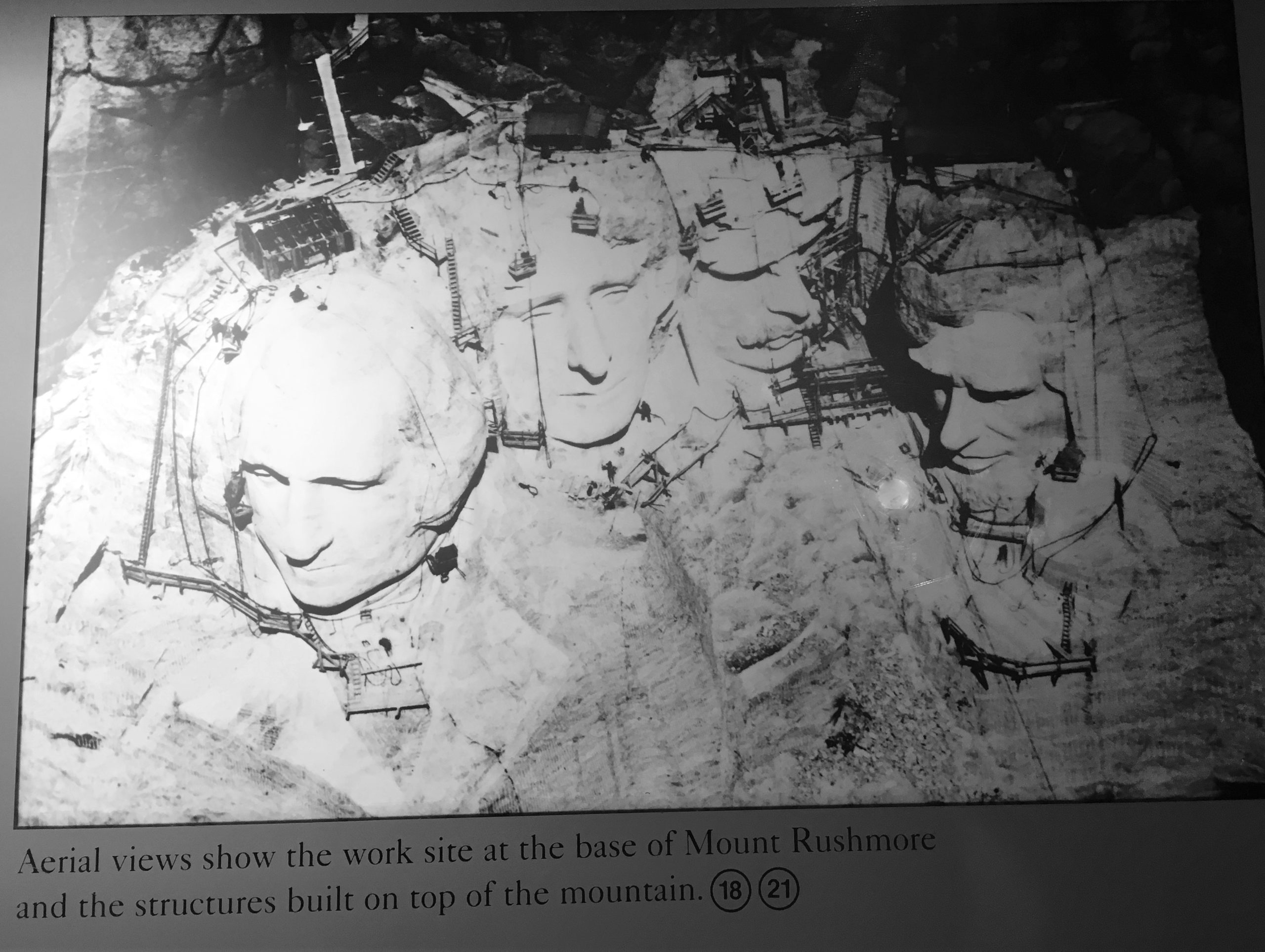
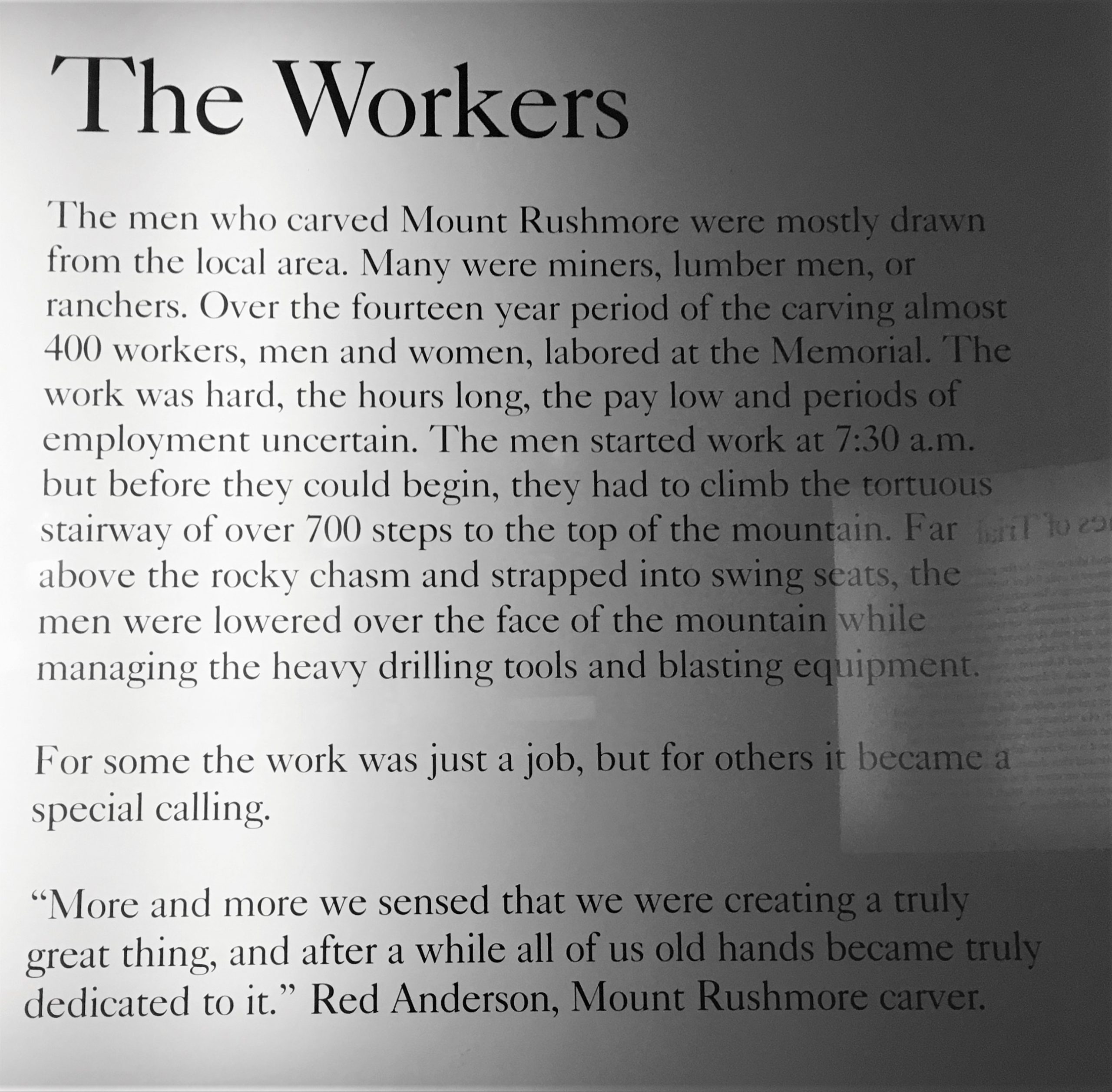
We’re planning on returning some evening for the night show.
Oh! And I had ice cream made from Thomas Jefferson’s very own original recipe! They say he’s the first in America to create a recipe. It was really good, but they gave me a TON! Blaine opted for chocolate, and I don’t know who the company is that makes the other flavors, but it wasn’t as good as mine. 😊
Of course, mine also cost a dollar more.
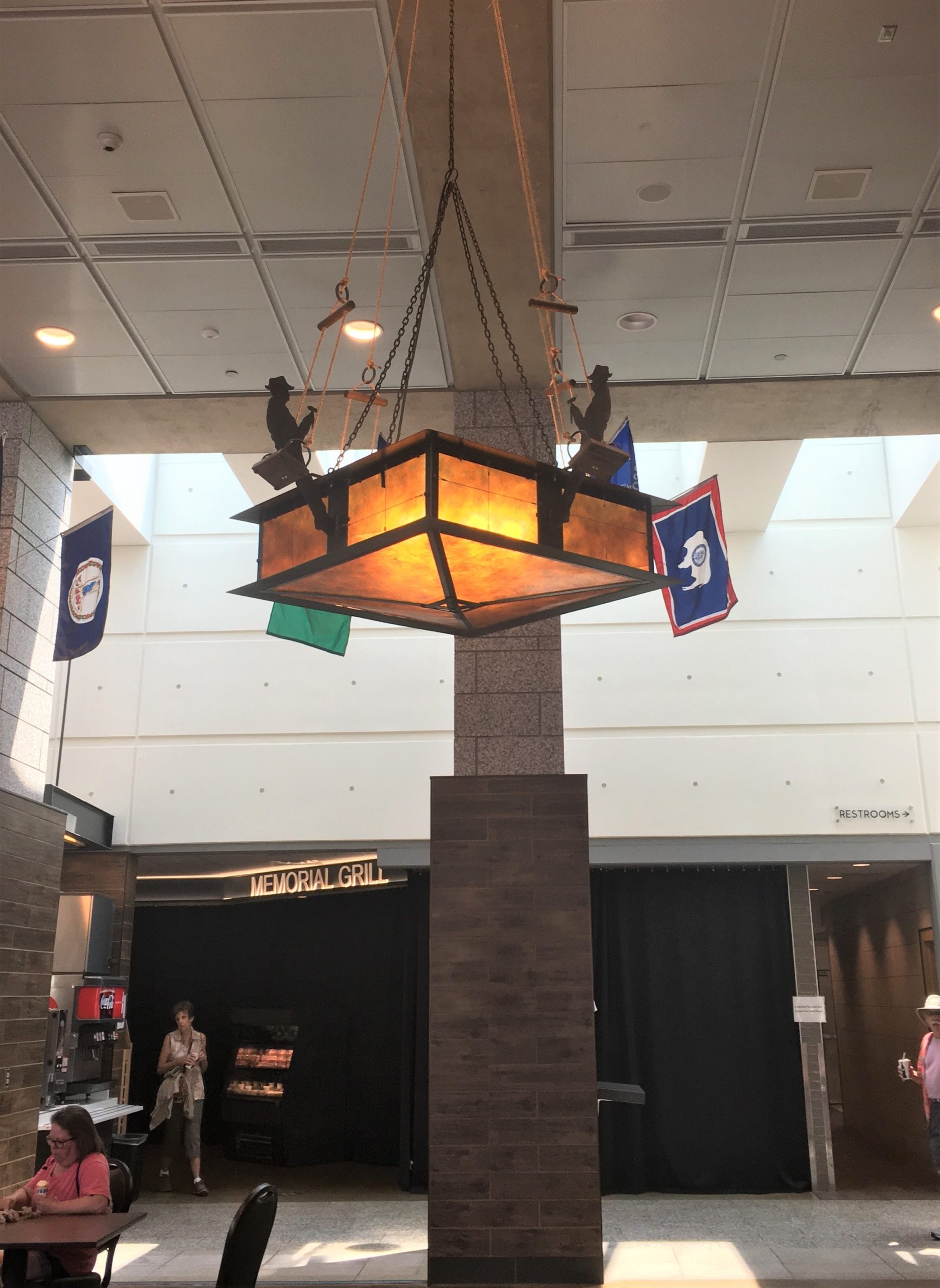
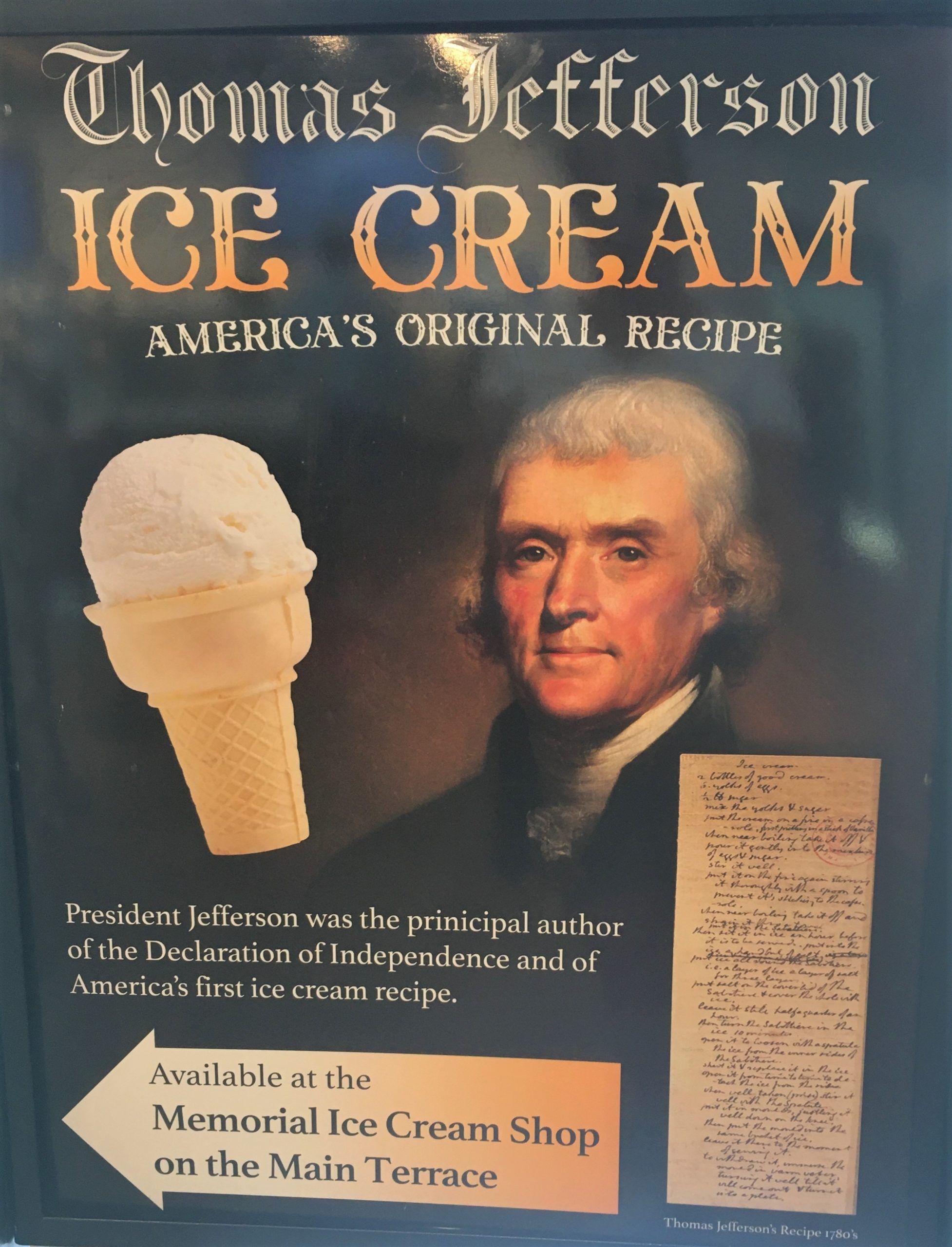
Because we needed to expend more energy, we stopped at Horsethief Lake (crazy name!) and briskly did the sorta loop around it. It’s really only a three-sided trail, unless you want to walk in the busy road, which we didn’t. But that served to make it longer – up one side, turn around, walk to the other end of the horseshoe, turn around . . . Pretty lake. Weird name. I didn’t find the reason for the name, but I did find this interesting tidbit of information on rapidcityjournal.com, from a 2015 article focused on dredging the CCC-made lakes within the Black Hills National Forest.
. . . . the project removed 20,000 cubic meters of sediment from Horsethief Lake, but sediment wasn’t all that was at the bottom. The crews found 1,000 shoes, five GoPros, a boat, and an old parking lot and road with two bridges that were there before the area was made into a lake in the 1930s.
Huh. Whatdayathinka that???
I wanna know who took the time to count all those shoes . . .
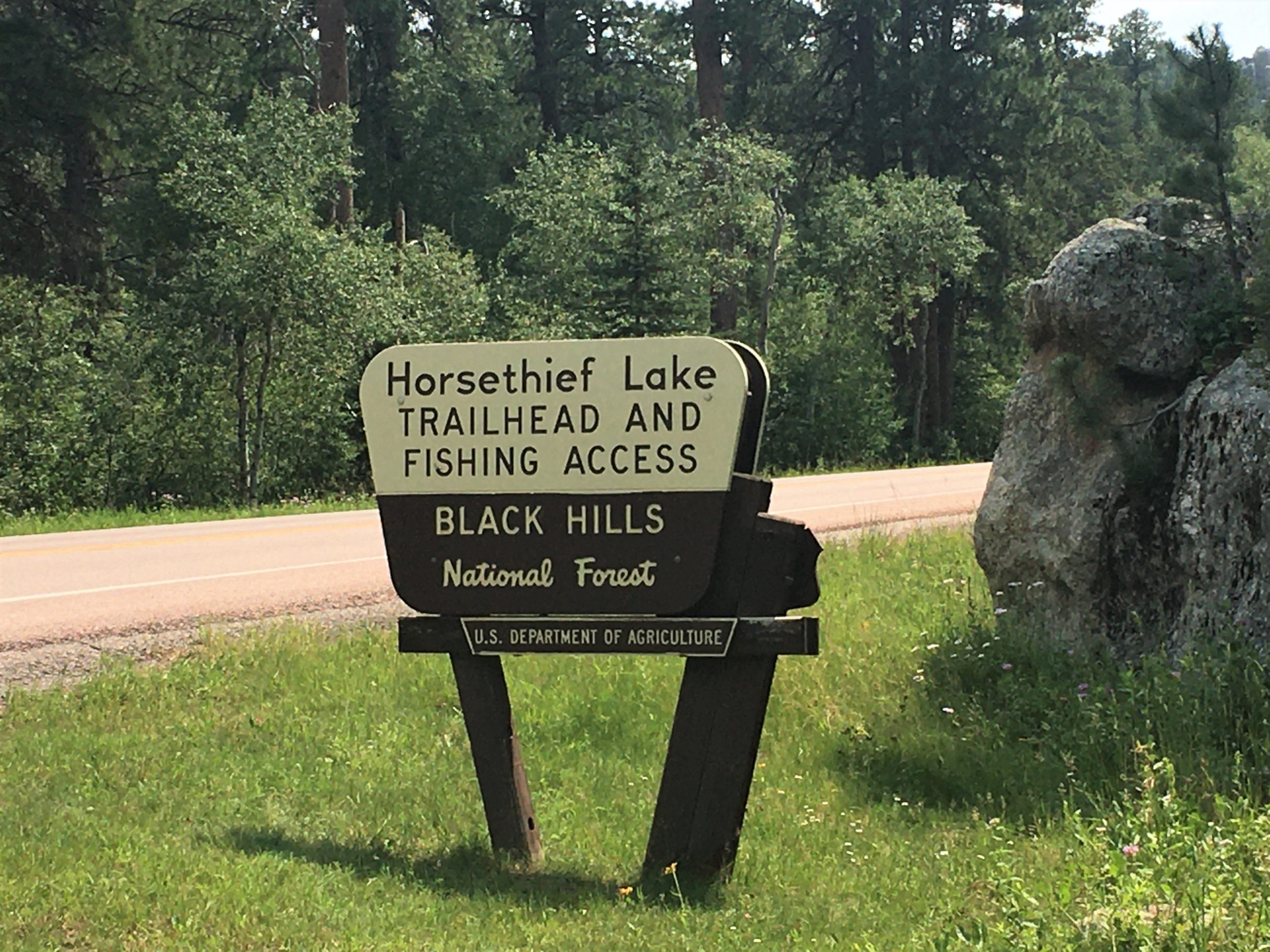
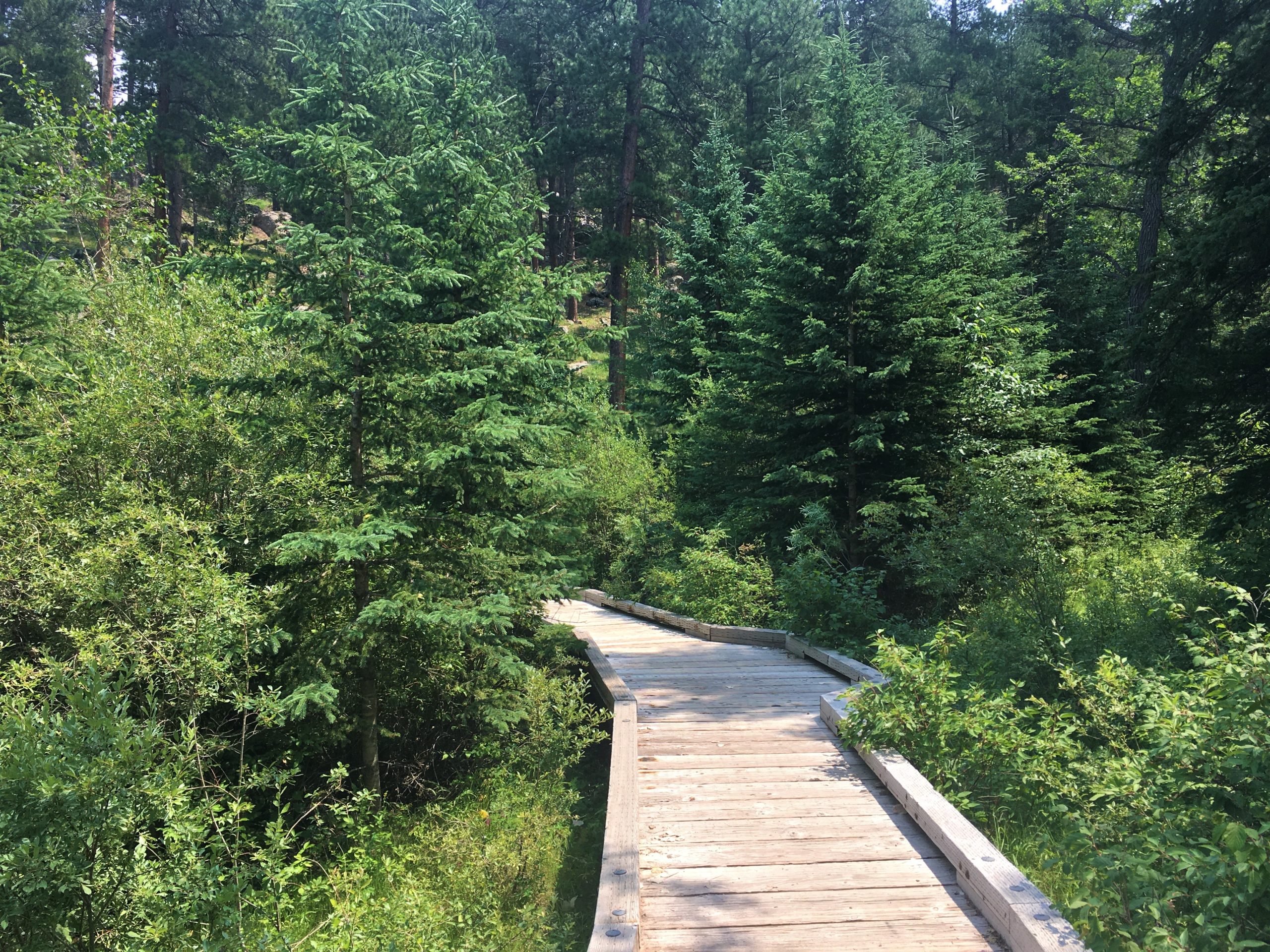
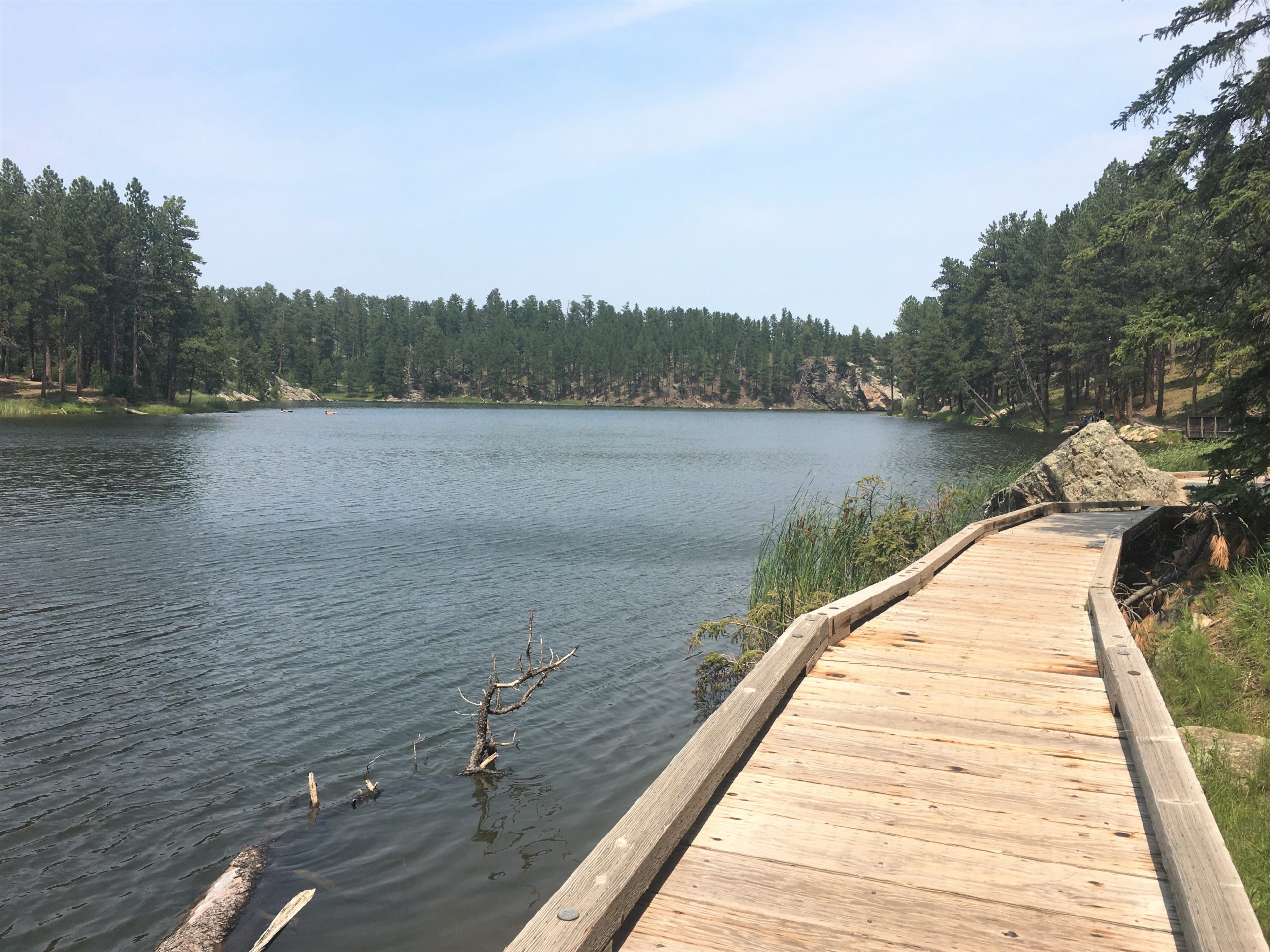
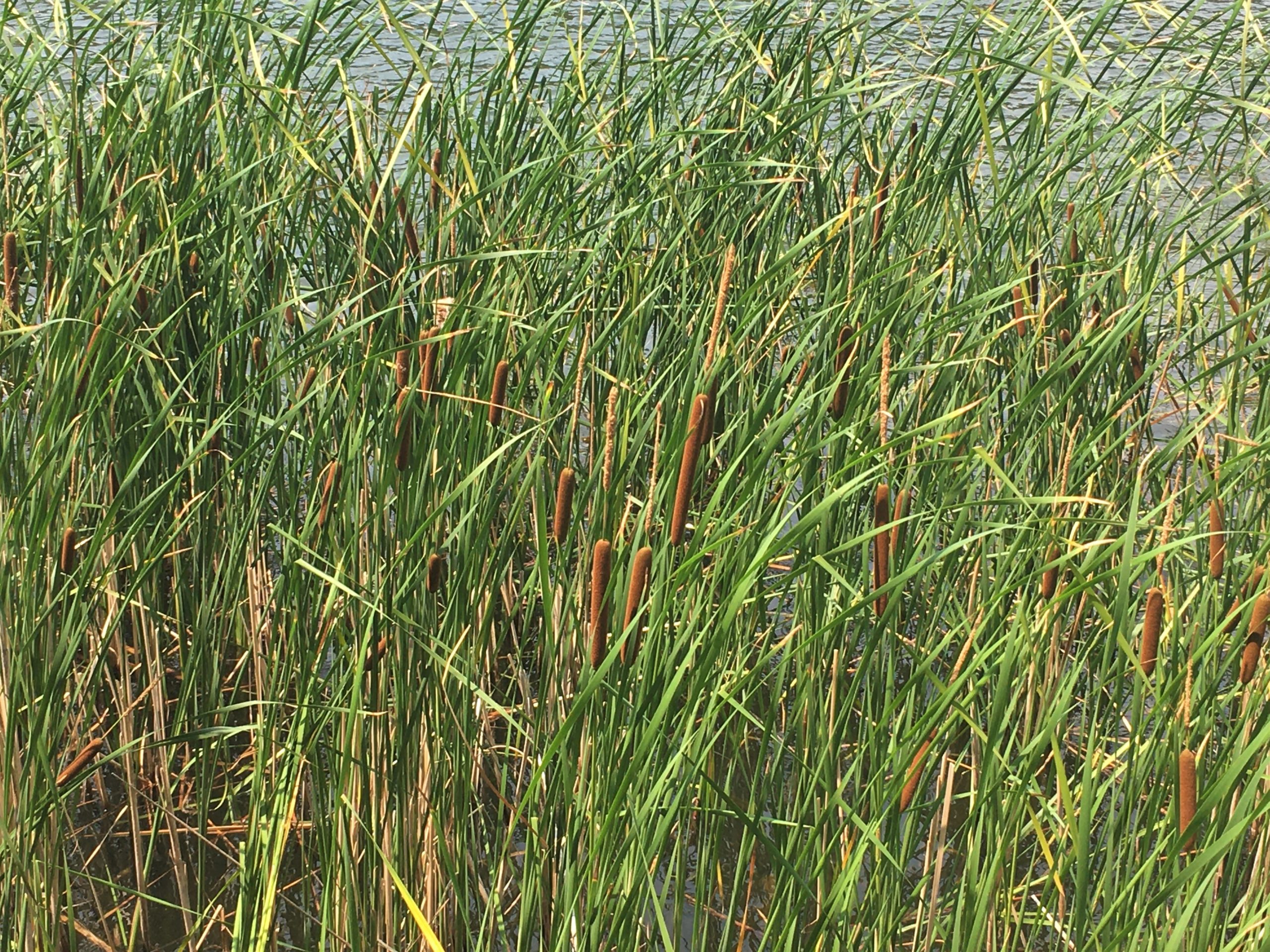
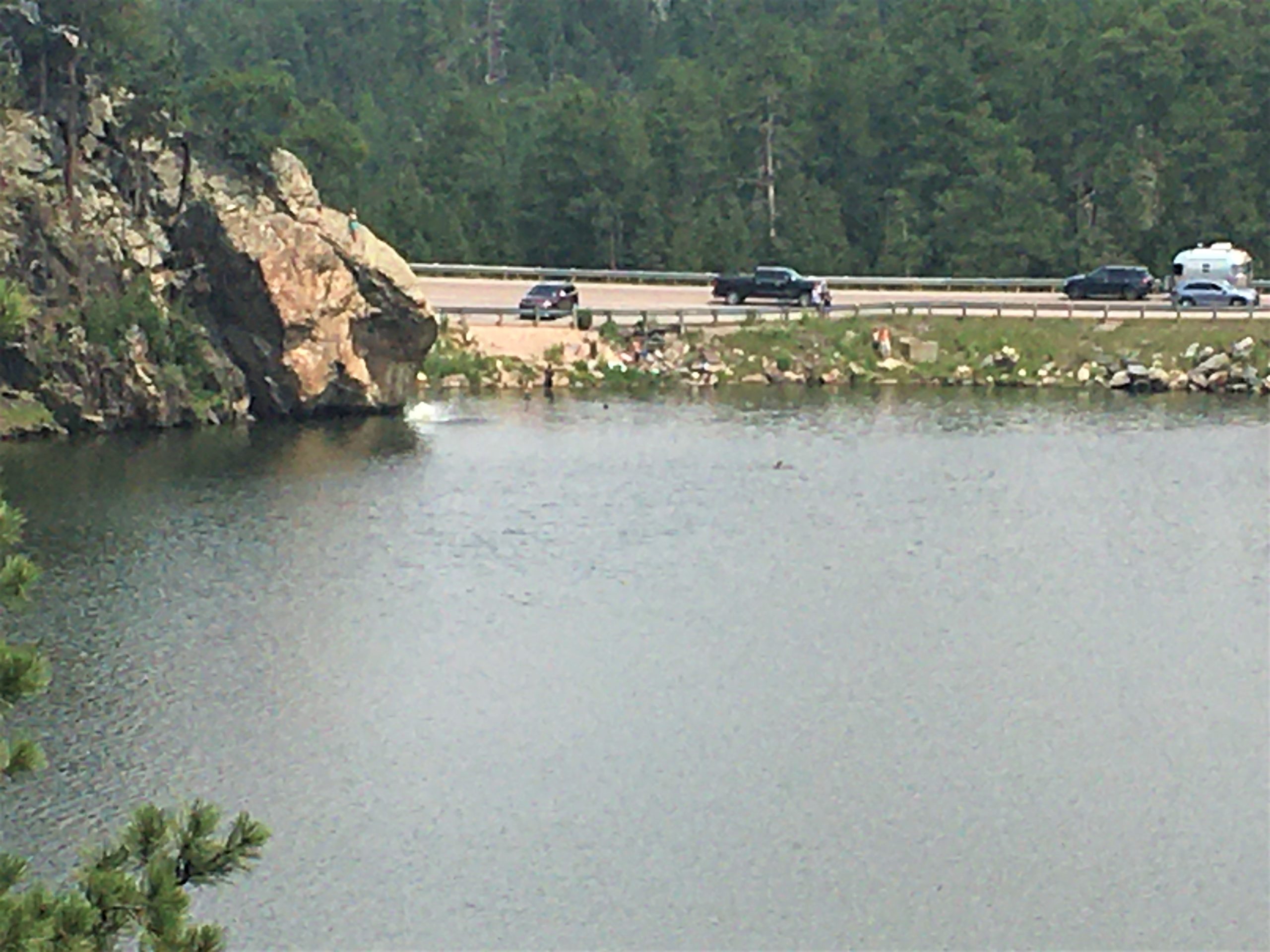
It’s much higher than the one on our hike the other day!
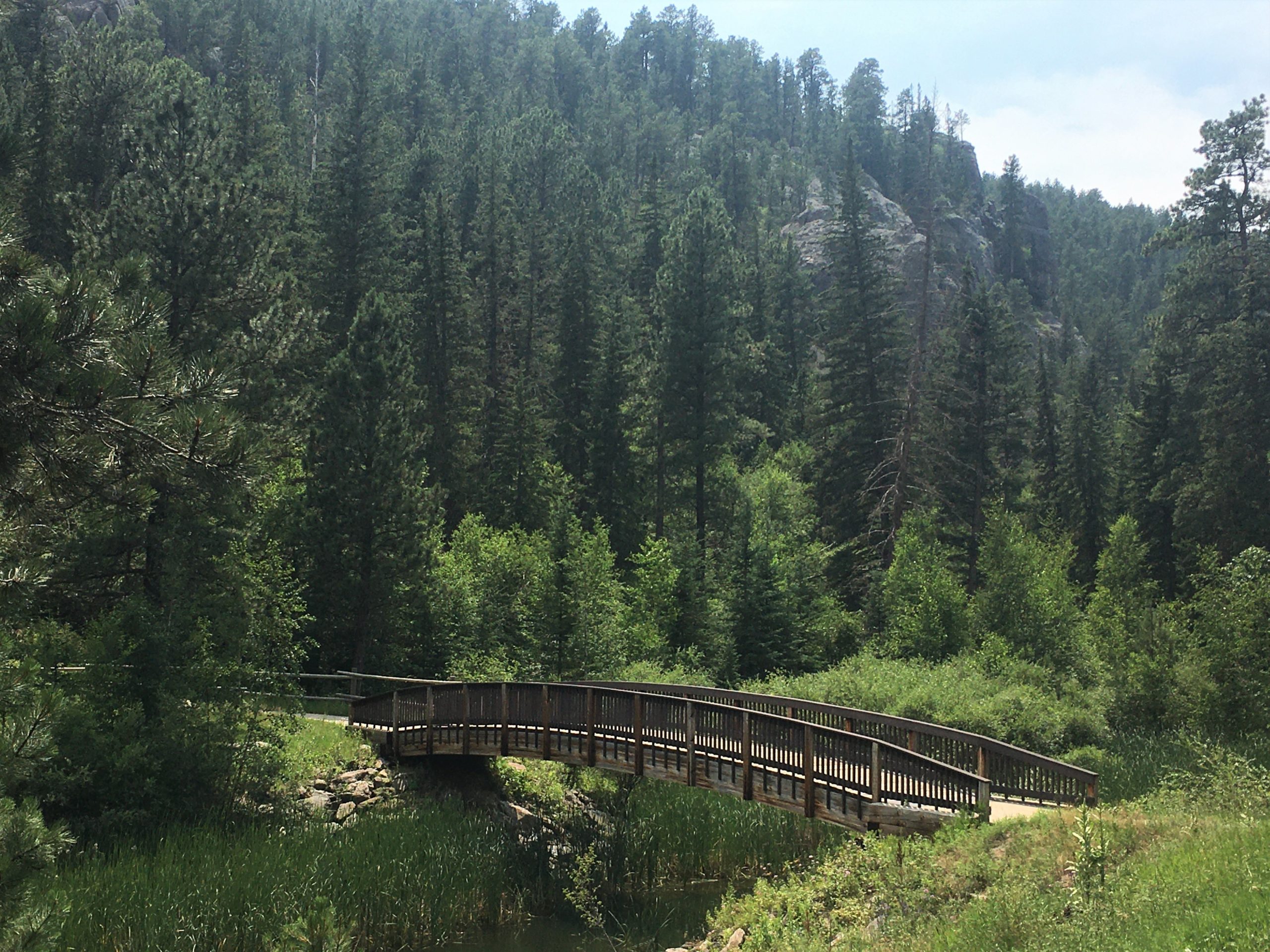
We drove home via some scenic country dirt/gravel roads, and along the way, came into contact with the old steam engine tourist train that runs between Keystone and Hill City.
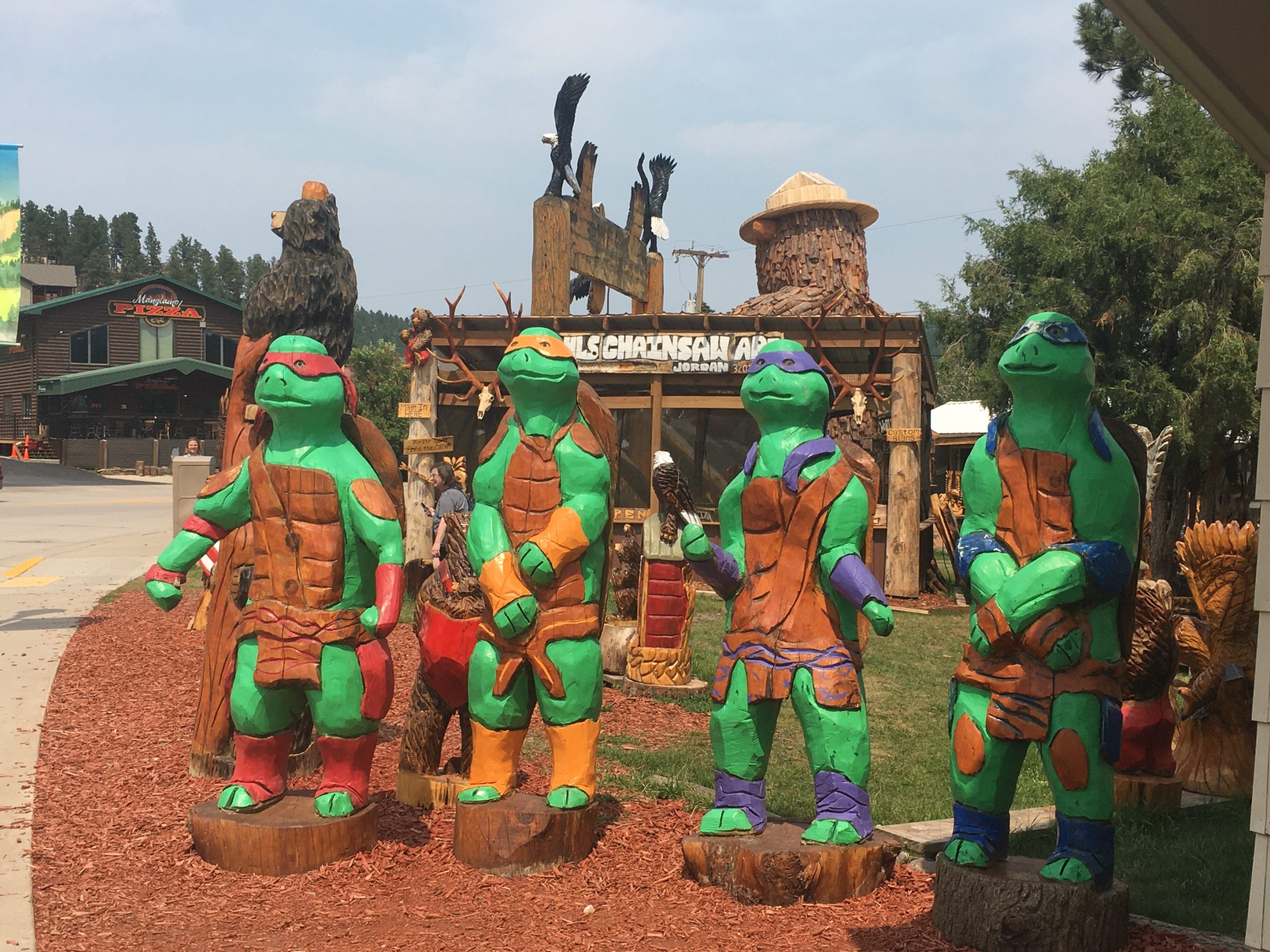
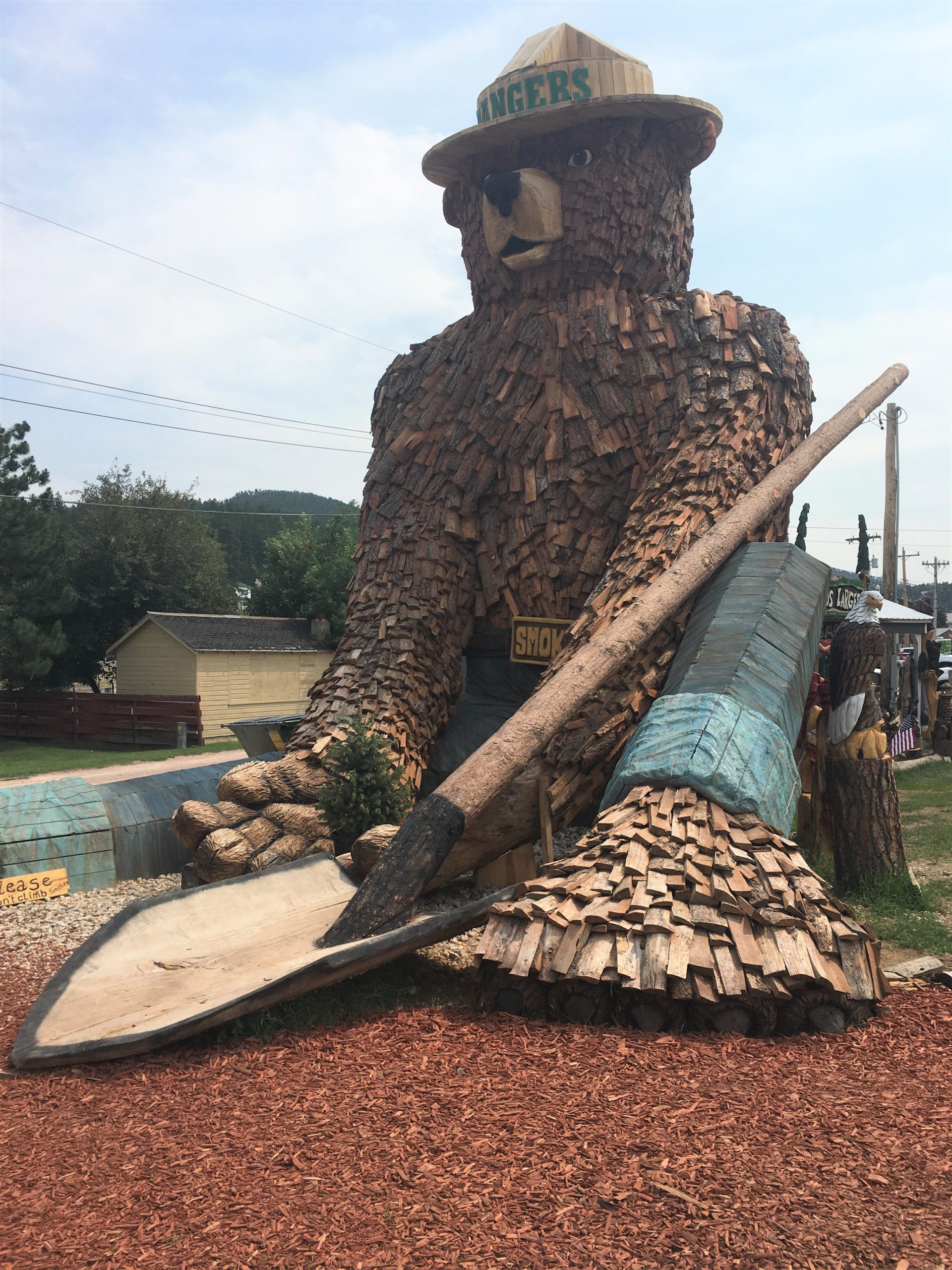
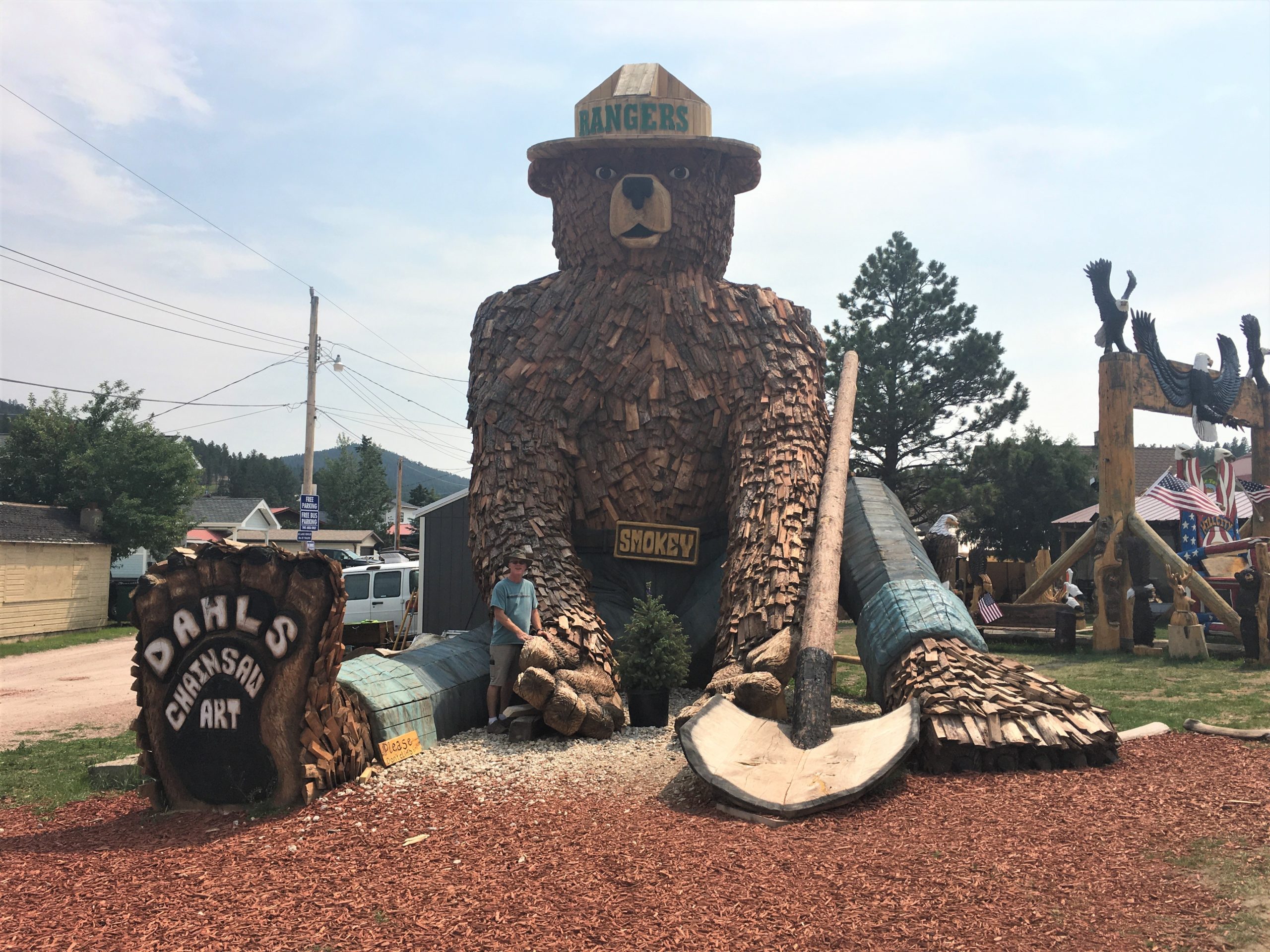

At one time, we considered paying the fare, but decided we could drive most everywhere the train travels.
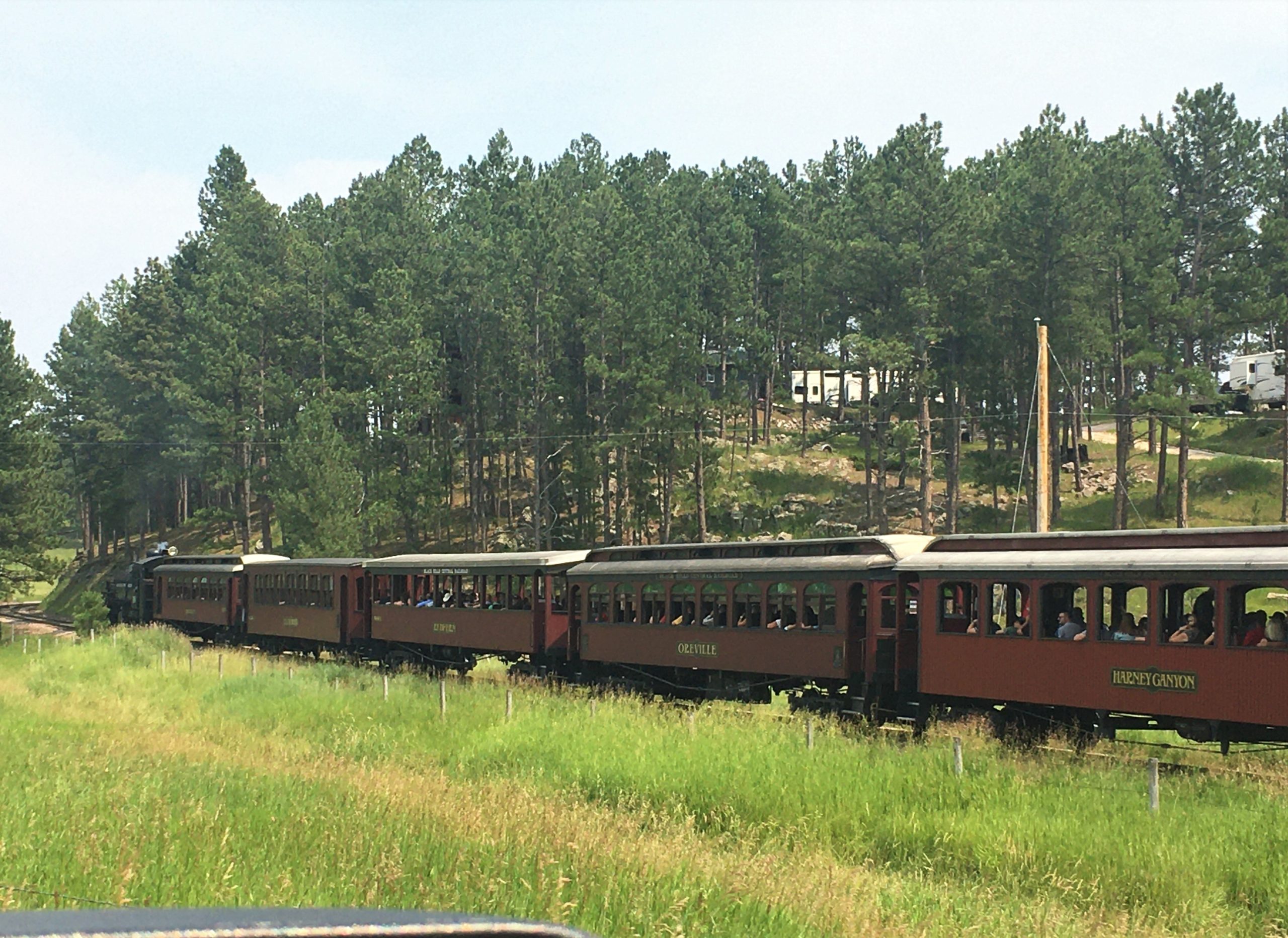
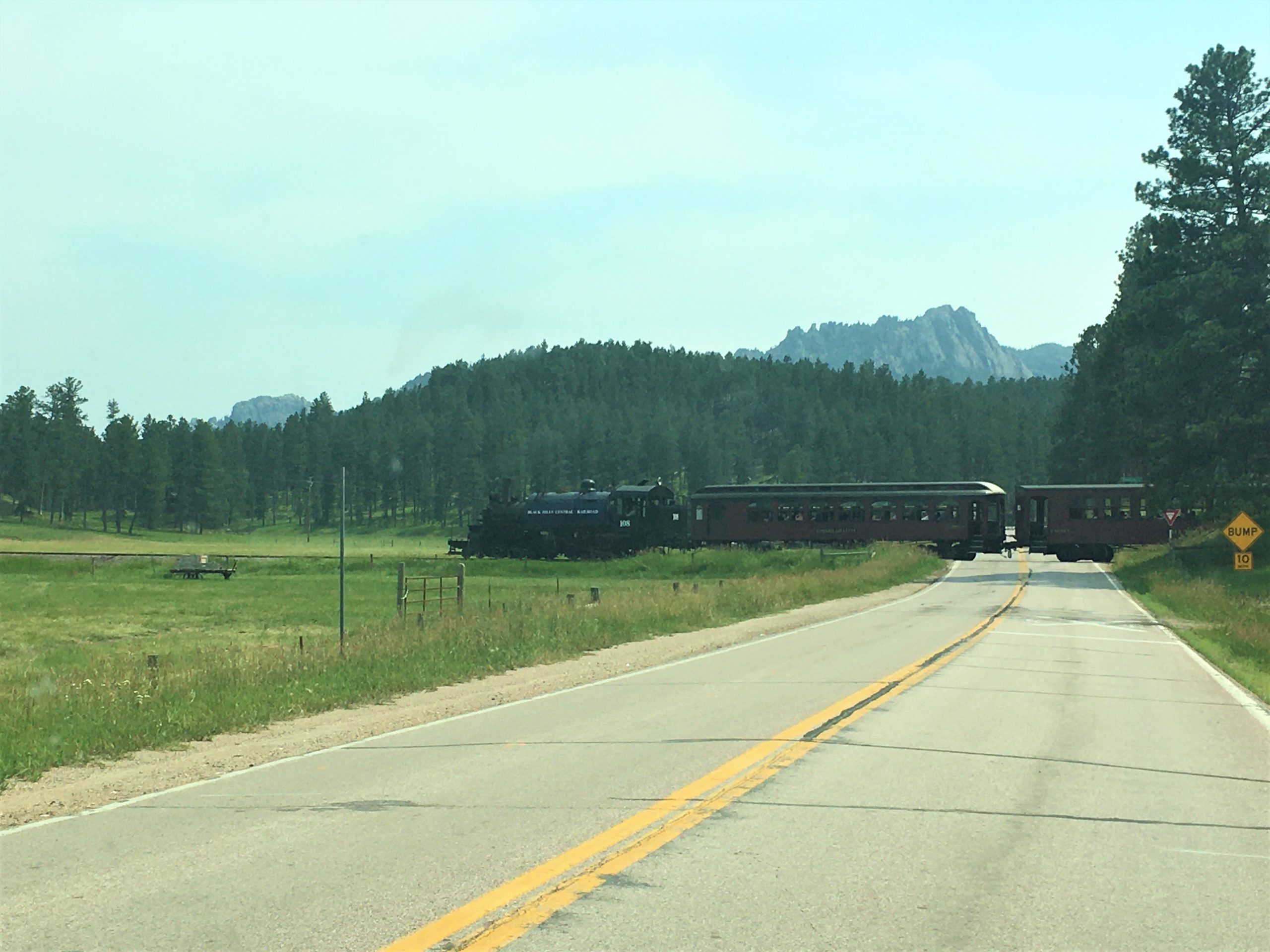
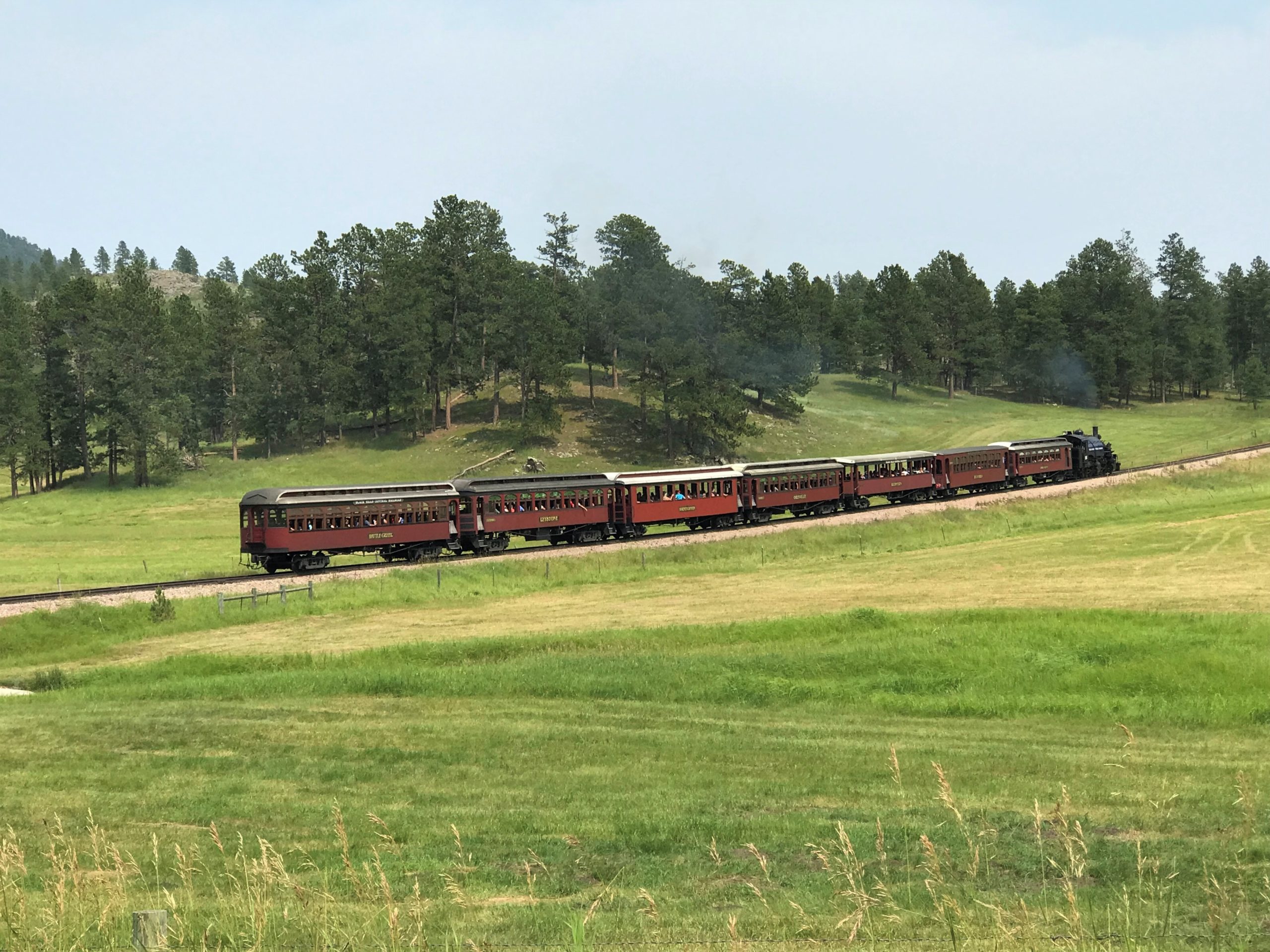
We got great pictures from our younger son, Kyle today!
Tomorrow, we’ll hike again. That seems to be a pattern for us here. 😊

